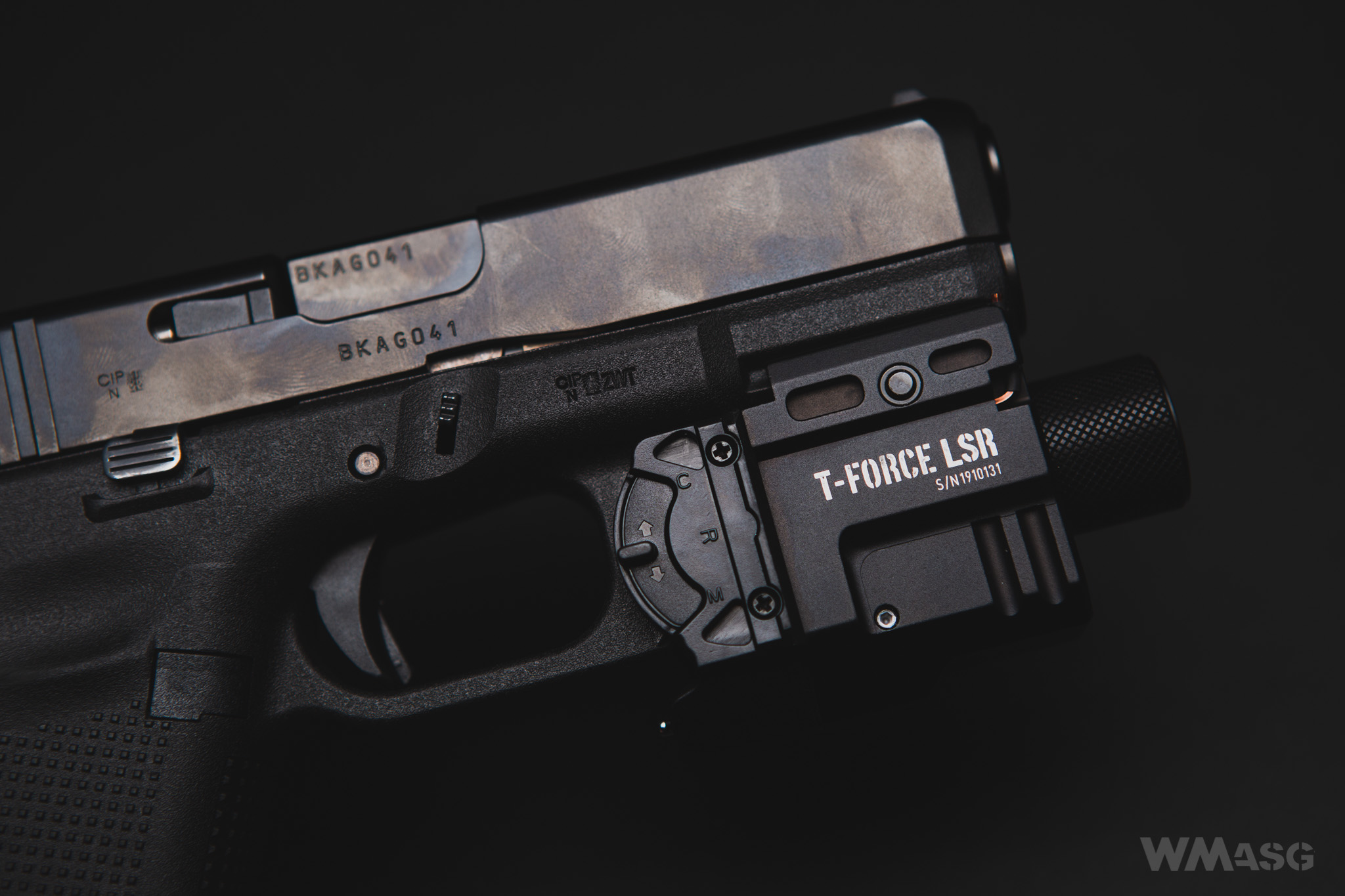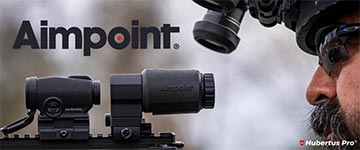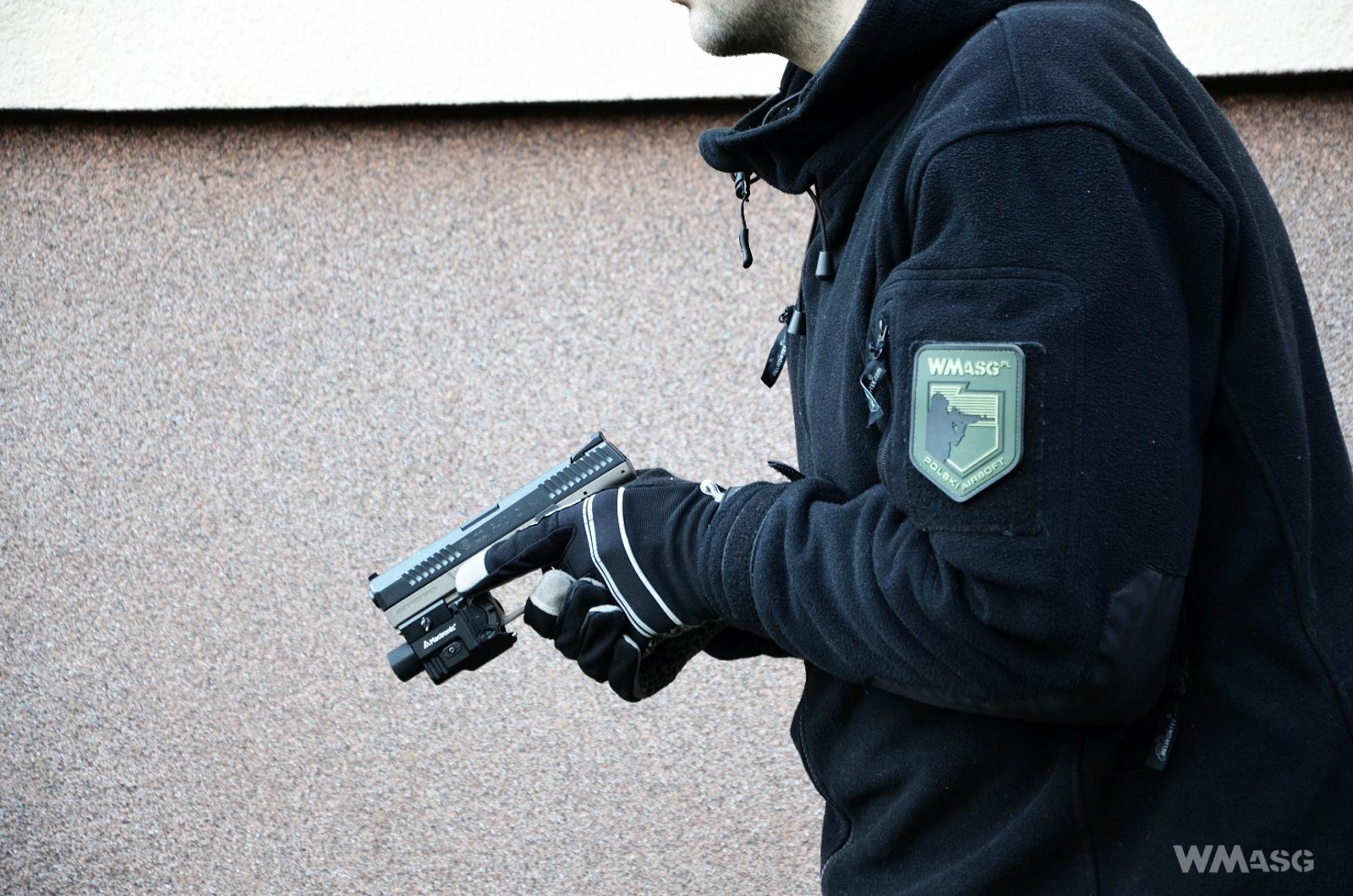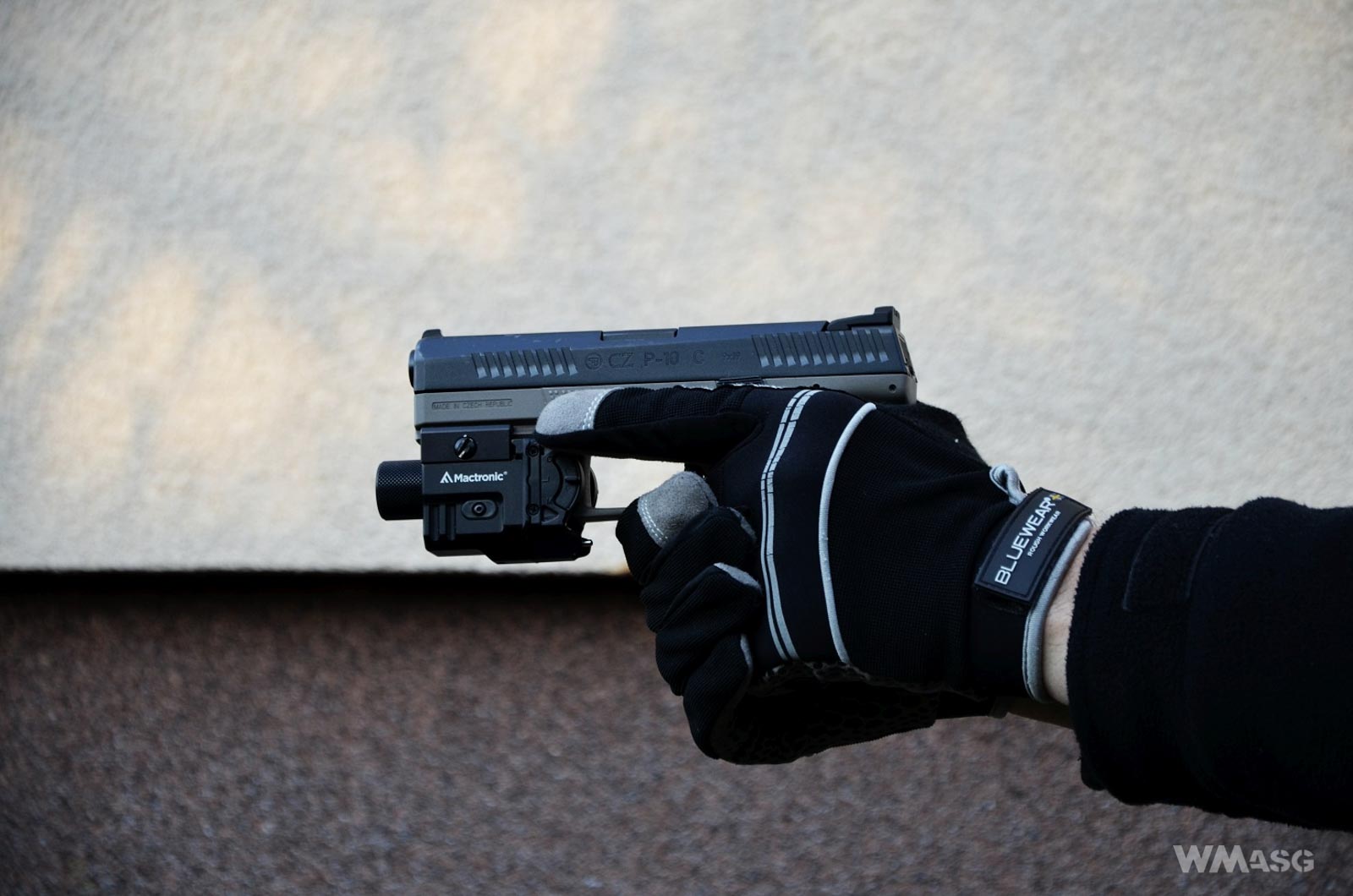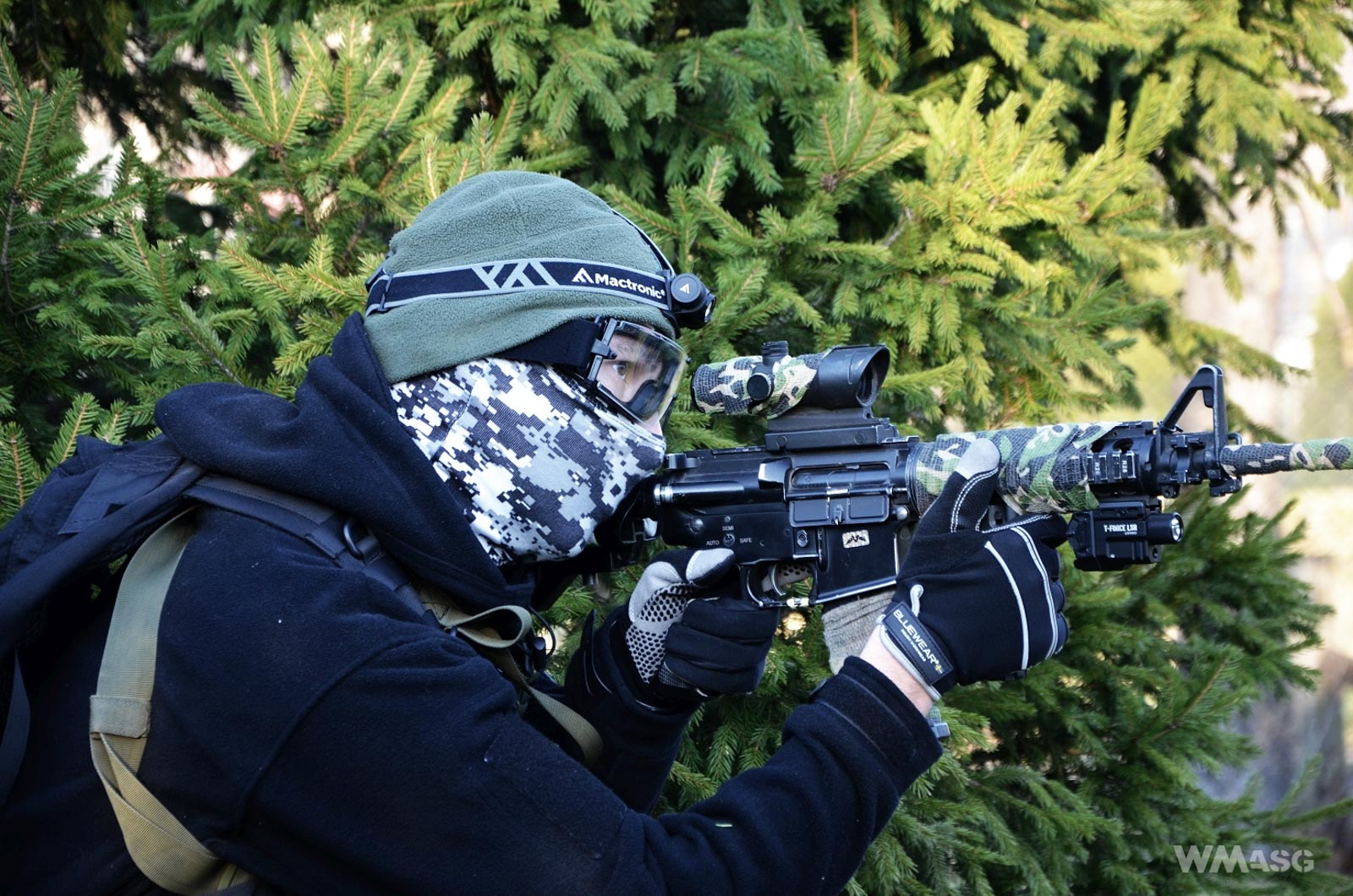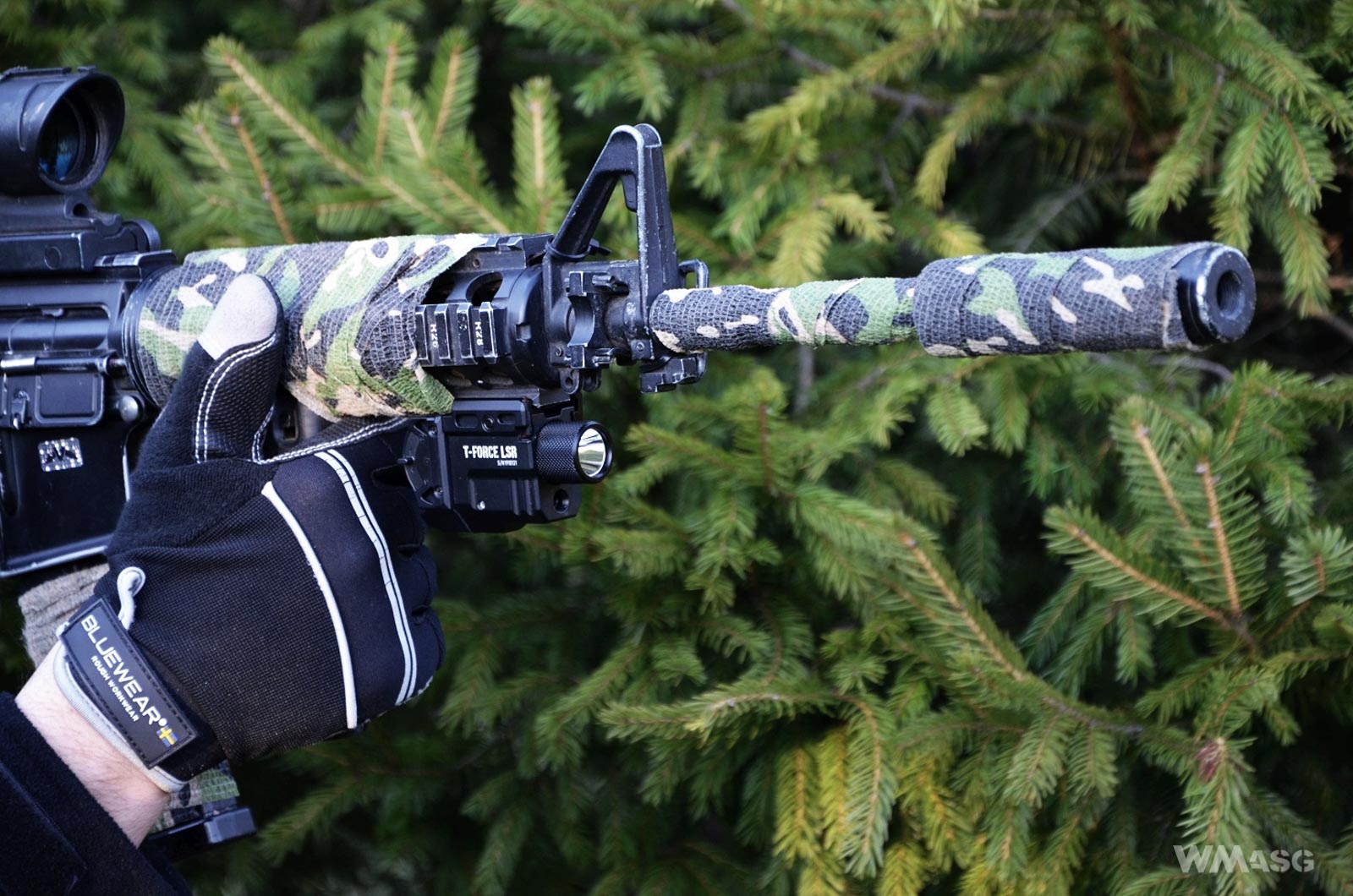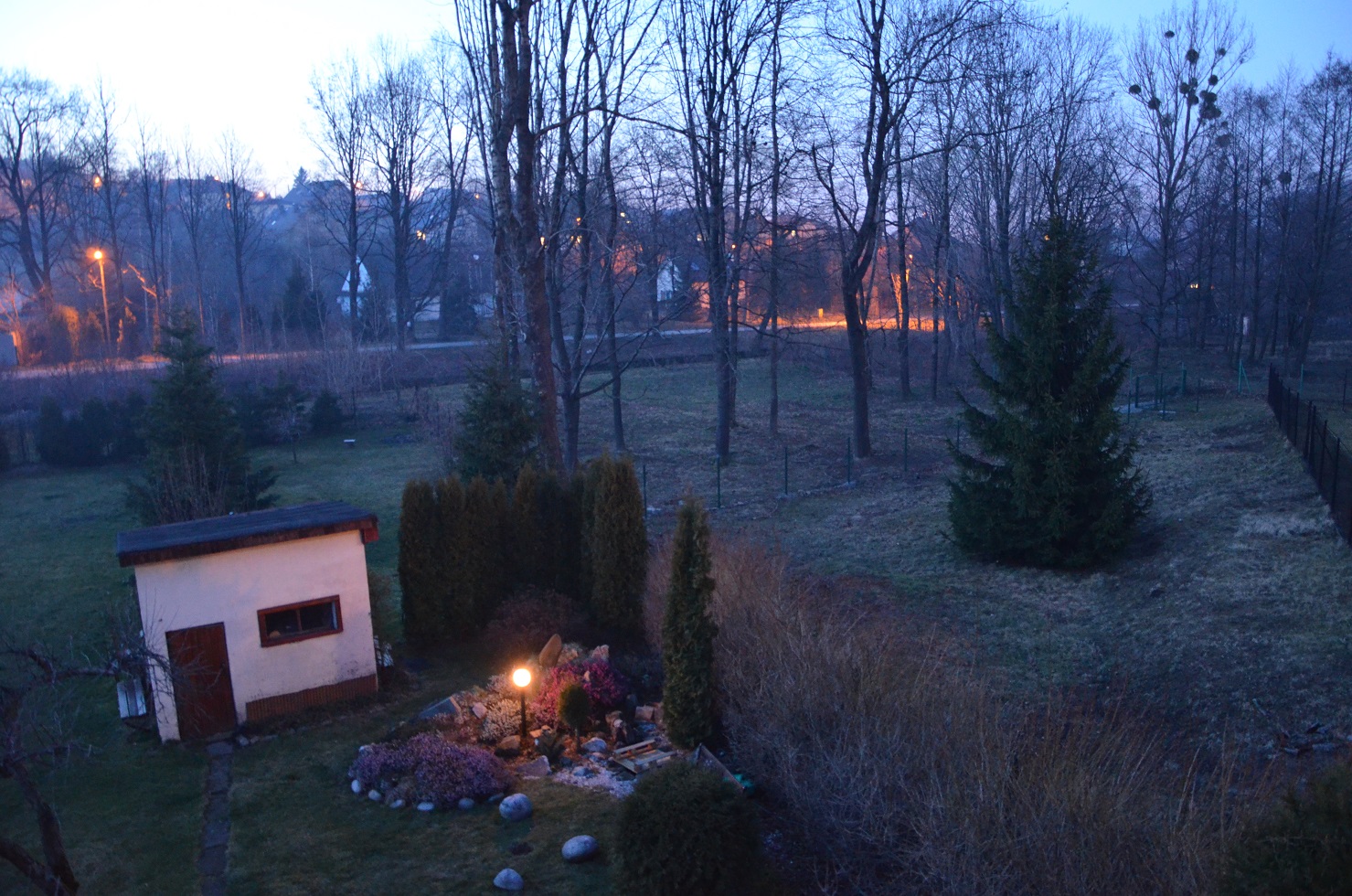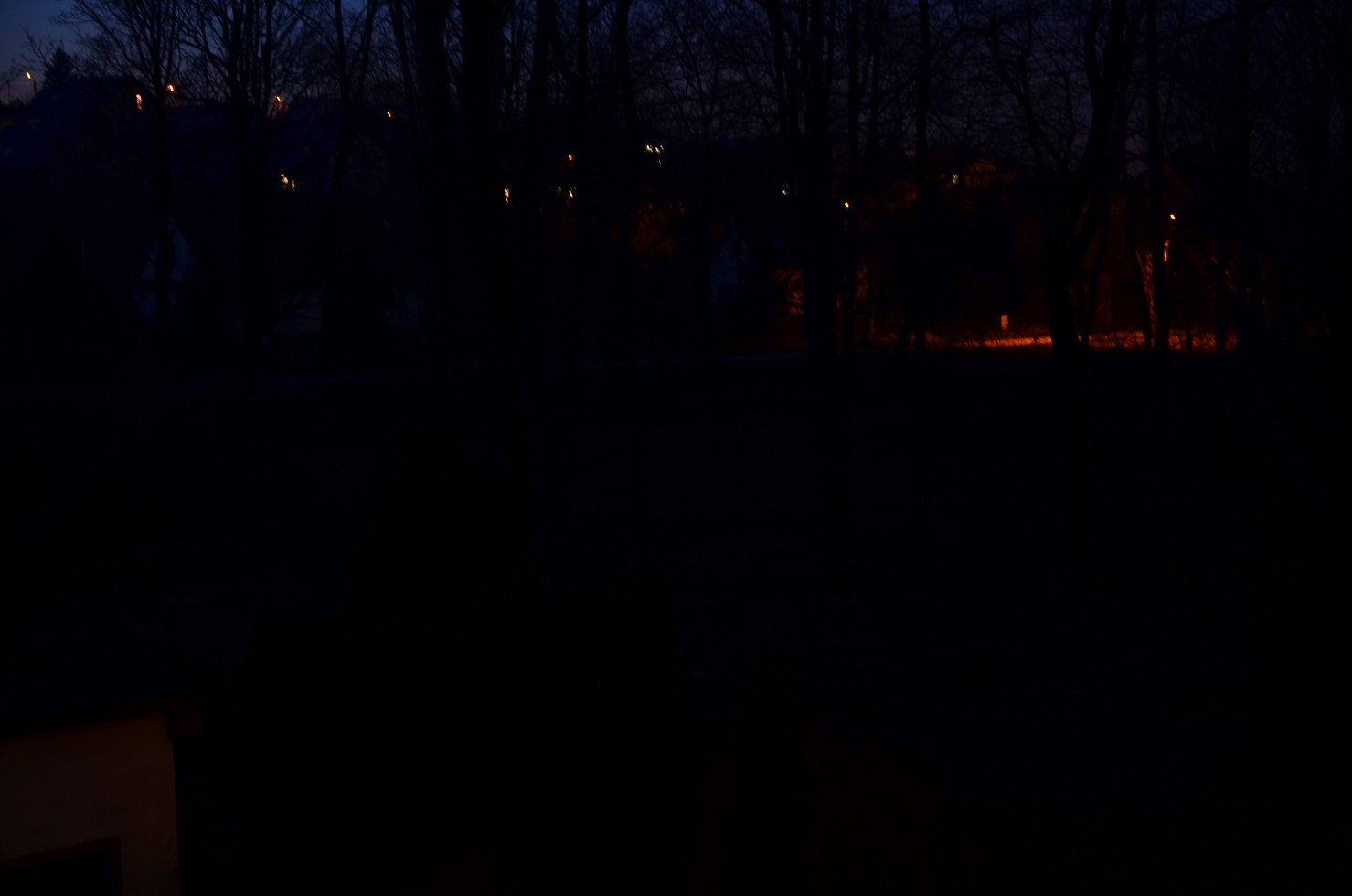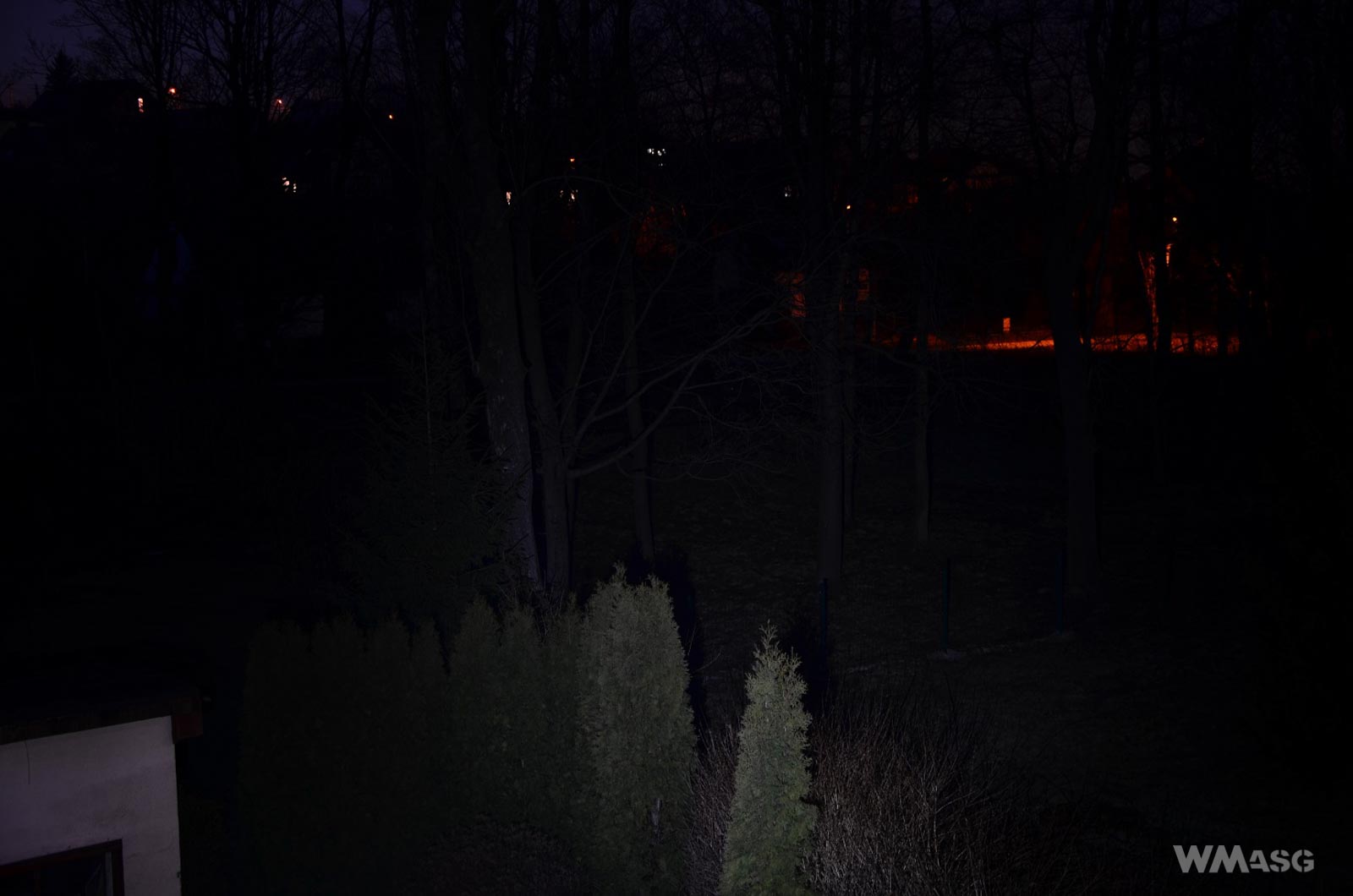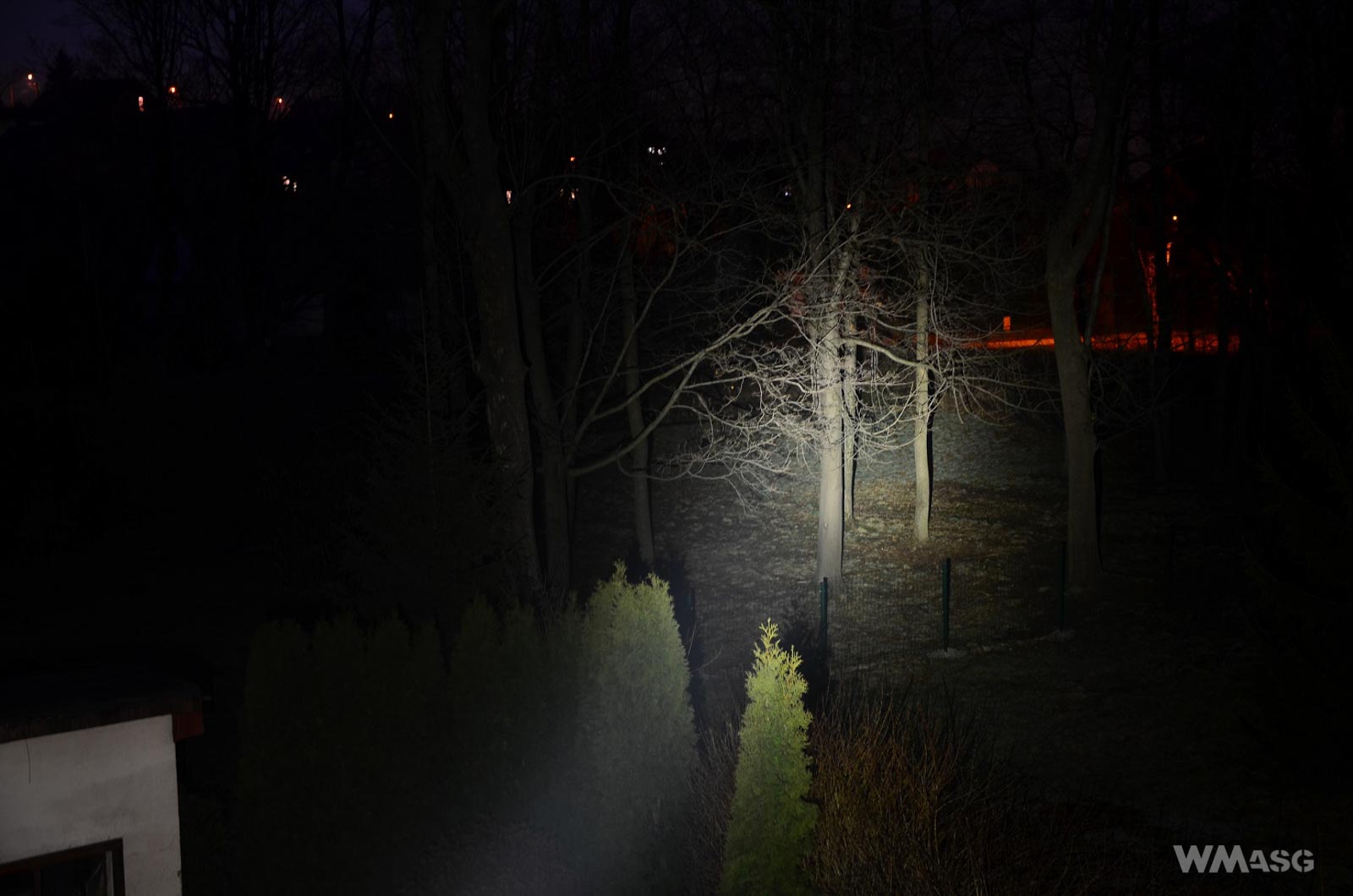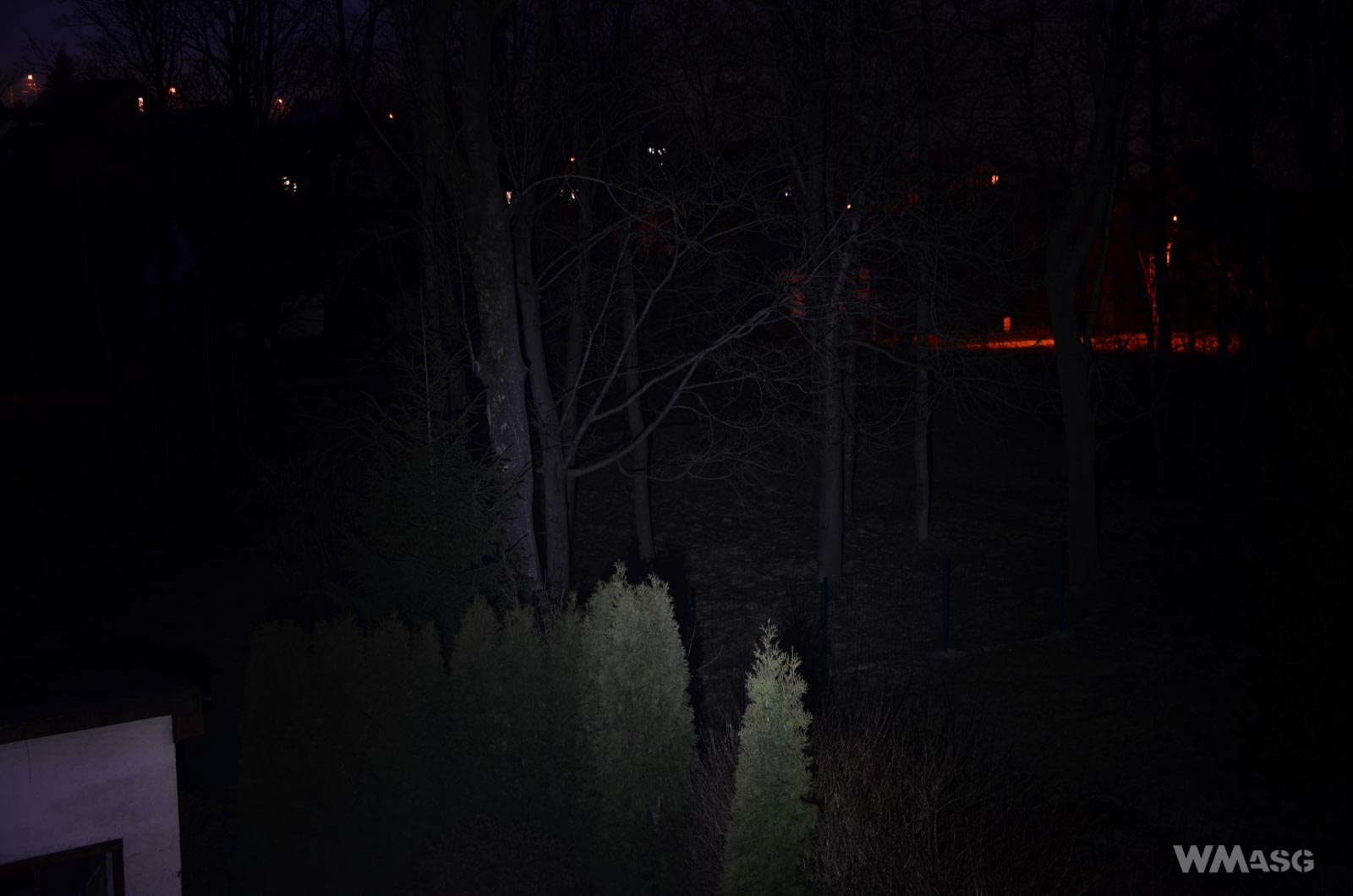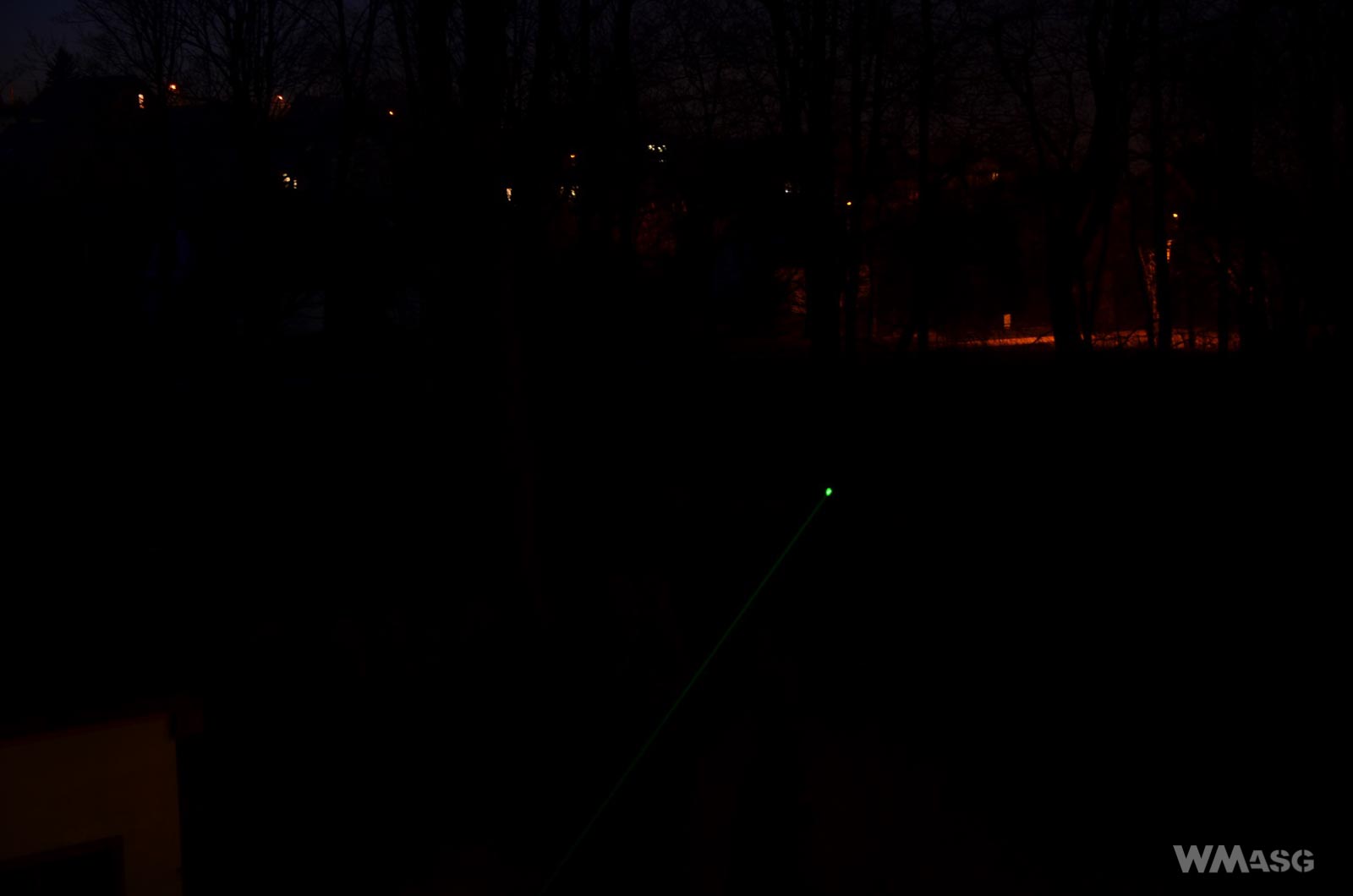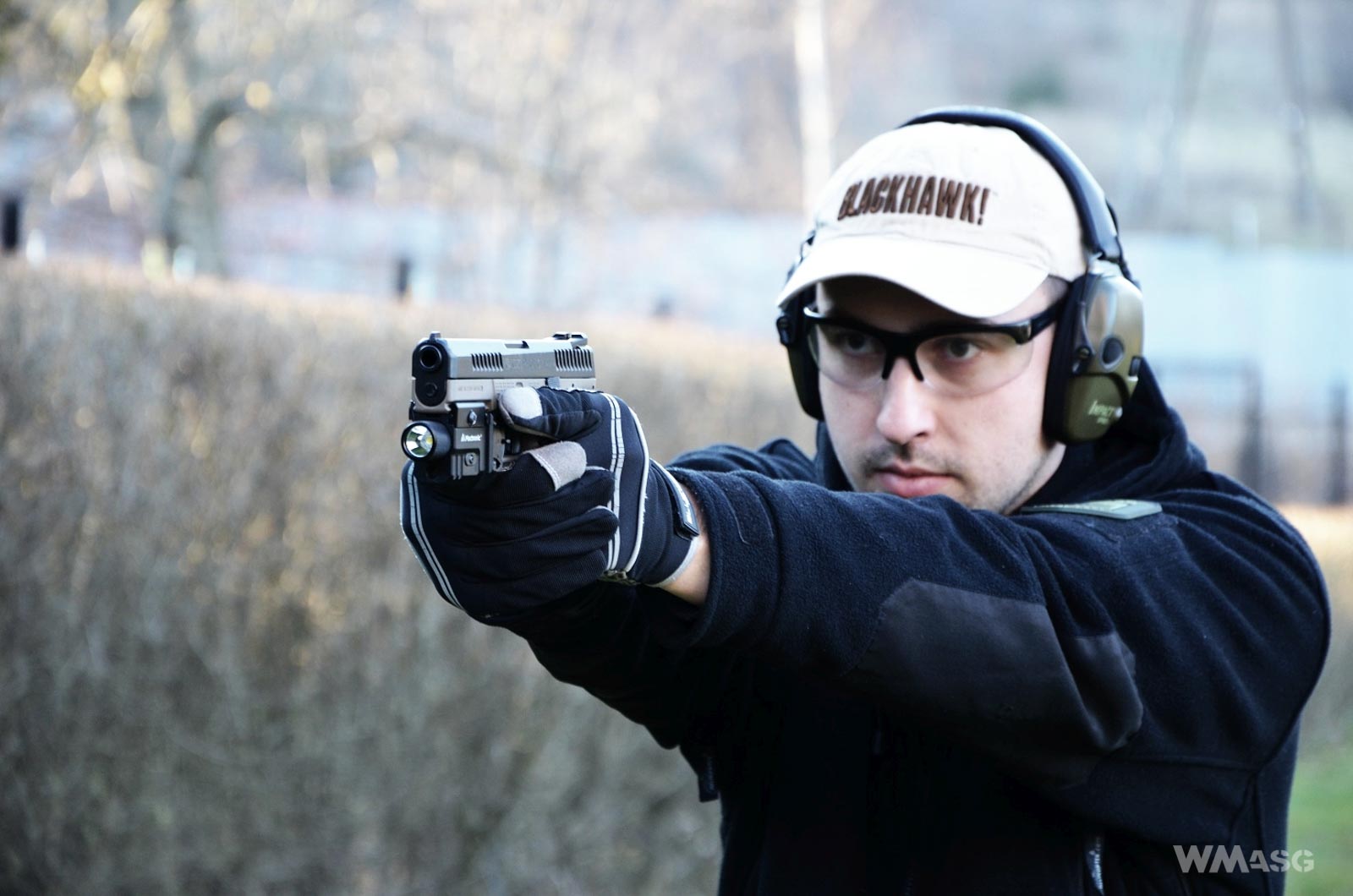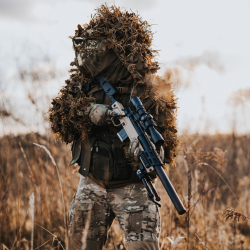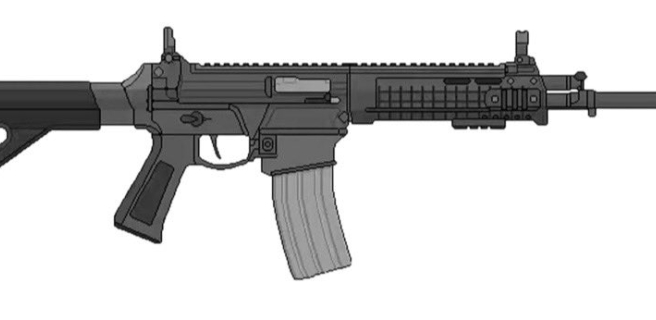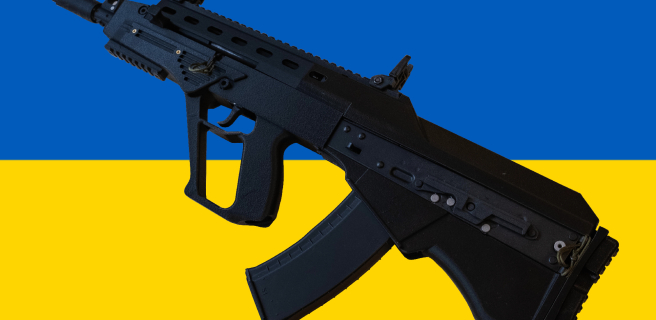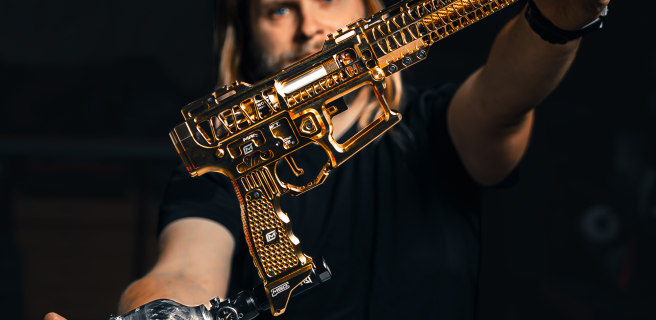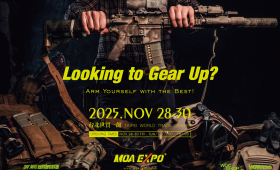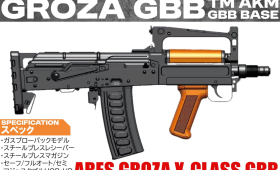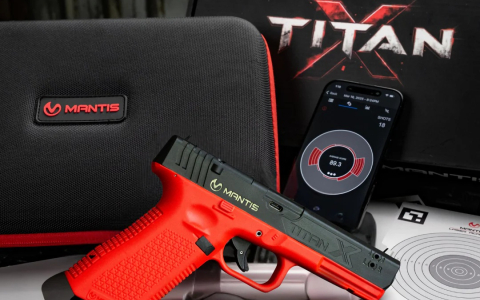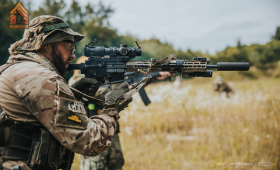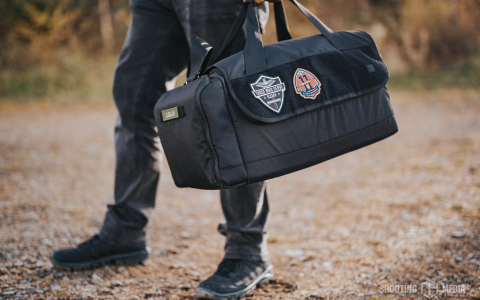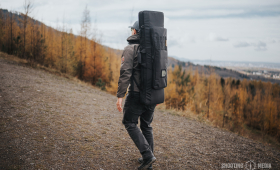Tactical flashlights with high luminous flux are accessories that are eagerly bought by airsoft players. In the case of traditional flashlights of this type, i.e. classic, compact handheld ones, whose dimensions and functions allow them to be mounted on a replica, the situation seems simple enough. With countless products available on the market, everyone will be able to choose something especially for themselves. In airsoft application, the matter is simpler because flashlights are not required to meet various resistances standards, but as they say, the more the better.
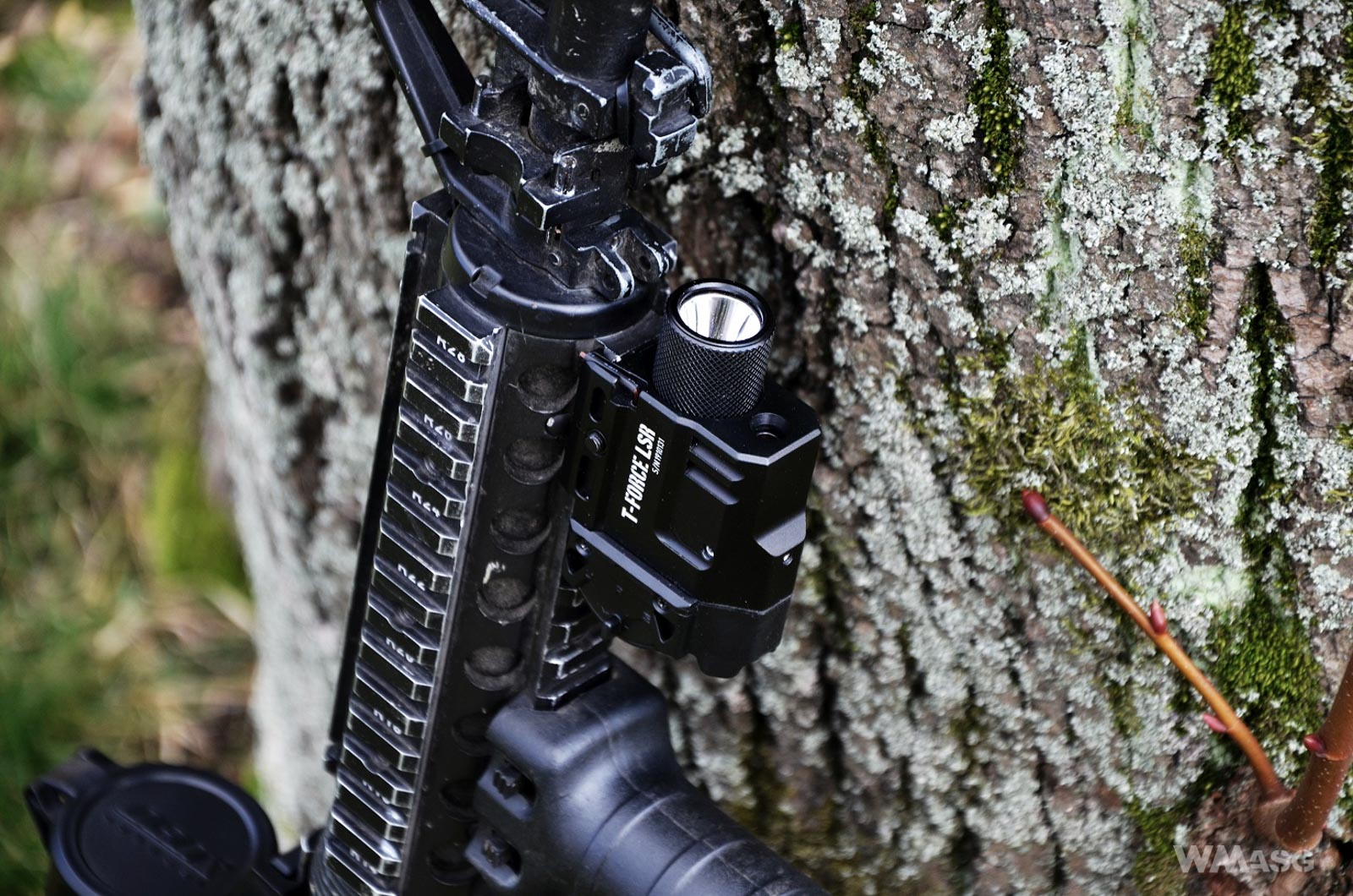
However, there is a specific group of tactical flashlights in which competition and the number of models available on the market are clearly smaller. Those are flashlights dedicated for mounting on handguns. Such products must be properly designed to ensure comfort and ease of use, while not compromising their quality and workmanship.
An even narrower group of such flashlights are models equipped with a laser sight. We got one of these products for testing. This is the Mactronic LSR module, belonging to the fairly recent line of T-Force tactical products. As usual, in my test I will focus mainly on airsoft application of the product. Due to the current epidemiological situation and the status of many shooting ranges, I did not have much opportunity to do reliable tests using firearms.
THE MACTRONIC T-FORCE LSR
I have already revealed a lot of details about the Mactronic module in the paragraphs above. The T-Force LSR is a compact tactical flashlight with a laser sight, designed for use on handguns.
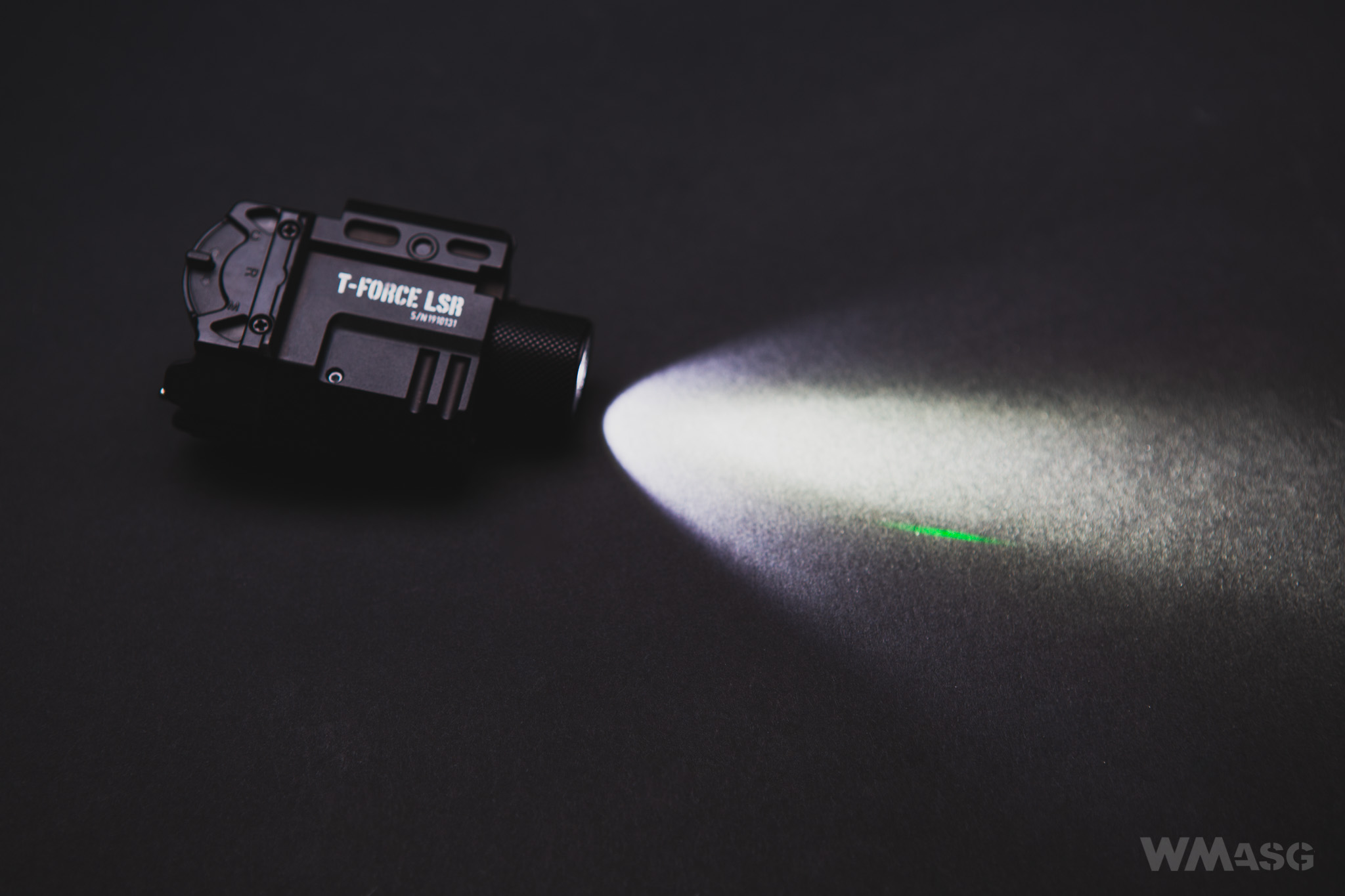
The word "handgun" is not exaggerated here. The manufacturer claims that this device is dedicated to cooperate with such models as Glock, P-99, P-83, etc.
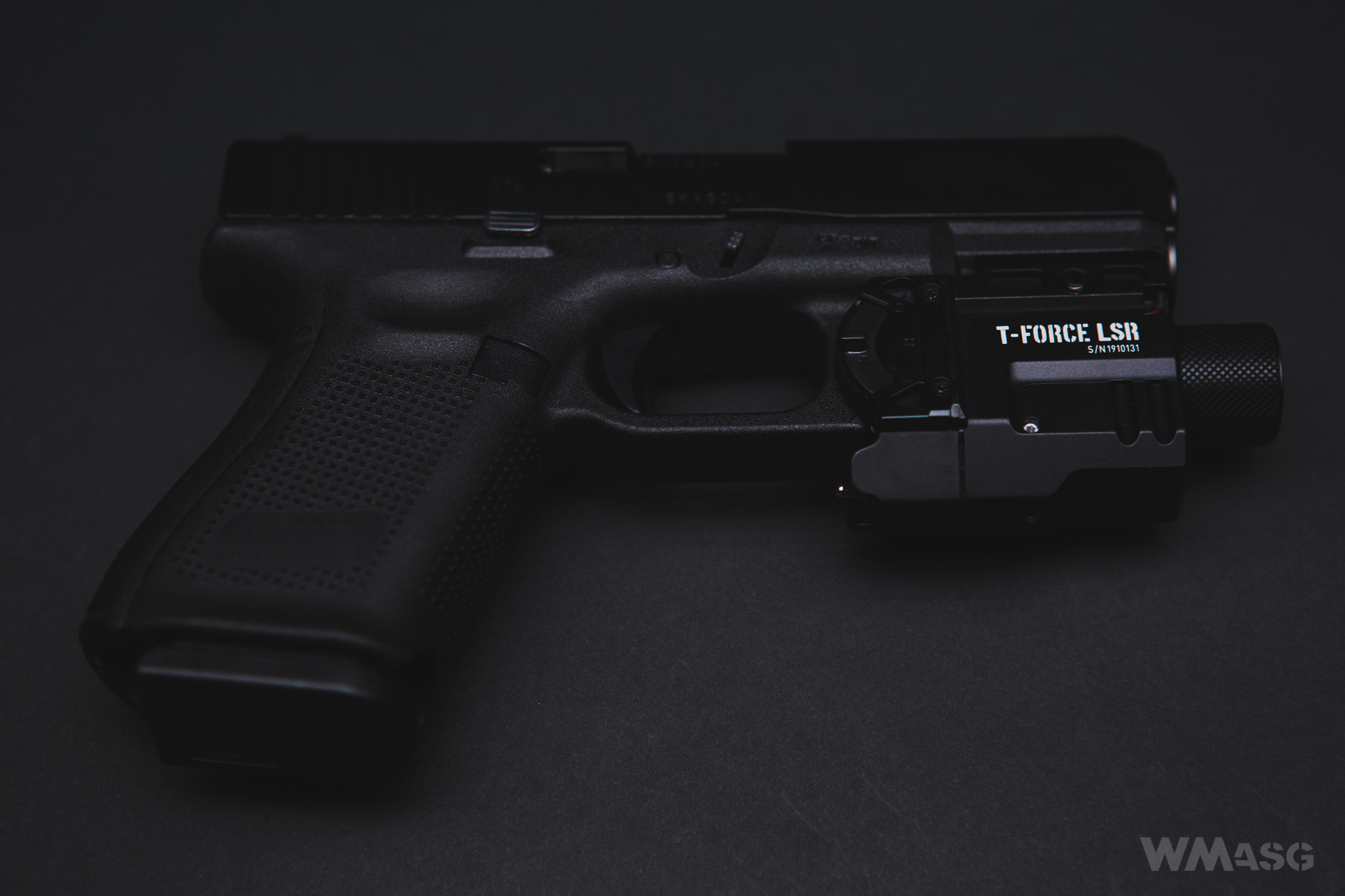
The LSR module is the first product of this type made by the Mactronic company that I had the pleasure to test, and also one of two that are currently available in the tactical T-Force line. The second module, the PSL, despite its very similar design, differs in many features. In it, the laser sight was abandoned, in return by giving the user various illumination modes, including strobe. Differences also occur in, among other things, values of luminous flux or water resistance. For the people who do not like the functionalities of the tested LSR model, Mactronic gives an alternative, the PSL.
PACKAGING AND CONTENTS OF THE SET
The box in which the Mactronic T-Force LSR is delivered made a slightly worse impression on me than the one in which the recently tested T-Force H1L headlamp was sent. Just like the aforementioned headlamp, the LSR is placed in a box kept in dark colors. However, the atmosphere of mystery is negated by a cut-out and a transparent blister, which immediately reveals the appearance of the product. Despite the knowledge of what is inside, the box still has a minimalist form, although this time it is easier to find relevant information.
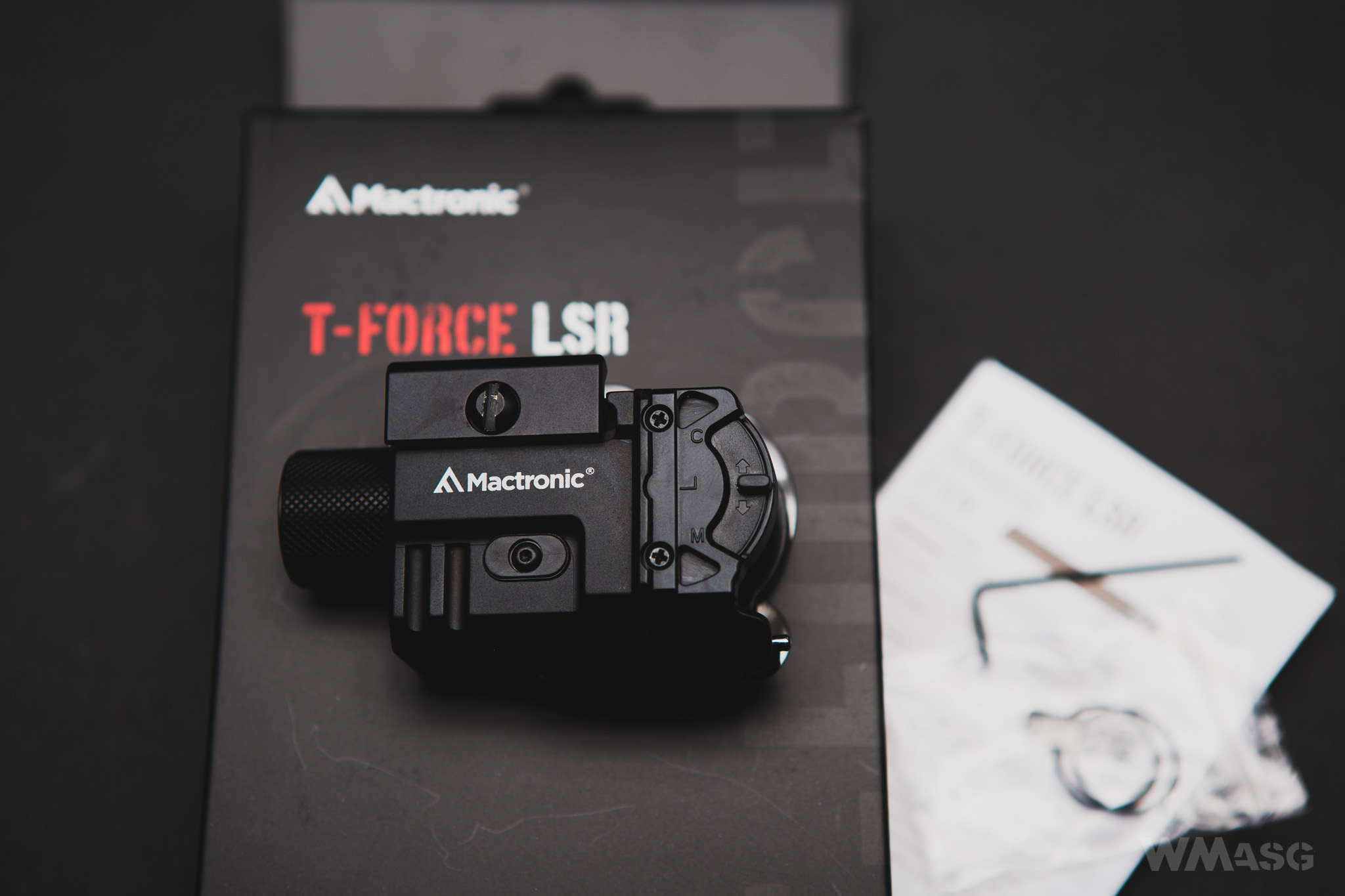
The markings on the box mention who the module manufacturer is, what it is named and what it is intended for. You can also get to know its technical specification.
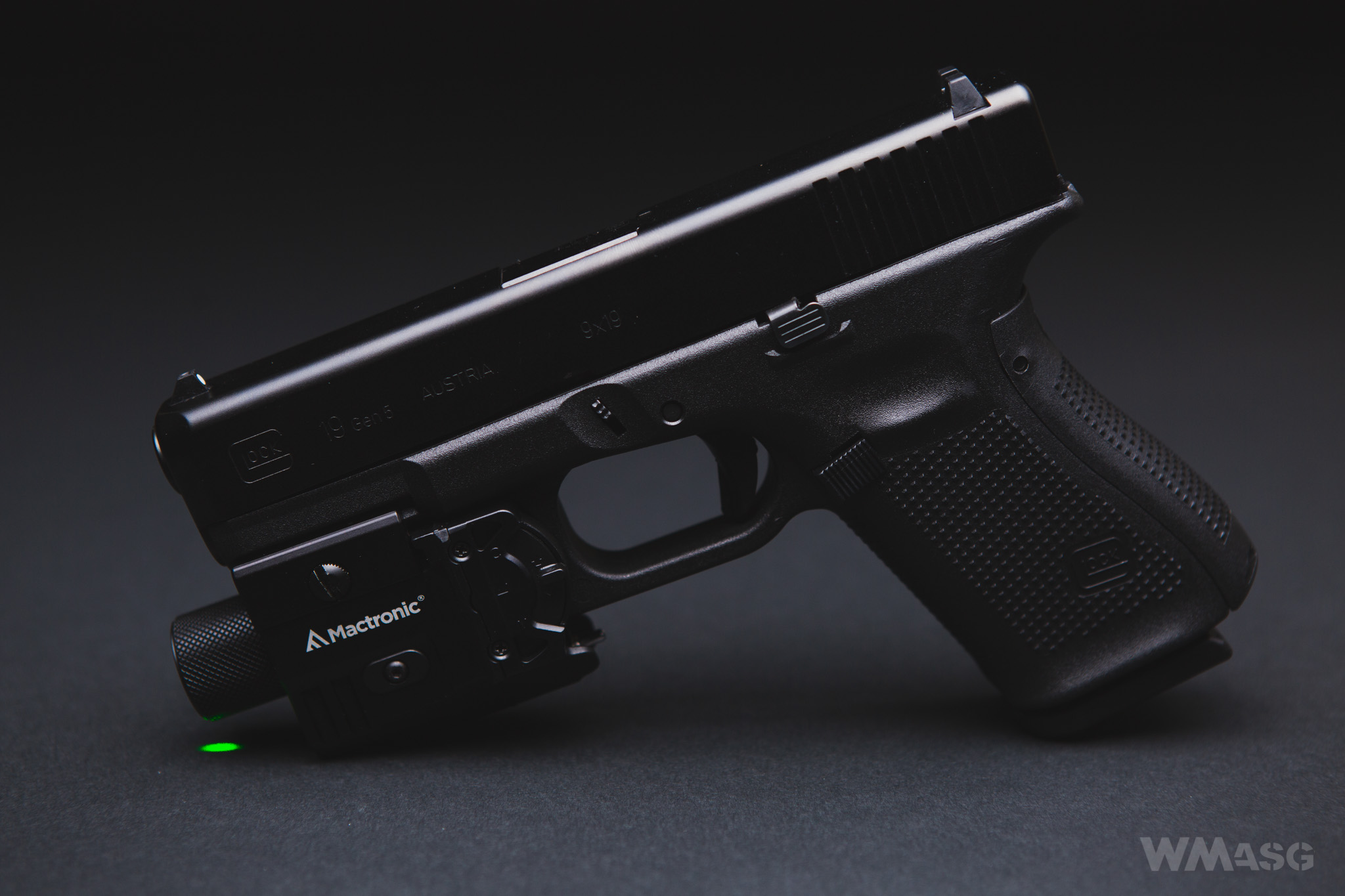
Inside the box, in addition to the module with an integrated mount, there is a basic set of accessories: an Allen key for laser adjustment, a CR123A battery, a spare gasket set, a additional bolt for the mount and a user's manual with information about the manufacturer's warranty (2 years).
APPEARANCE AND MANUFACTURING QUALITY
In terms of its design and appearance, the Mactronic T-Force LSR is significantly different from classic tactical flashlights. Still, it's easy to distinguish three main parts of the device: the flashlight's head, the housing and the switch module. The equipment is designed in such a way that all of its parts are compact.
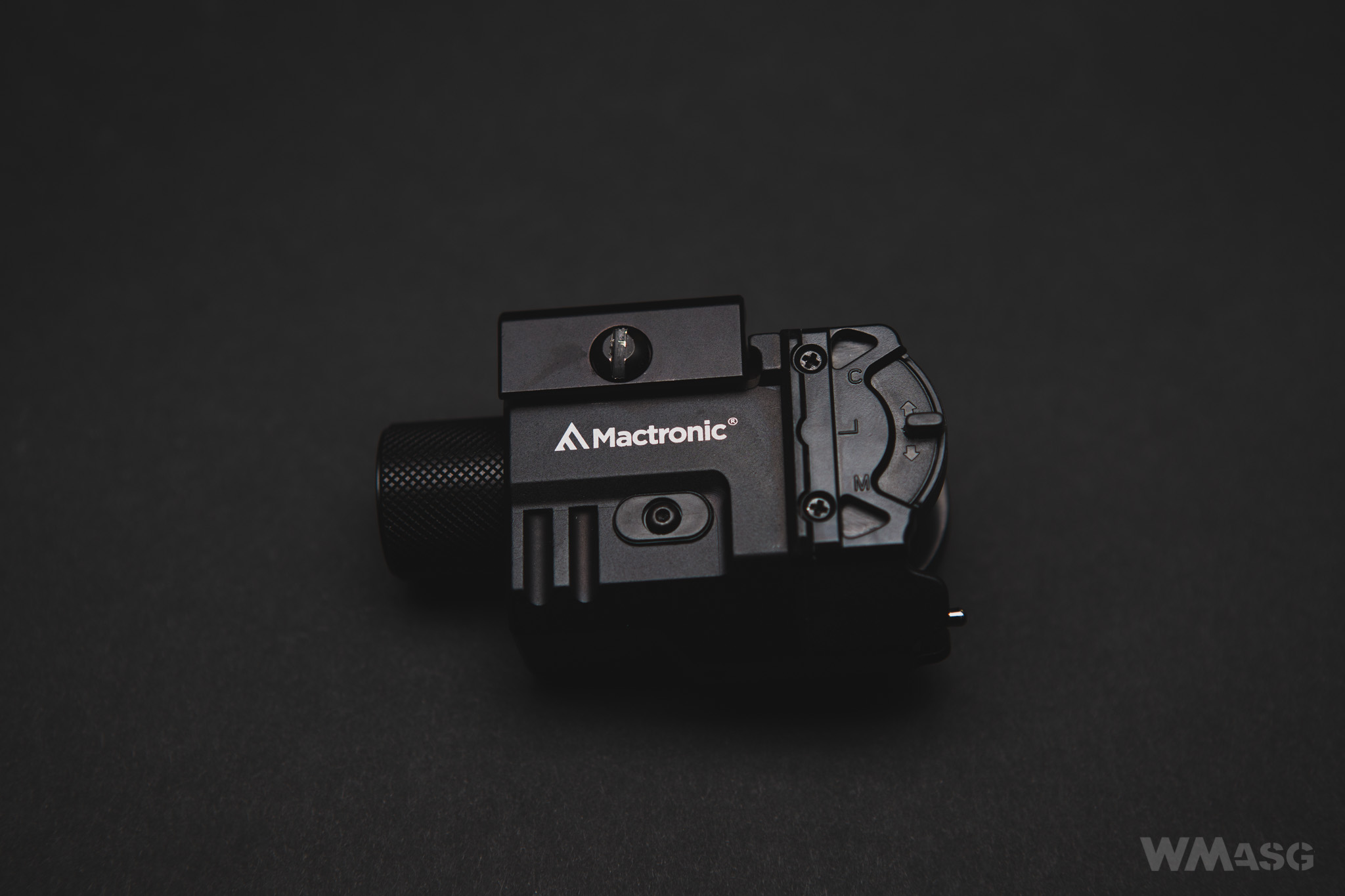
When it comes to the extreme dimensions of the device, its length closes in 76 mm, width is 33 mm (or 35 mm, counting with the switch levers), and height 48 mm (quite a lot, but this is due to the laser sight). The head has a diameter of about 21.5 mm. The weight of the entire module is 118 g (without batteries).
The head of the flashlight is made of aircraft grade aluminum, knurling is visible for better grip (unscrewing the head allows access to the battery compartment). Looking from the front, you can see that its sides are thick. It hides a lens and a smooth reflector with a diameter of about 15.5 mm. At its bottom lies a rather old type of emitter: LED CREE XM-L2 U3. Not so long ago, a similar type of diode (bin U2) was one of the most popular in tactical flashlights that had great price to value ratio. After unscrewing the head, the user gains access to battery compartment that can accommodate a CR123 battery or a 16340 cell (RCR123 battery) located in the housing. Adapting the flashlight to work with a replaceable battery is a great advantage. The battery compartment is finished in black. The power cell slides downwards towards the center of the housing. The thread on the head is secured with a gasket. It is worth noting that the LSR module meets the IPX4 waterproof standard. This is a relatively low standard, however, it protects the device against weather conditions, such as light rain. Perhaps the low level of water resistance is caused by the presence of a laser sight. The similar PSL model meets the higher IPX6 waterproof standard.
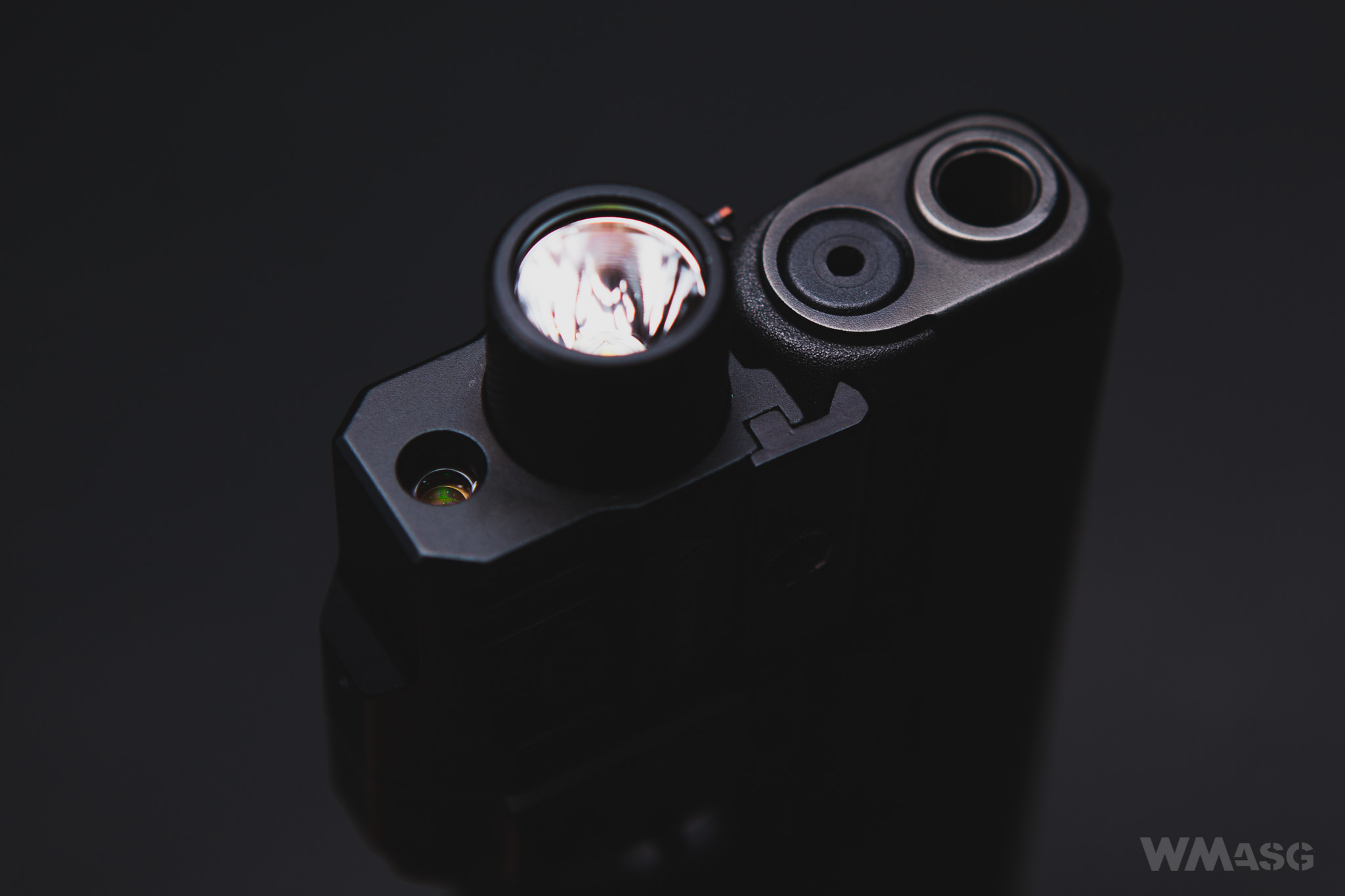
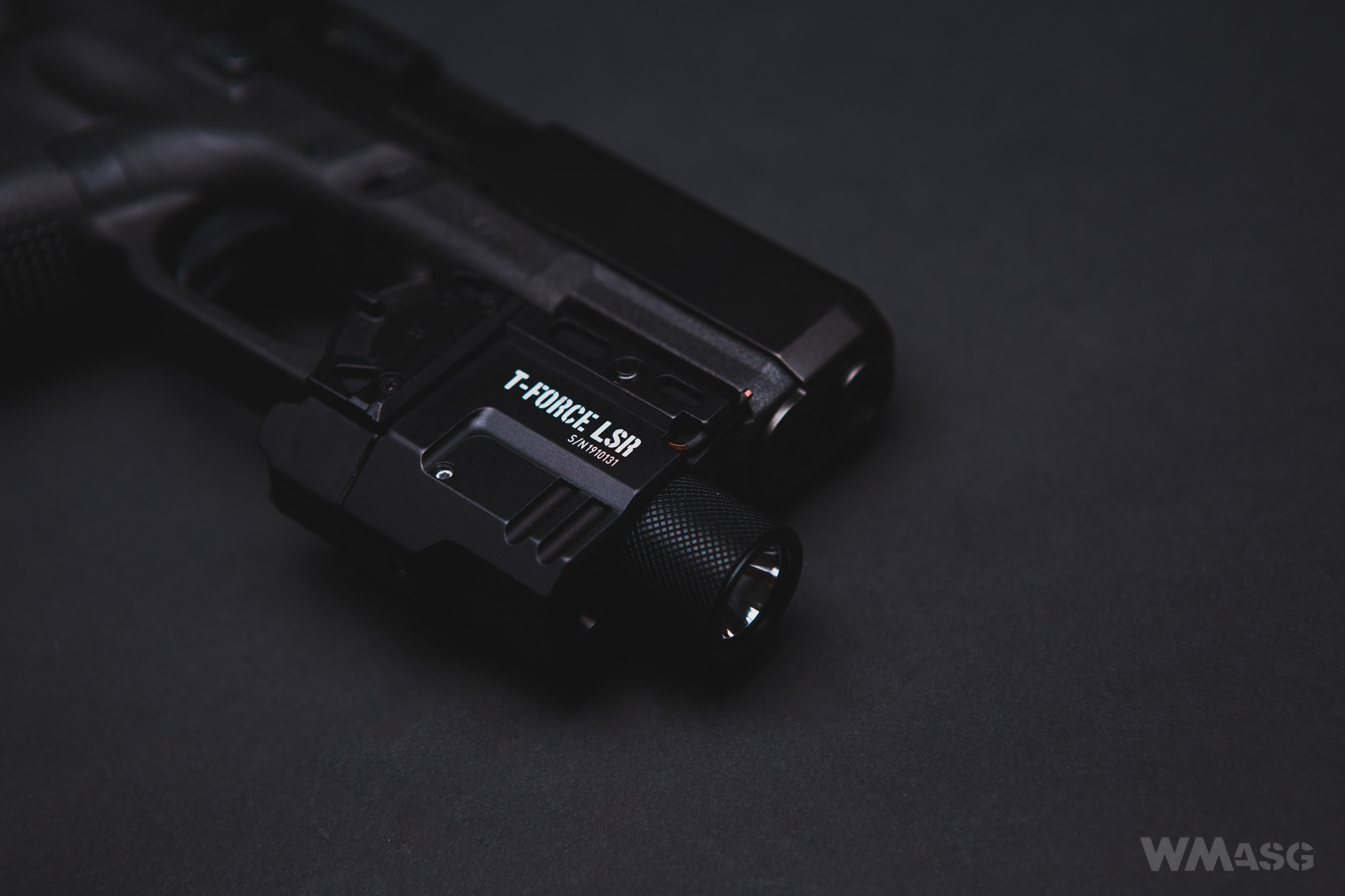
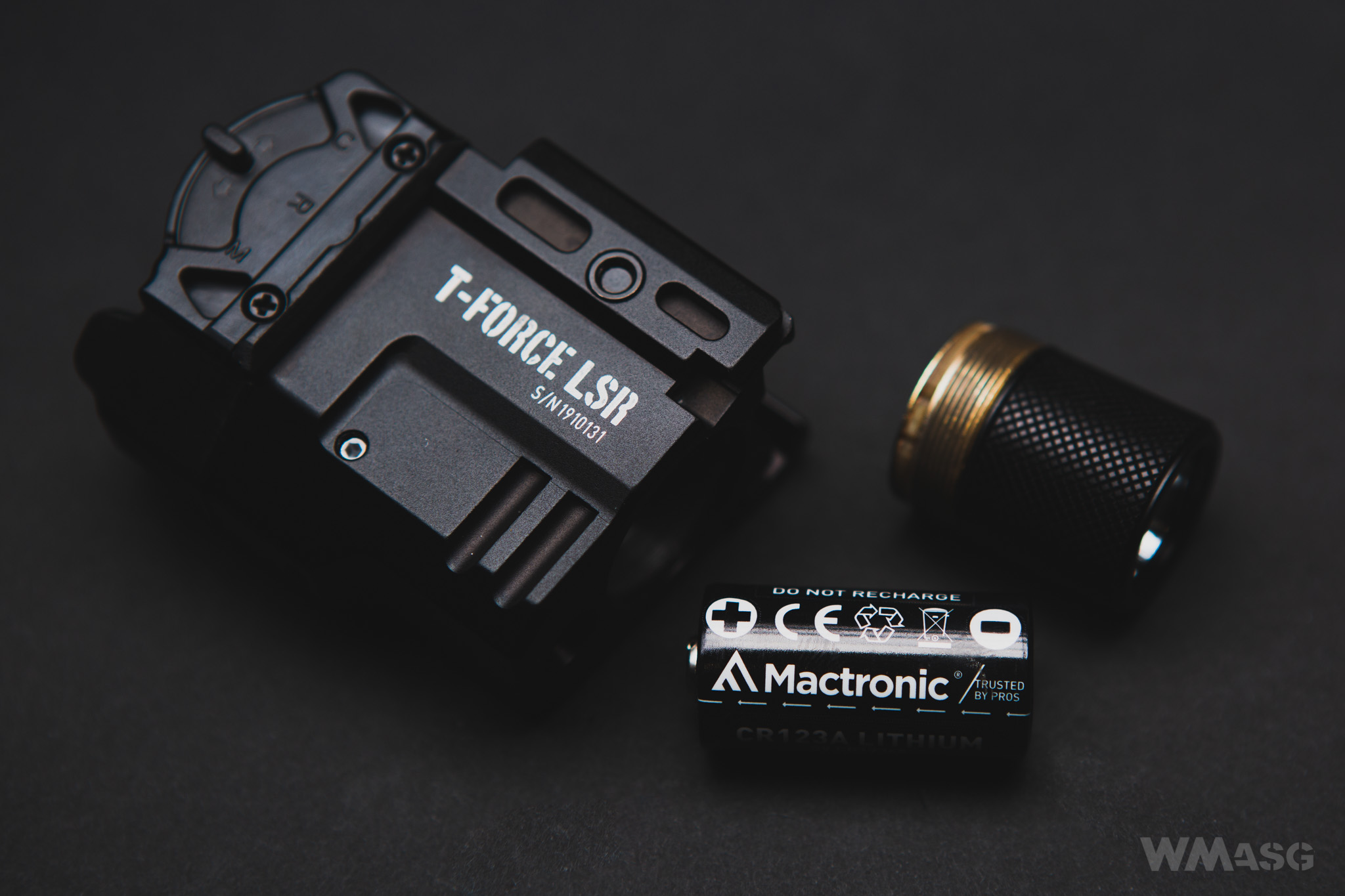
Moving from the inside of the housing to the outside, you can easily see that it serves the most functions. In addition to the ones already mentioned, it also provides a base for mounting the module on a weapon, houses the laser sight, its adjustments, and also provides storage for a small Allen key to change the laser settings (thanks to the heat shrink band, the Allen key sits firmly in its place and does not slide out) . The housing is made of aircraft grade aluminum, it has the manufacturer's logo, series and model designations, and a unique serial number.
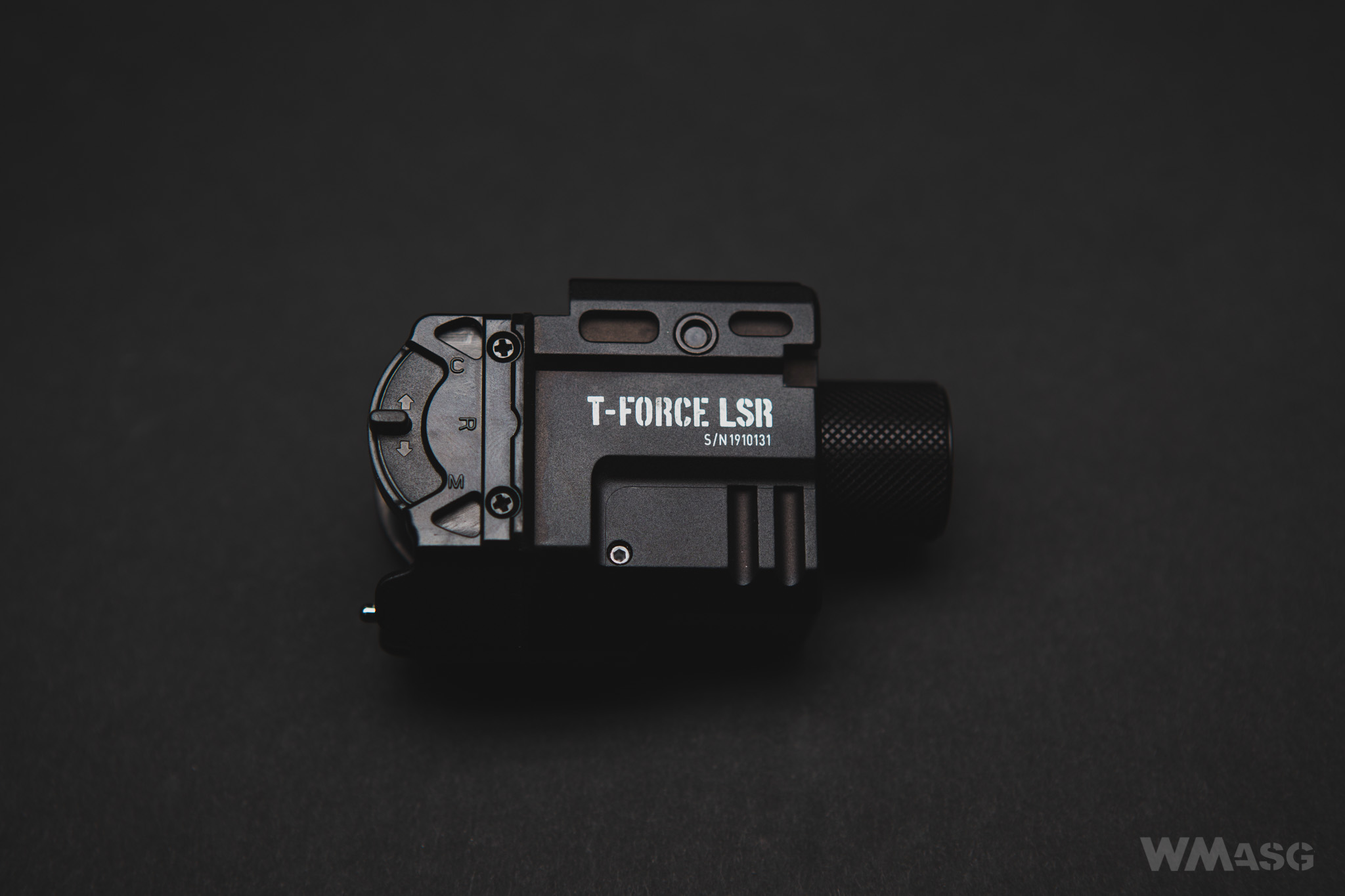
The laser sight is integrated into the housing to such an extent that only a small lens reveals its presence. The position of the dot is adjusted with the help of an Allen key. This method is very popular, with all its advantages and disadvantages.
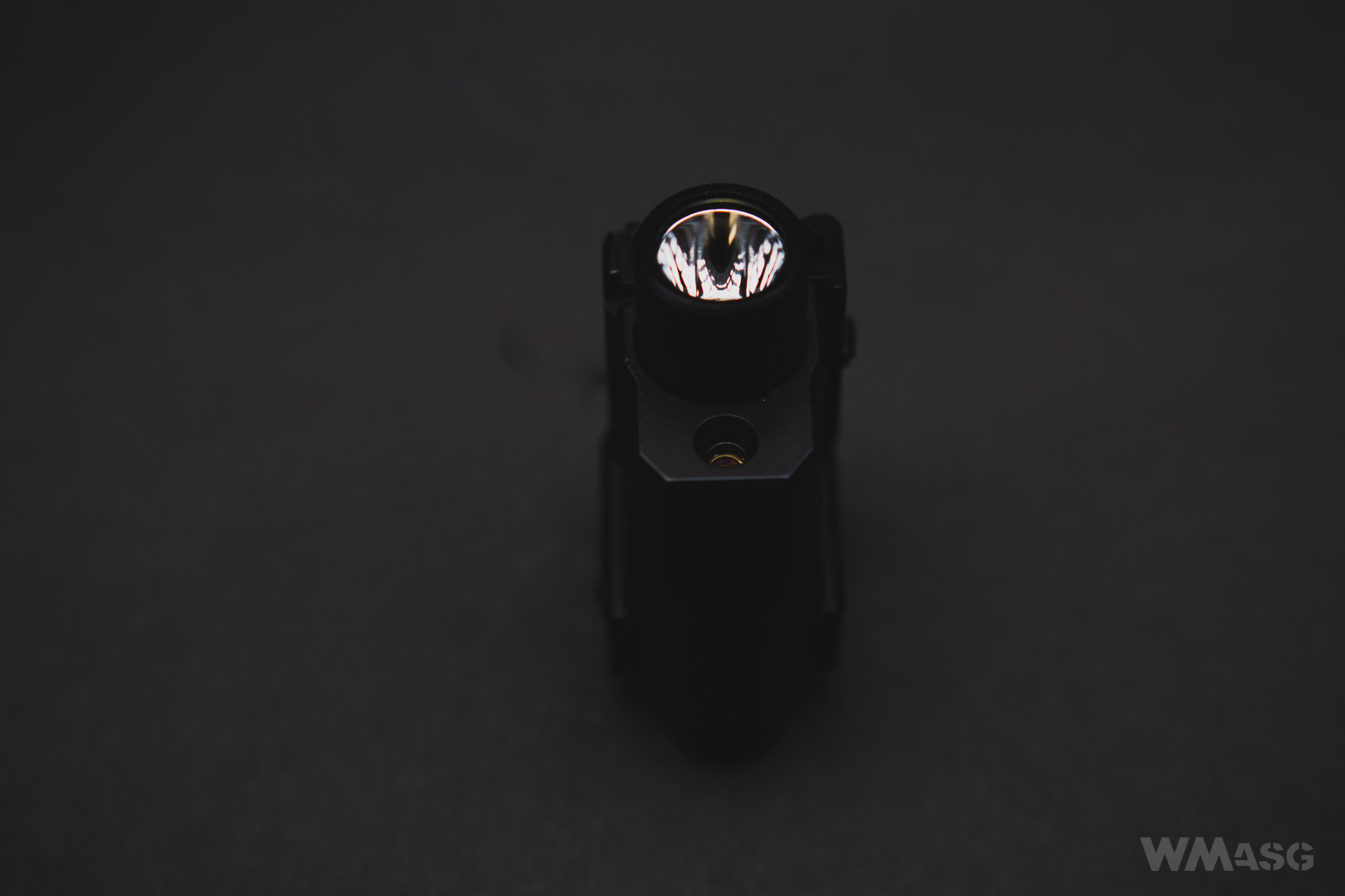
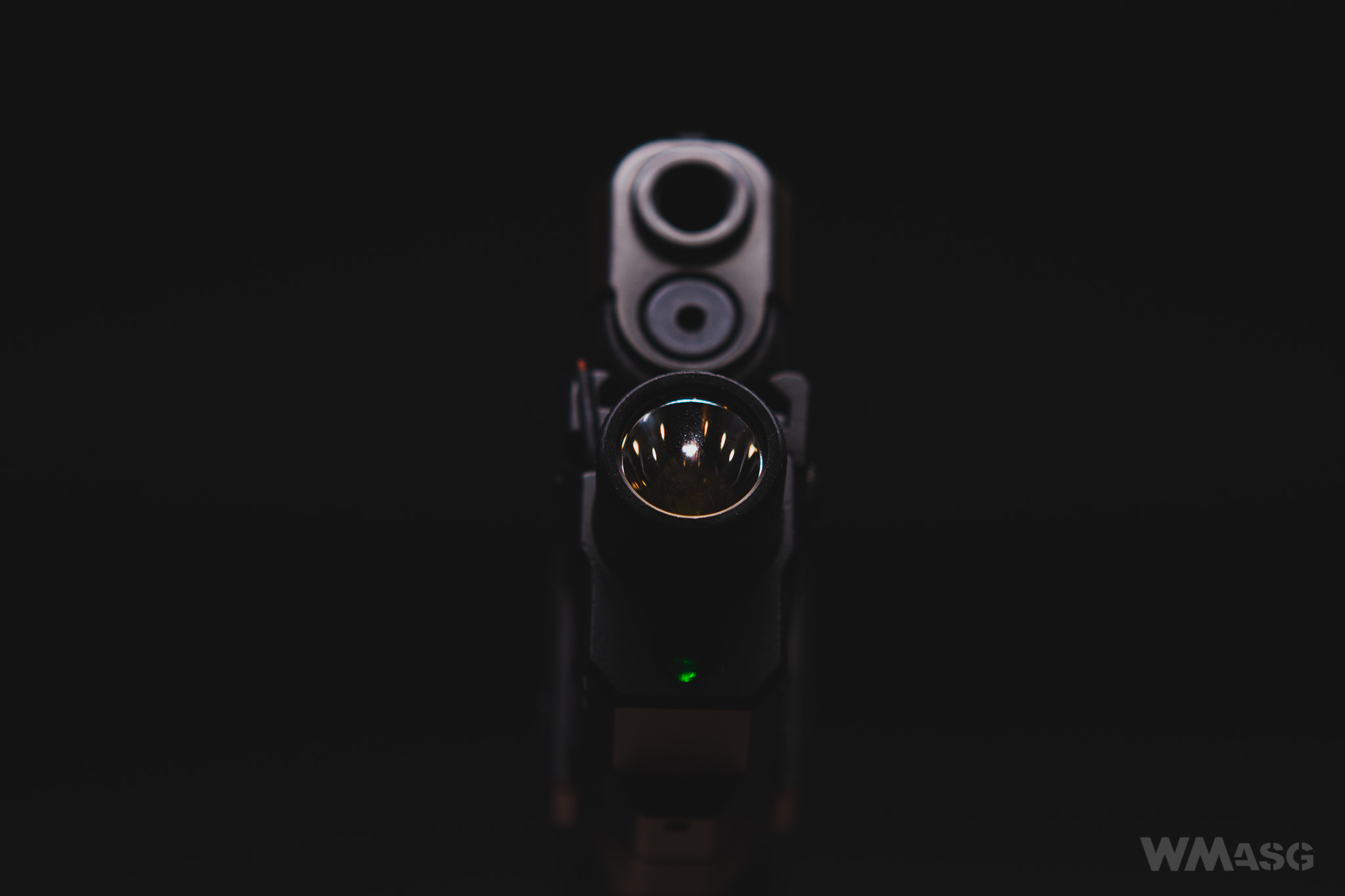
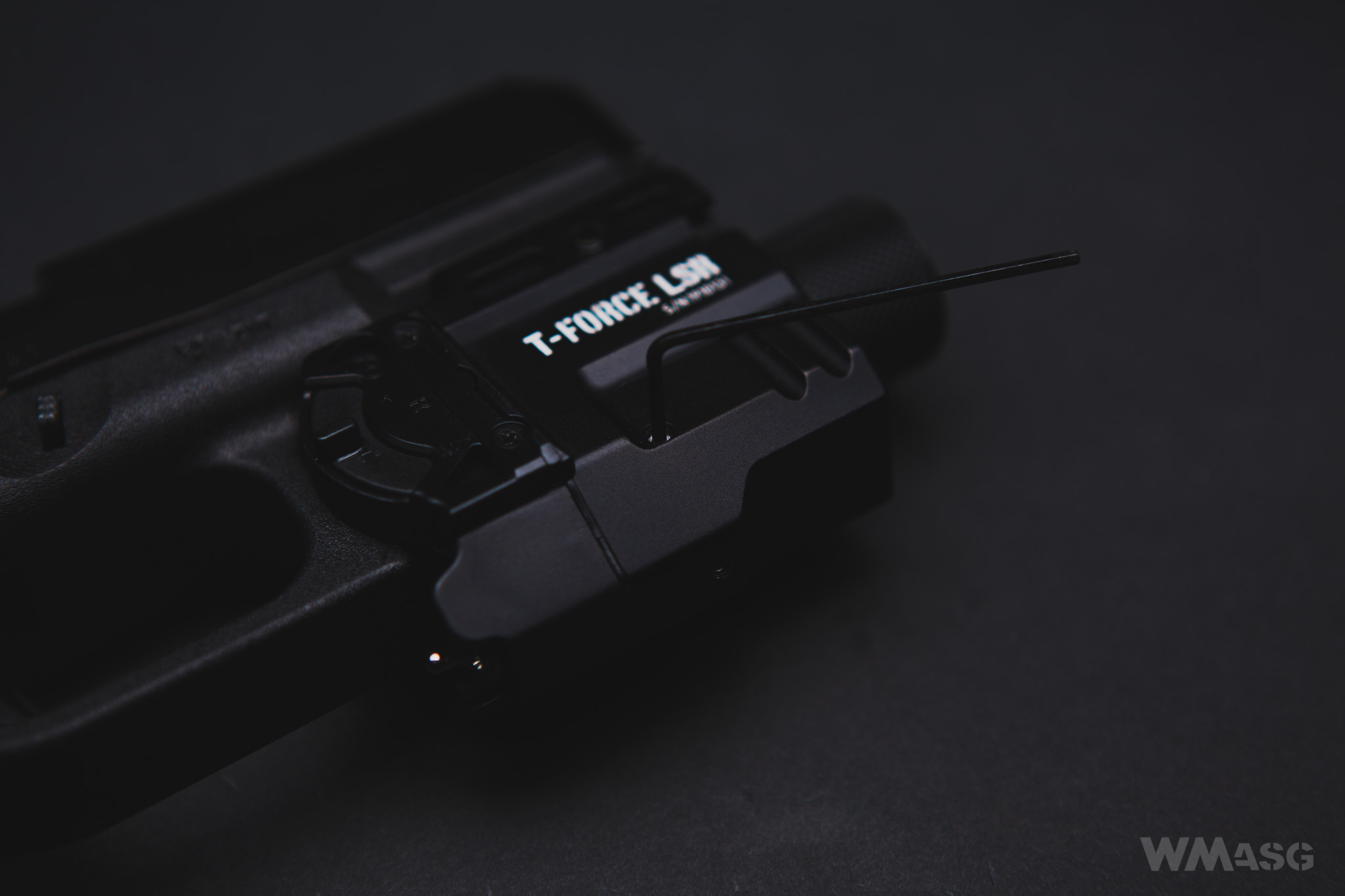
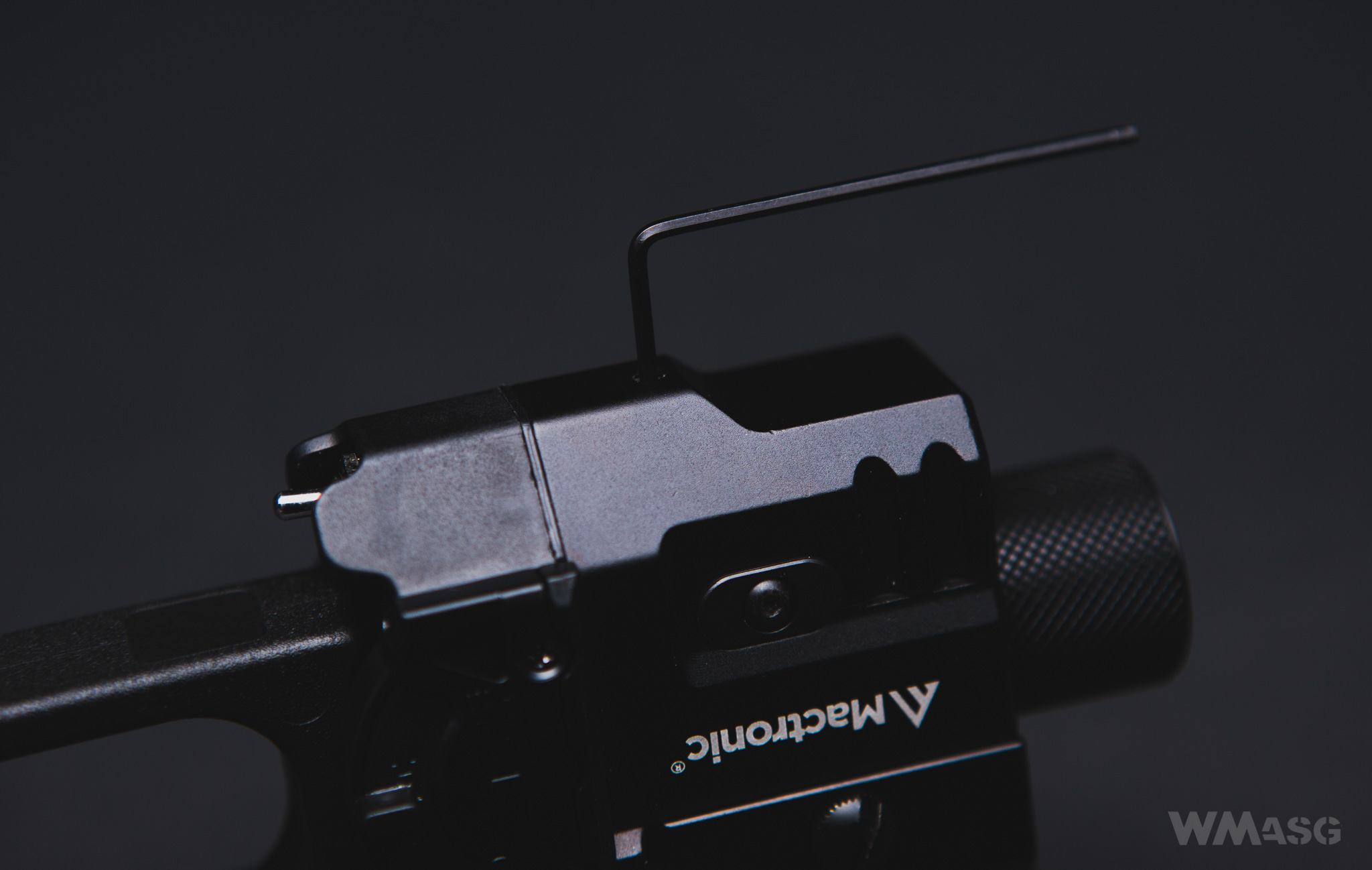
The Allen key is hidden in the cutout next to the weapon mount. One part of the mount is an integral part of the housing, while the other can be unscrewed using a flat screwdriver. After unscrewing it, the user has the option of changing the position of the tightening bolt (or putting in a second one, which is included). This can be crucial for mounting the module on some types of weapons or replicas. The mount is of a standard type, i.e. it tightens by twisting the screw.
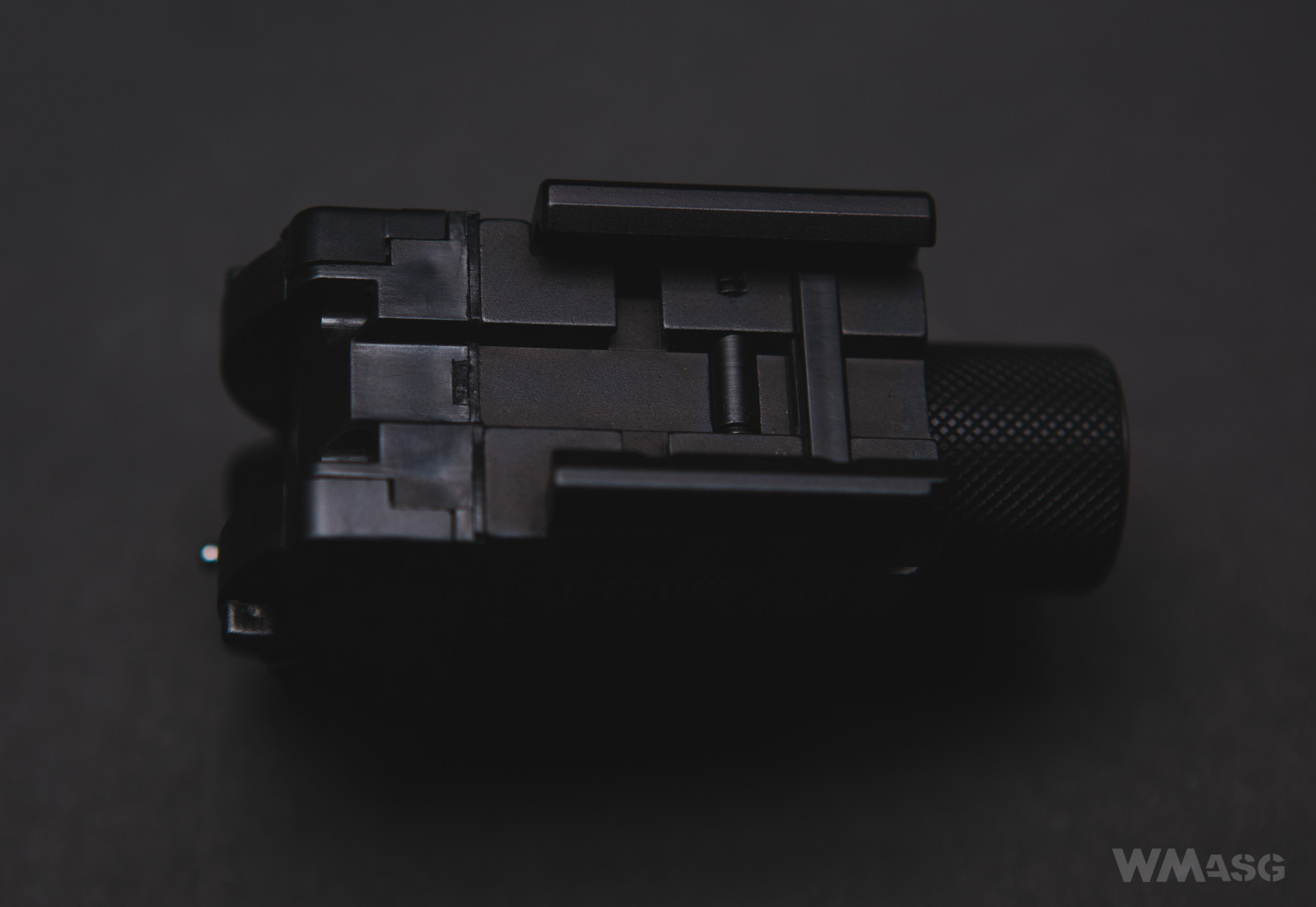
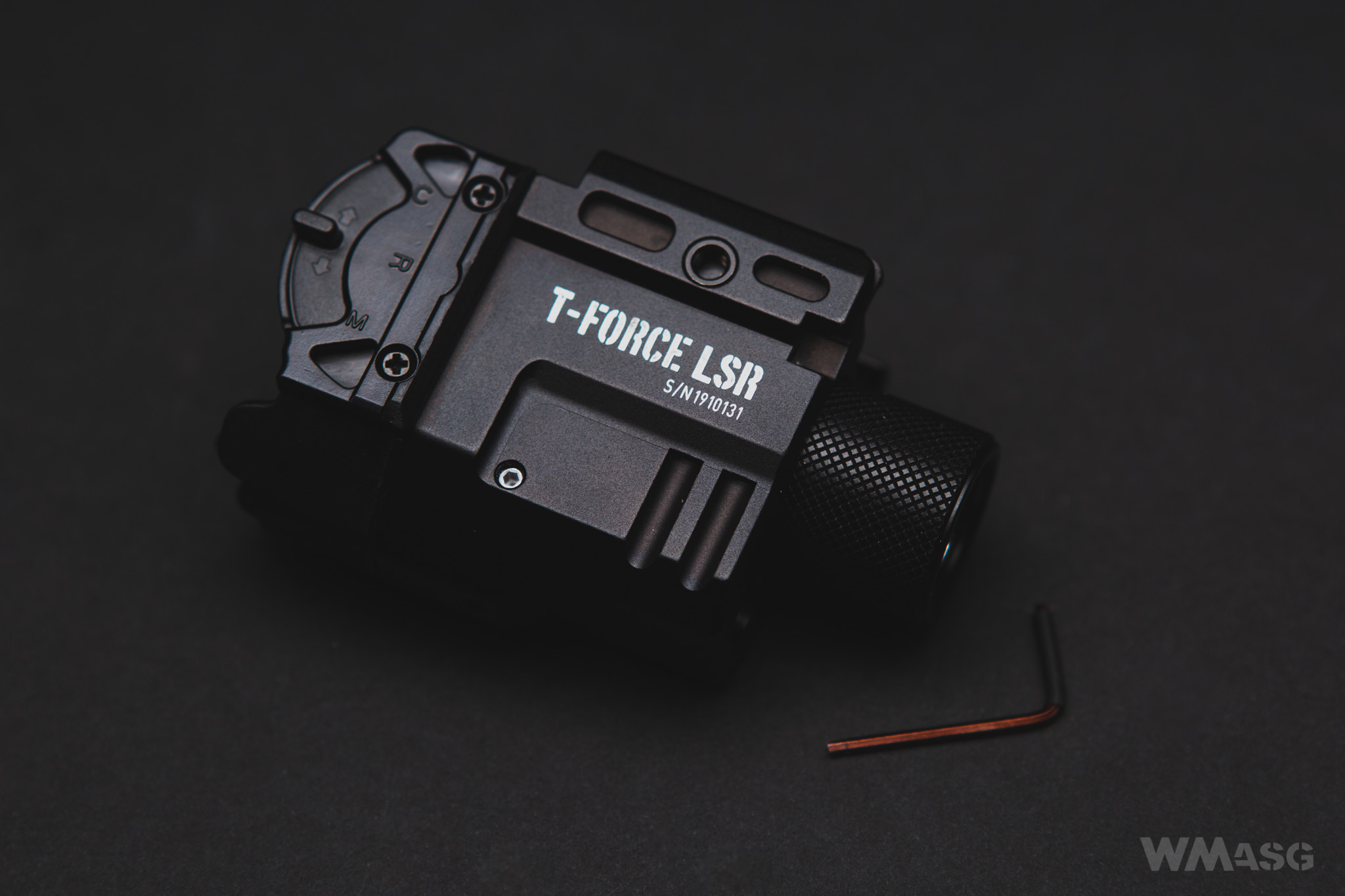
A switch module is mounted on the back of the housing. Unlike the other LSR parts, this one is made of plastic. Three characteristic things stand out here. The first of these are the two-sided, sliding switch levers. They are designed in such a way as to allow convenient operation of the device after mounting it on a gun - both by right-handed and left-handed people. At the same time, this solution is to make it more difficult to accidentally turn the module on. The second characteristic feature is the rounded housing and the groove between the levers of the switch. Like other tactical flashlights, it is intended to allow the device to be stable on the trigger guard, while simultaneously moving the switch to the center of the gun, closer to the user's hand.
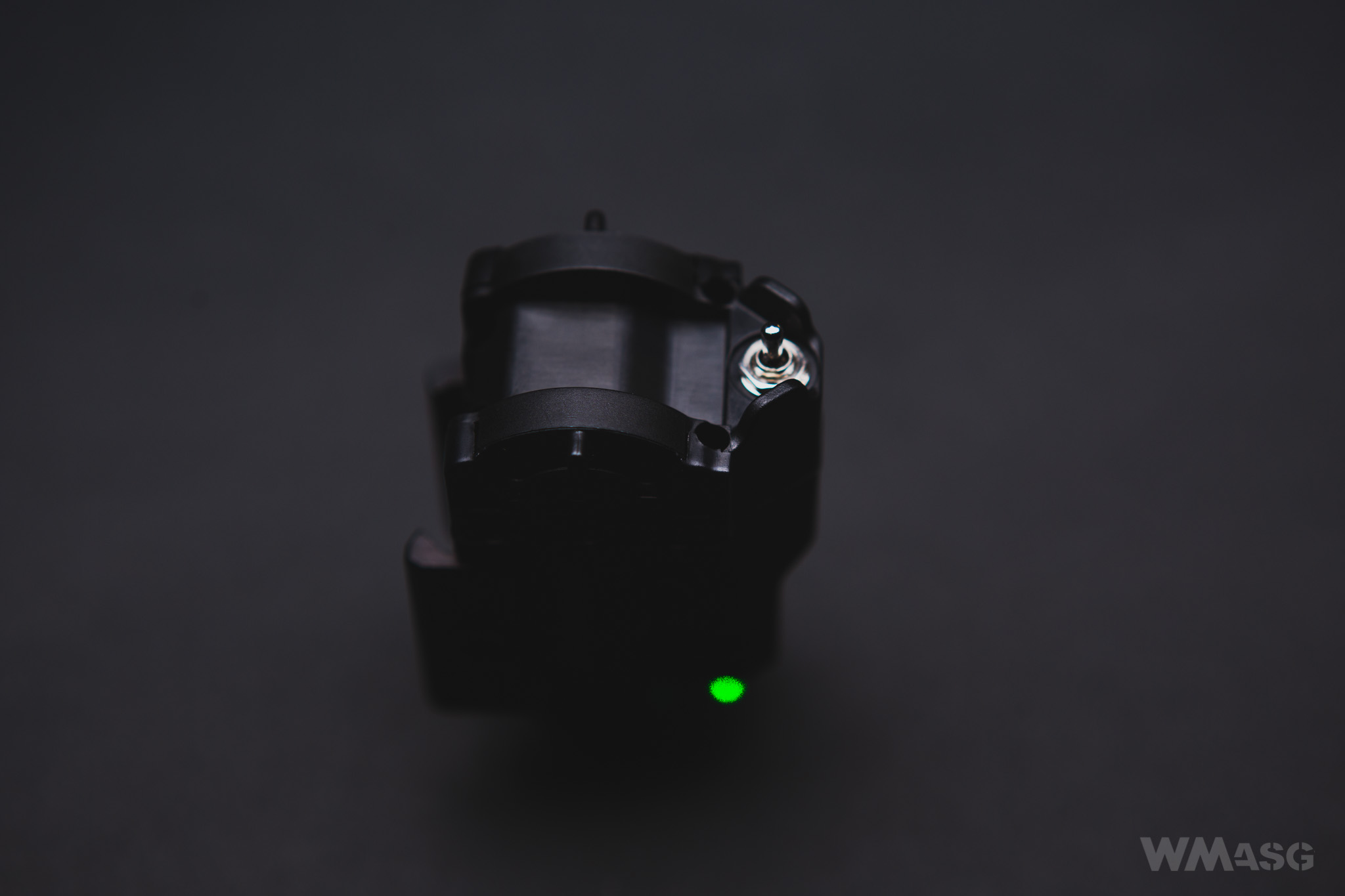
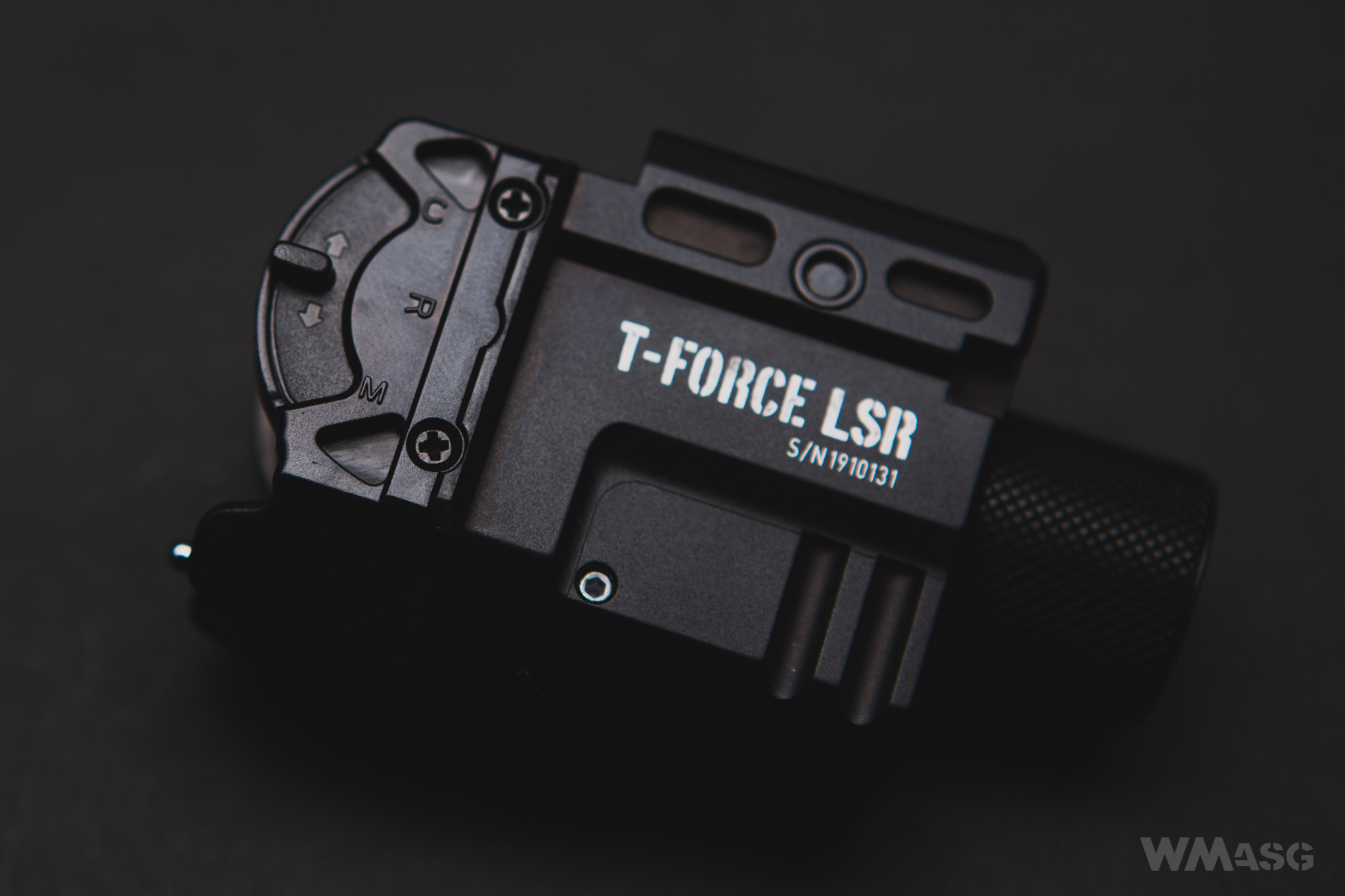
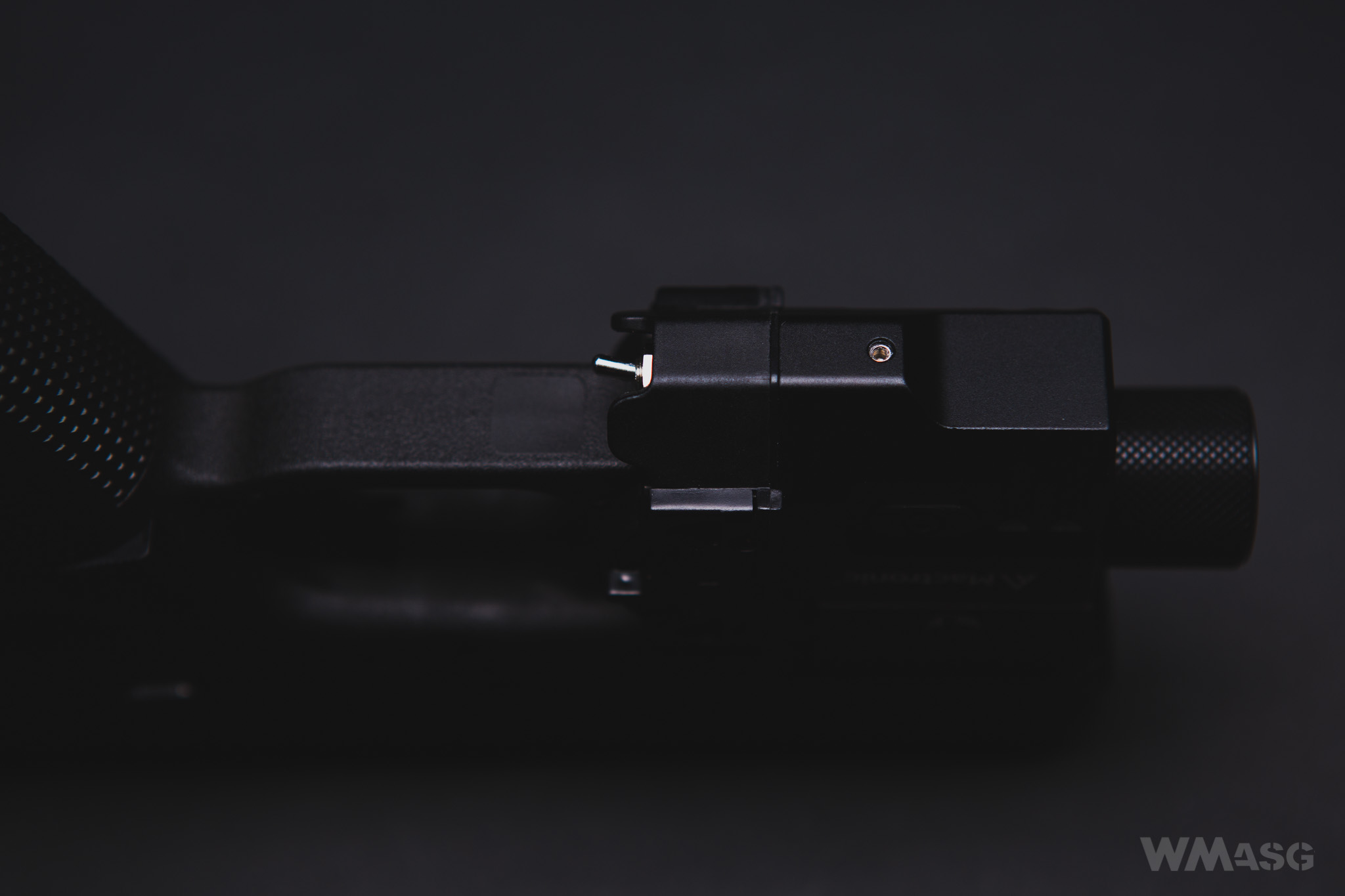
The last of the most striking things is the small metal lever close to the bottom edge of the switch module. It is used to change the operating modes of the device. In the Mactronic T-Force LSR one can use just the flashlight (extreme left position), the flashlight and the laser sight simultaneously (center position) or just the laser sigh (extreme right position). The lever on the sides is protected by covers, which is to minimize the chance of accidentally moving it.
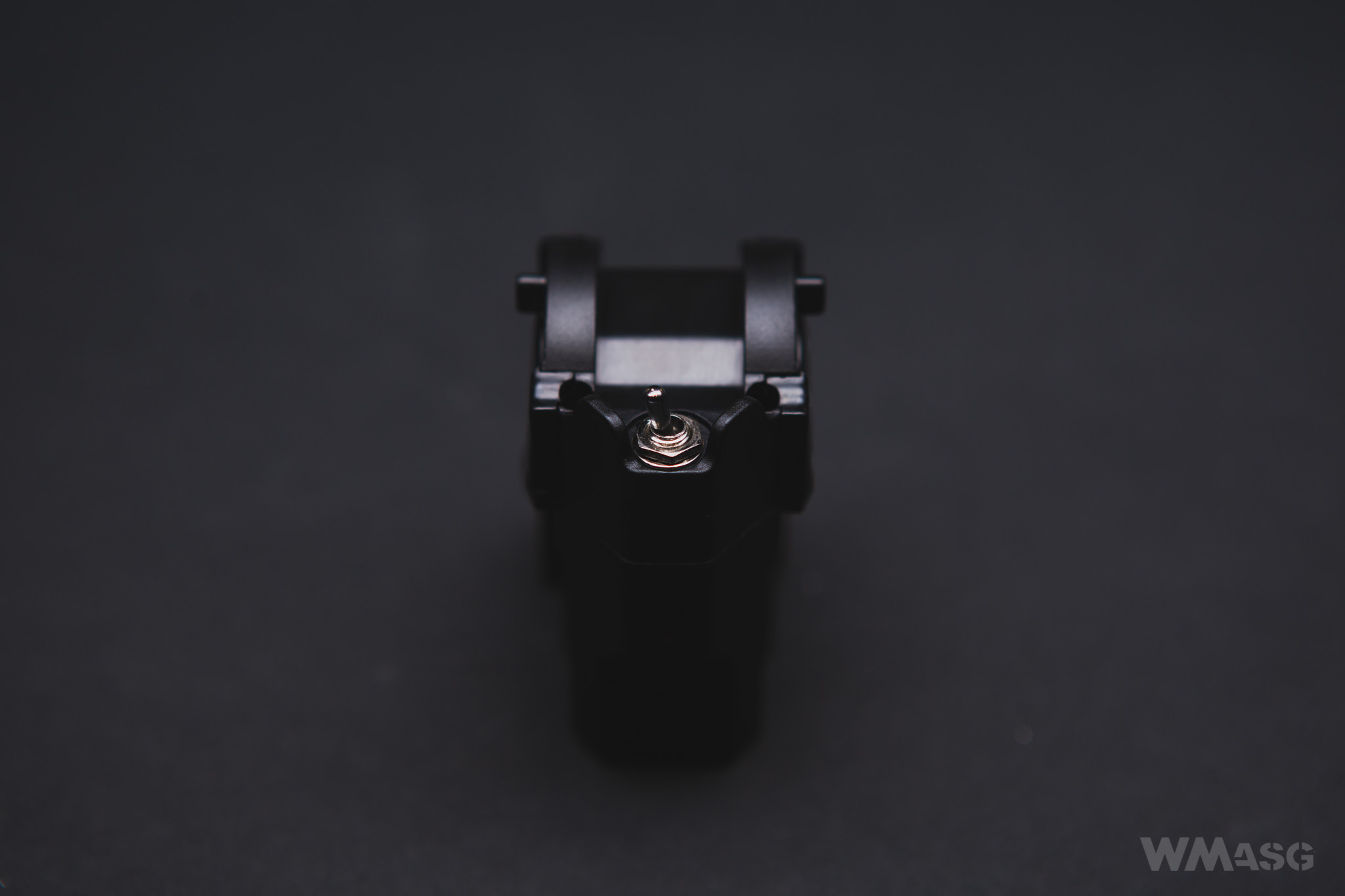
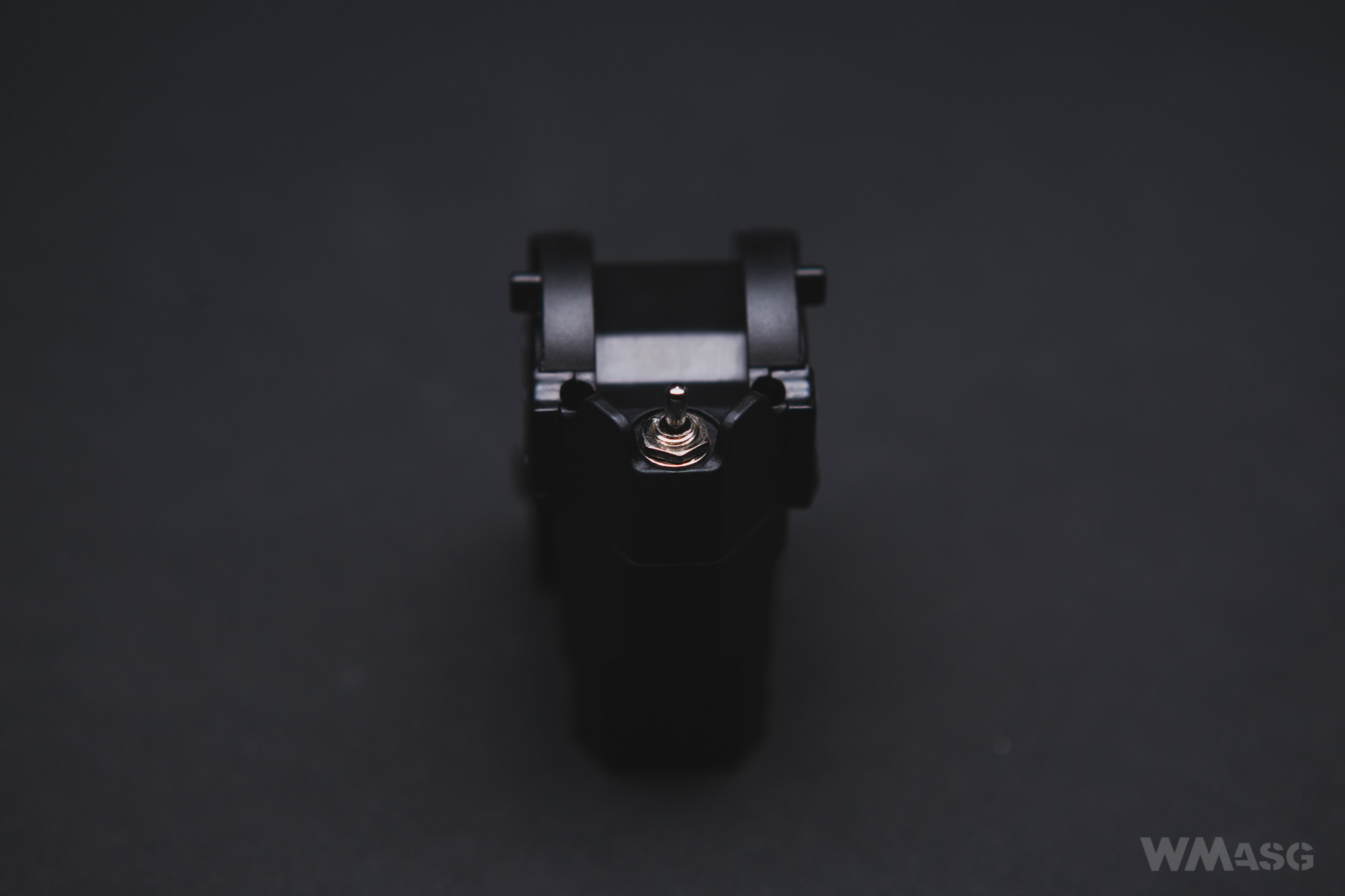
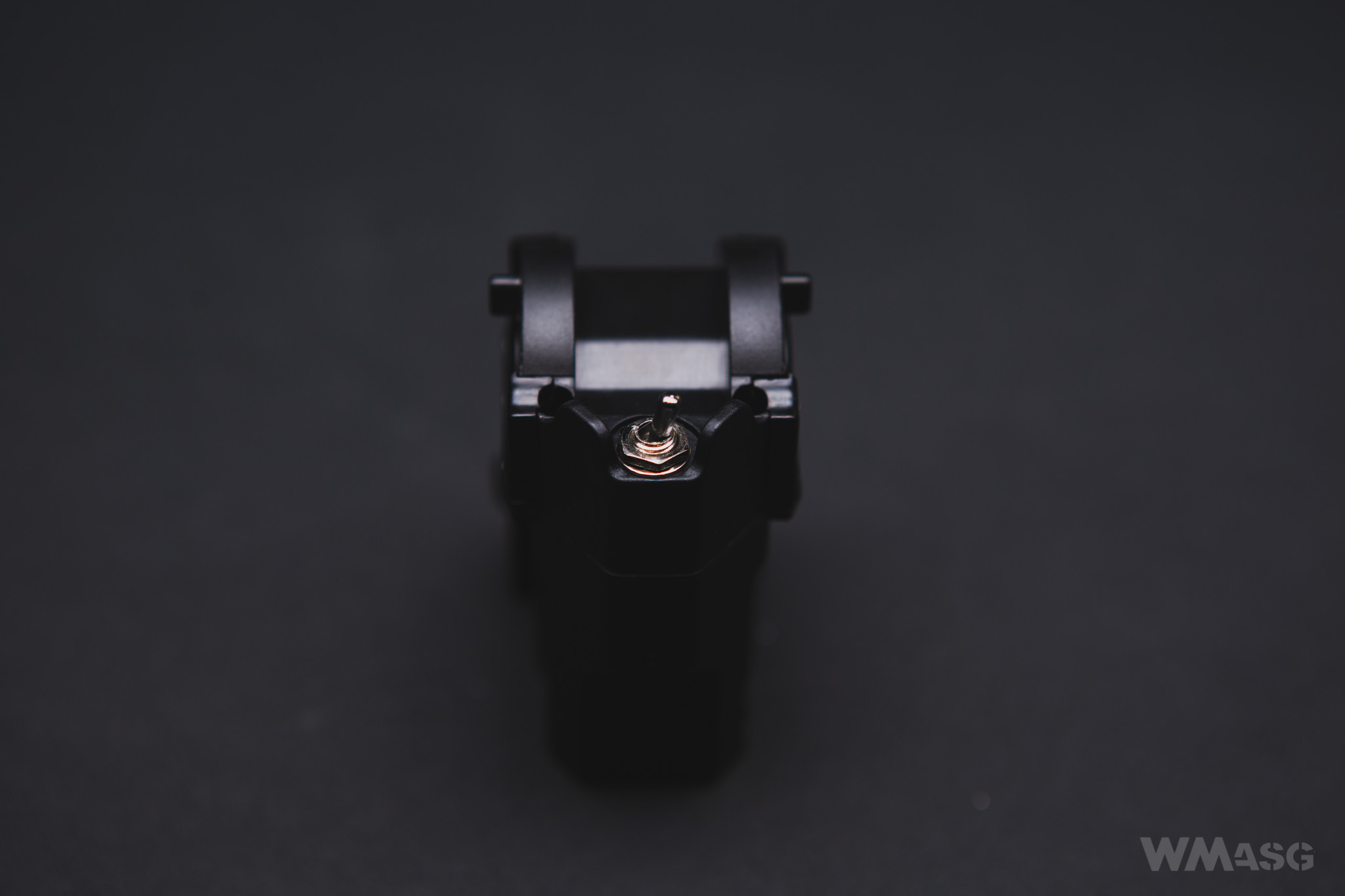
HANDLING AND ILLUMINATION CHARACTERISTICS
The heart of the flashlight is the CREE XM-L2 U3 LED. The beam angle is relatively large for a tactical flashlight, but when used on handguns I would treat it as an advantage. When shining it on a bright surface you can distinguish the hotspot and the spill, but the border between them is not clear. I would describe the color of light as neutral white.
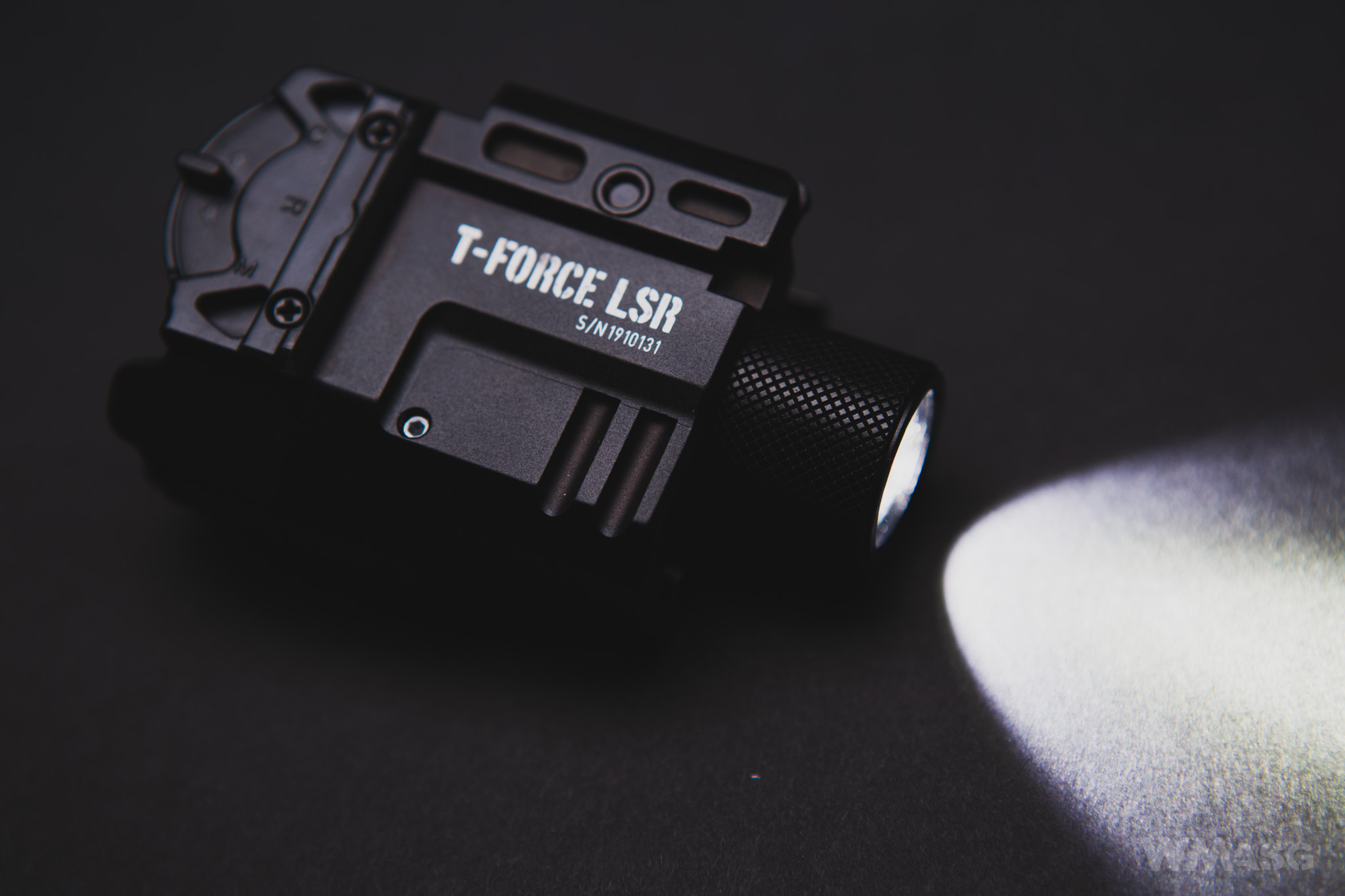
An important issue related to the flashlight itself is that when powered by a CR123 battery, the luminous flux reaches only 380 lumens (according to the manufacturer's data). Only when using the 16340/RCR123 cell can achieve the maximum declared luminous flux - 550 lumens. Therefore, during further tests, I used a battery that provided better performance.
The laser beam is emitted by a diode located in the housing, directly under the head of the flashlight. The 5mW laser beam has a green color.
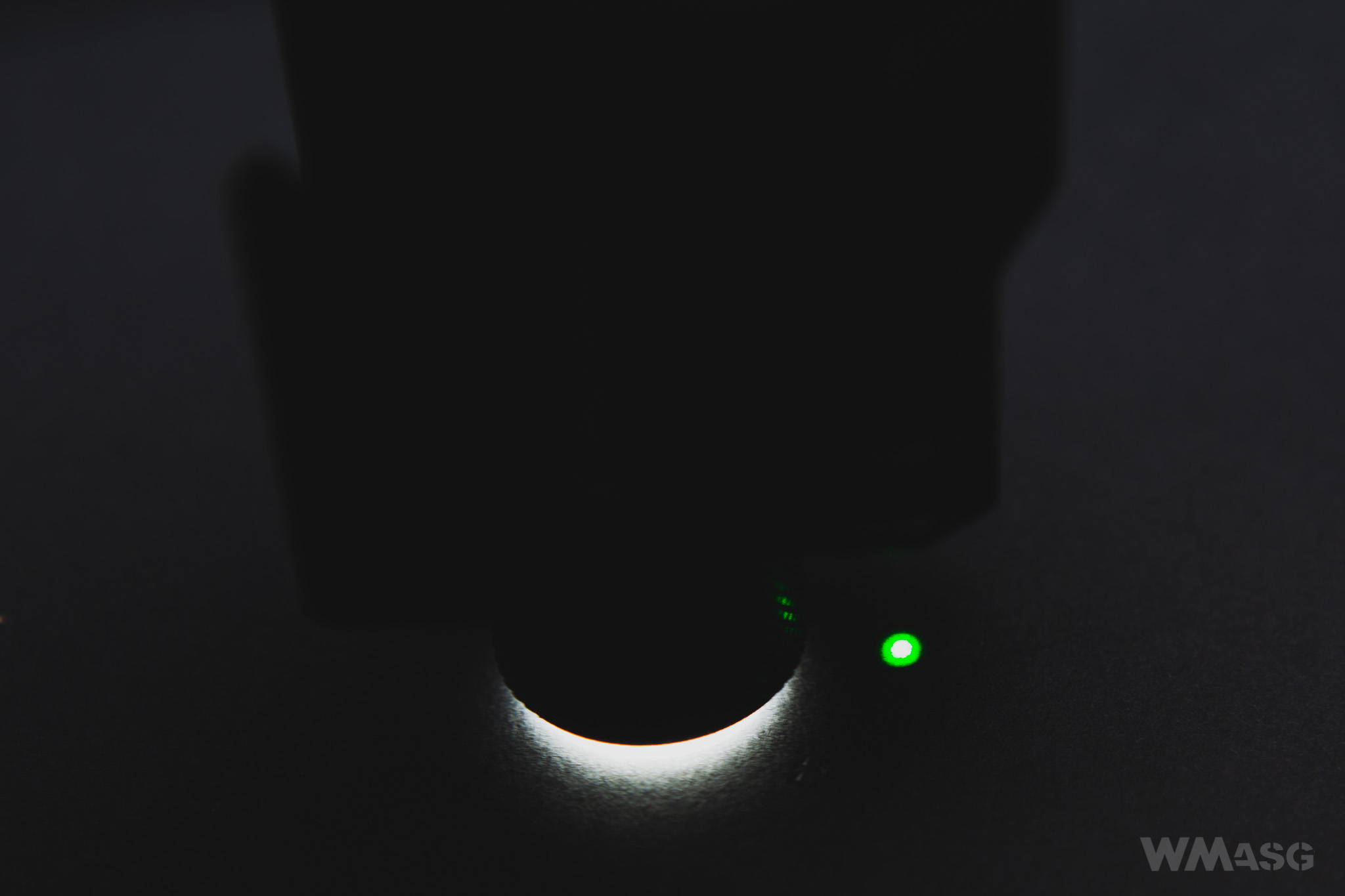
Operation of the T-Force LSR is simple. The device does not offer too many modes of operation, and for the user's convenience, their control is divided between two levers. The module can operate in one of three modes: flashlight, flashlight + laser, laser. Each of them can be started permanently or temporarily (it turns off after releasing the lever).
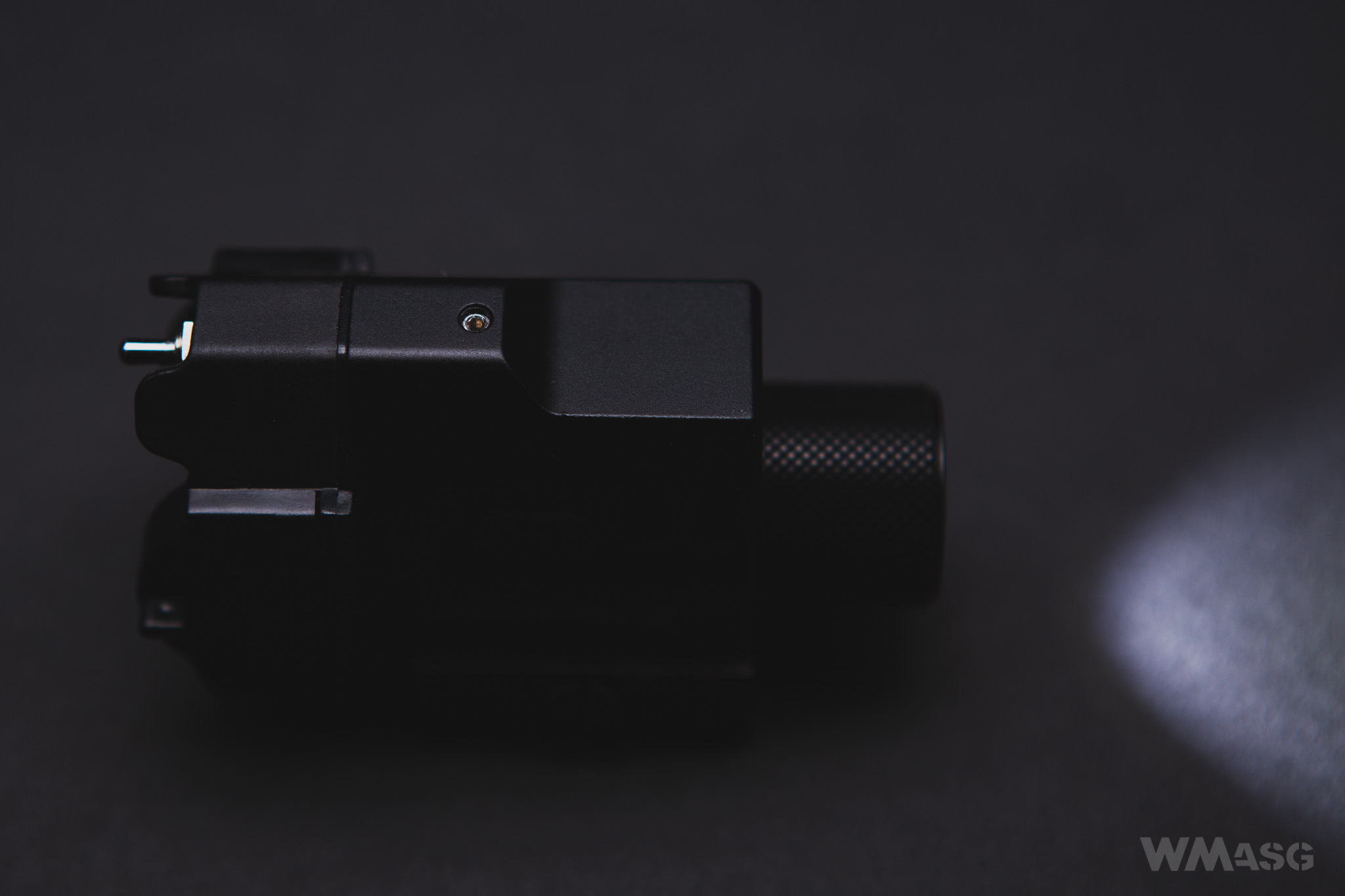
To start the module temporarily in the selected mode, tilting one of the two switch levers down. It should be tilted by at least half a centimeter. Releasing the lever will turn off the module.
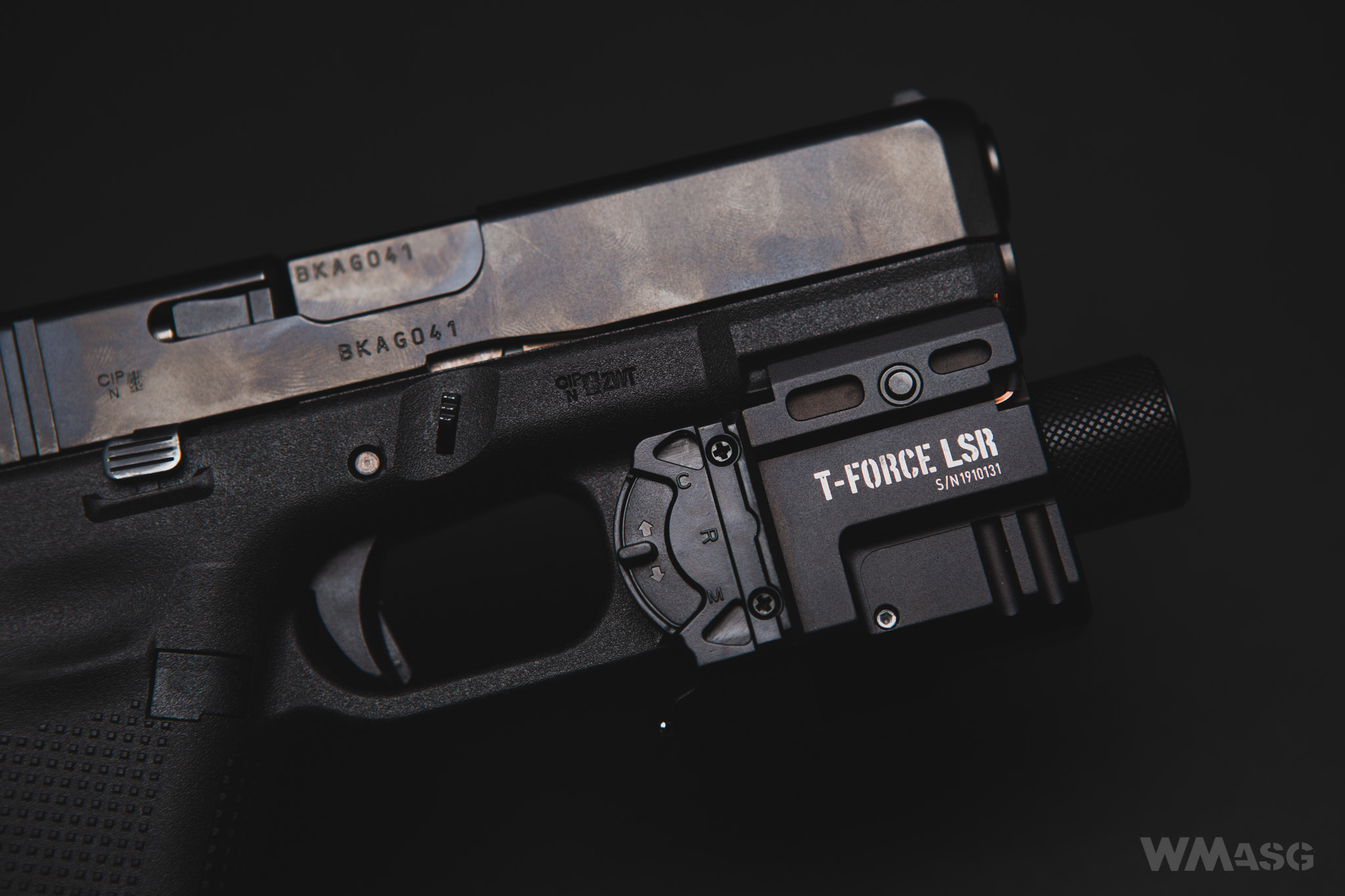
Turning the module on permanently, in the selected mode, is done by tilting one of the two switch levers up. This time it should also be tilted by at least half a centimeter. The released lever will return to its original position, but the module will remain on.
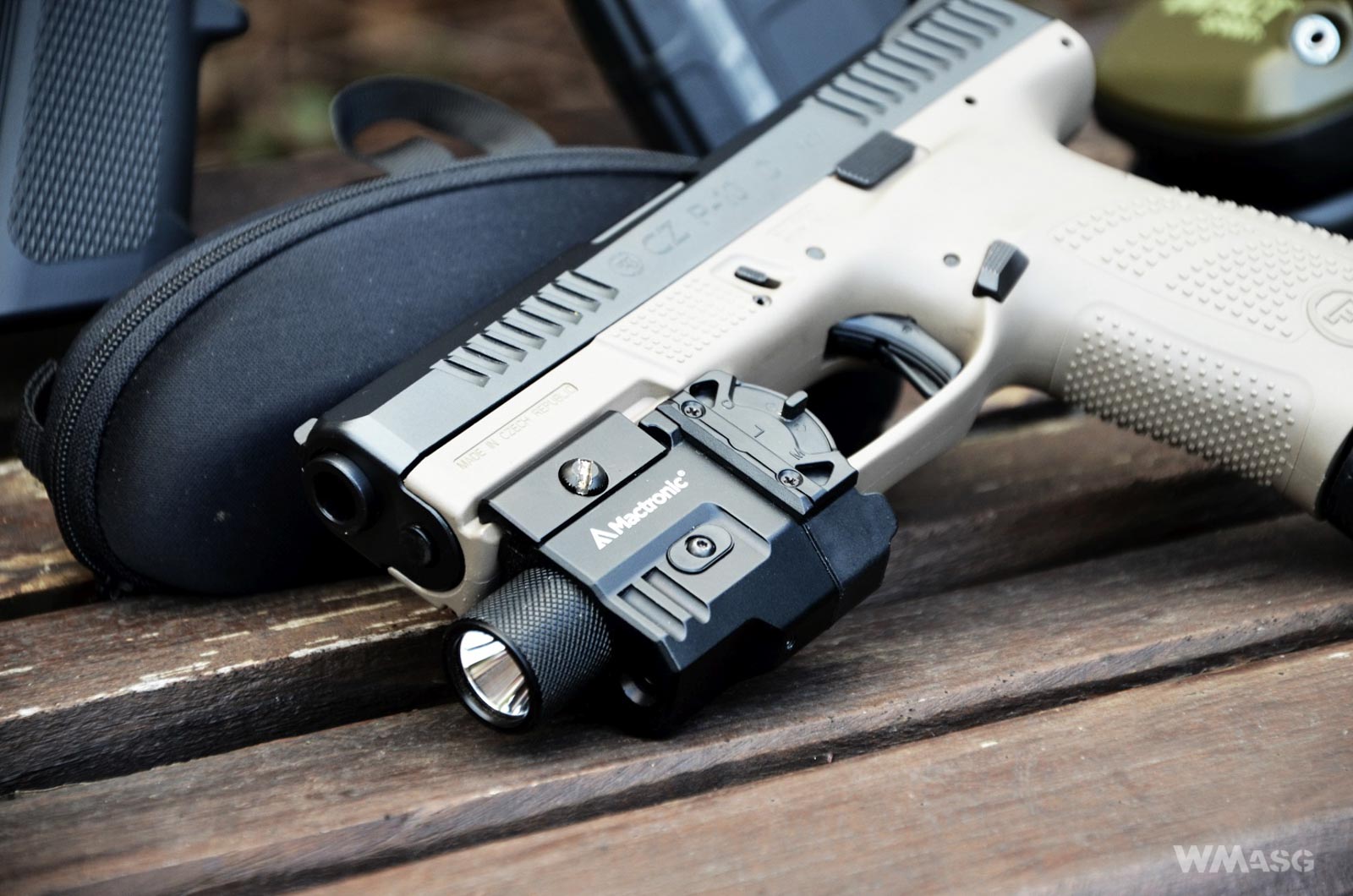
To turn off the device from permanent mode, the switch lever must be tilted again. If the user tilts them up, the module will turn off immediately. In the event of a downward tilt it will switch to temporary operation mode, and turn off only after the lever is released.
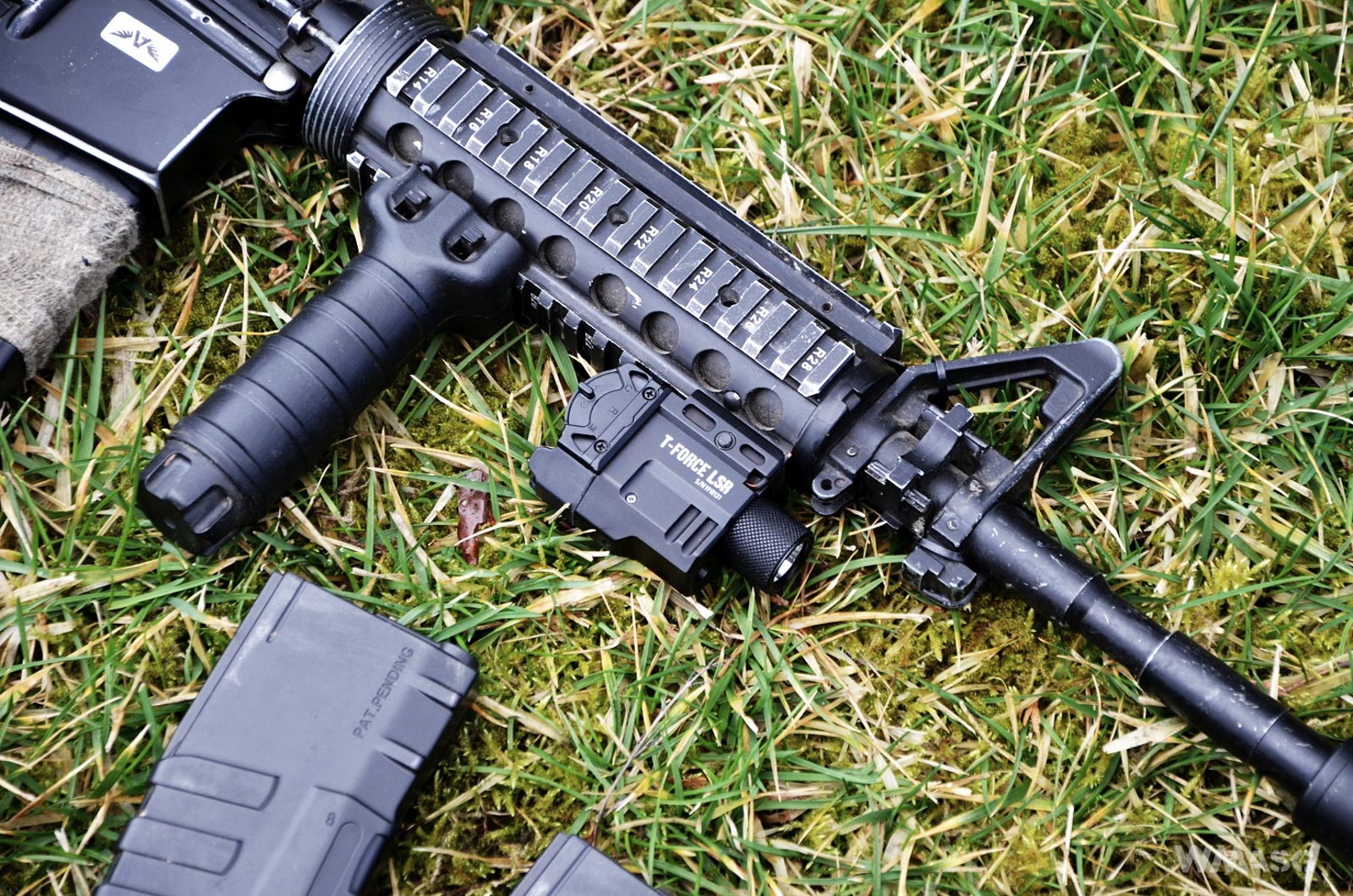
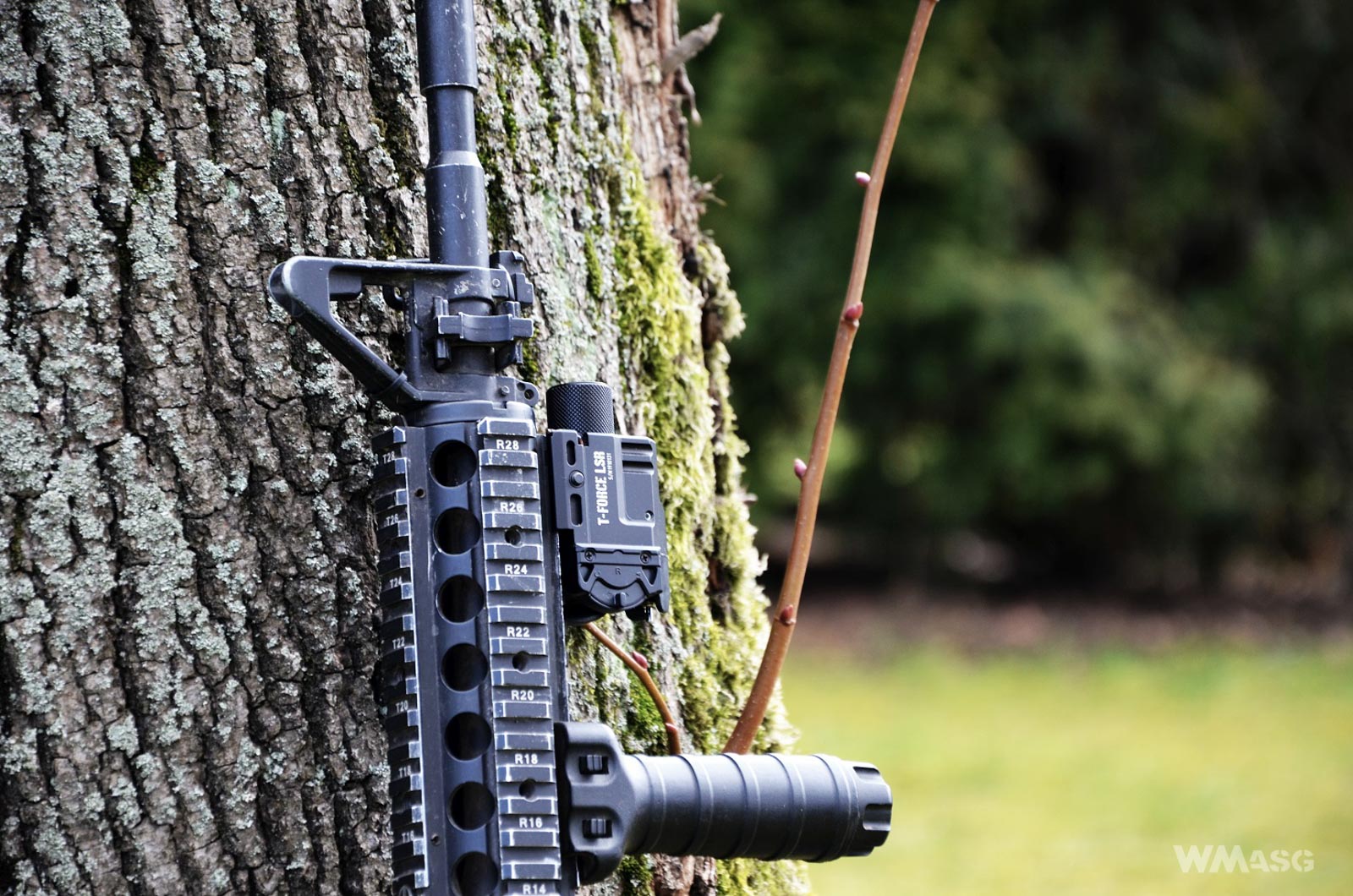
Changing the operating modes is done by the small metal lever described earlier, located under the switch. Switching it to the left side will prepare the module for work only with flashlight. The central position will allow the simultaneous use of the flashlight and the laser sight. Switching the lever to the right will result in only the laser being used.
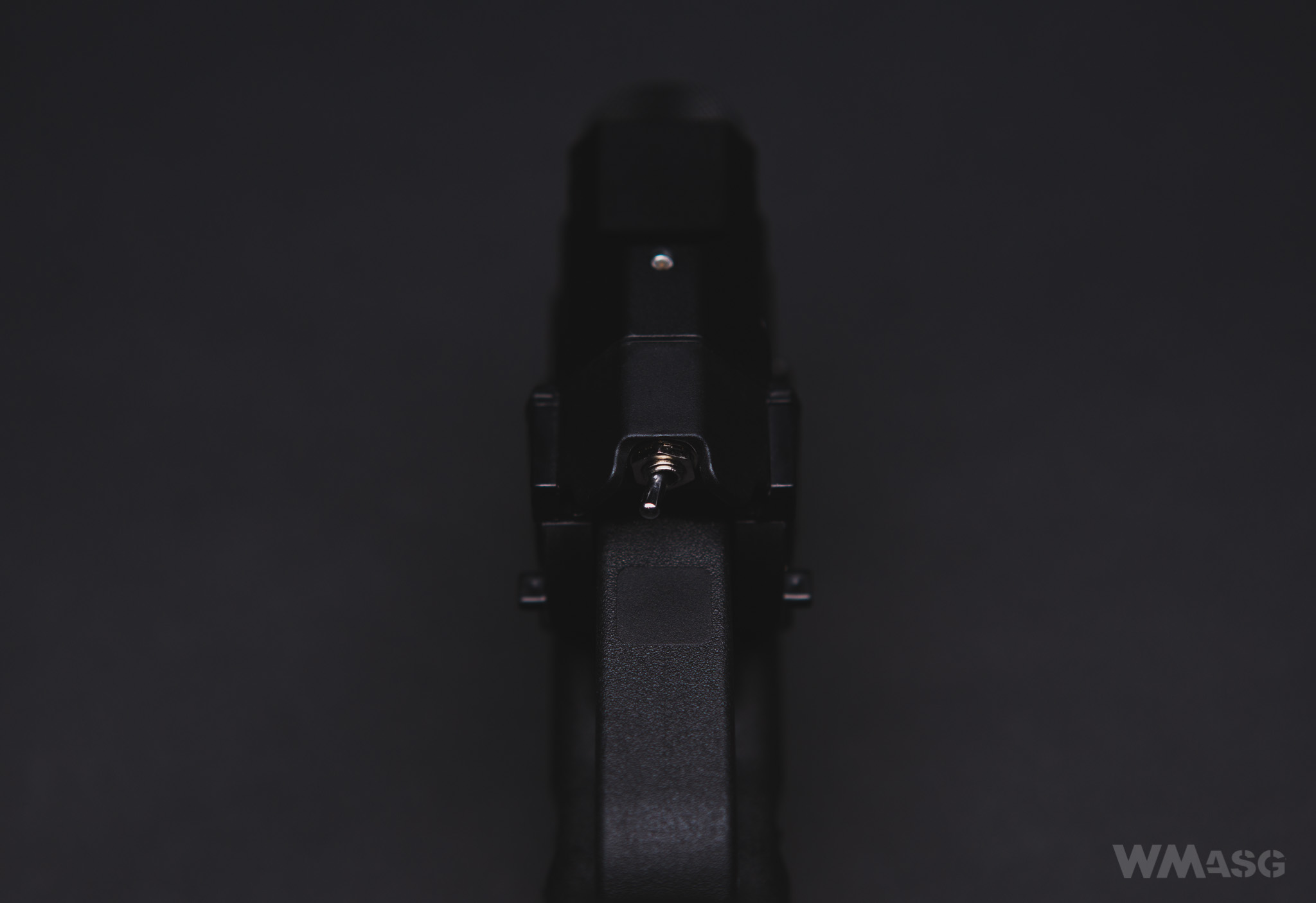
Modes can be changed with the module turned on and off.
COMPARATIVE PHOTOS
In order to better show the illumination characteristics of the Mactronic T-Force LSR module, I took several comparative photos with two other tactical flashlights: a 400 lumens pistol flashlight (Olight PL-Mini), as well as a 2000 lumens rifle model (Olight Warrior X). None of the other lights were equipped with a laser sight. The following photos do not reflect the actual way the flashlight illuminate the area, they serve only as a reference.
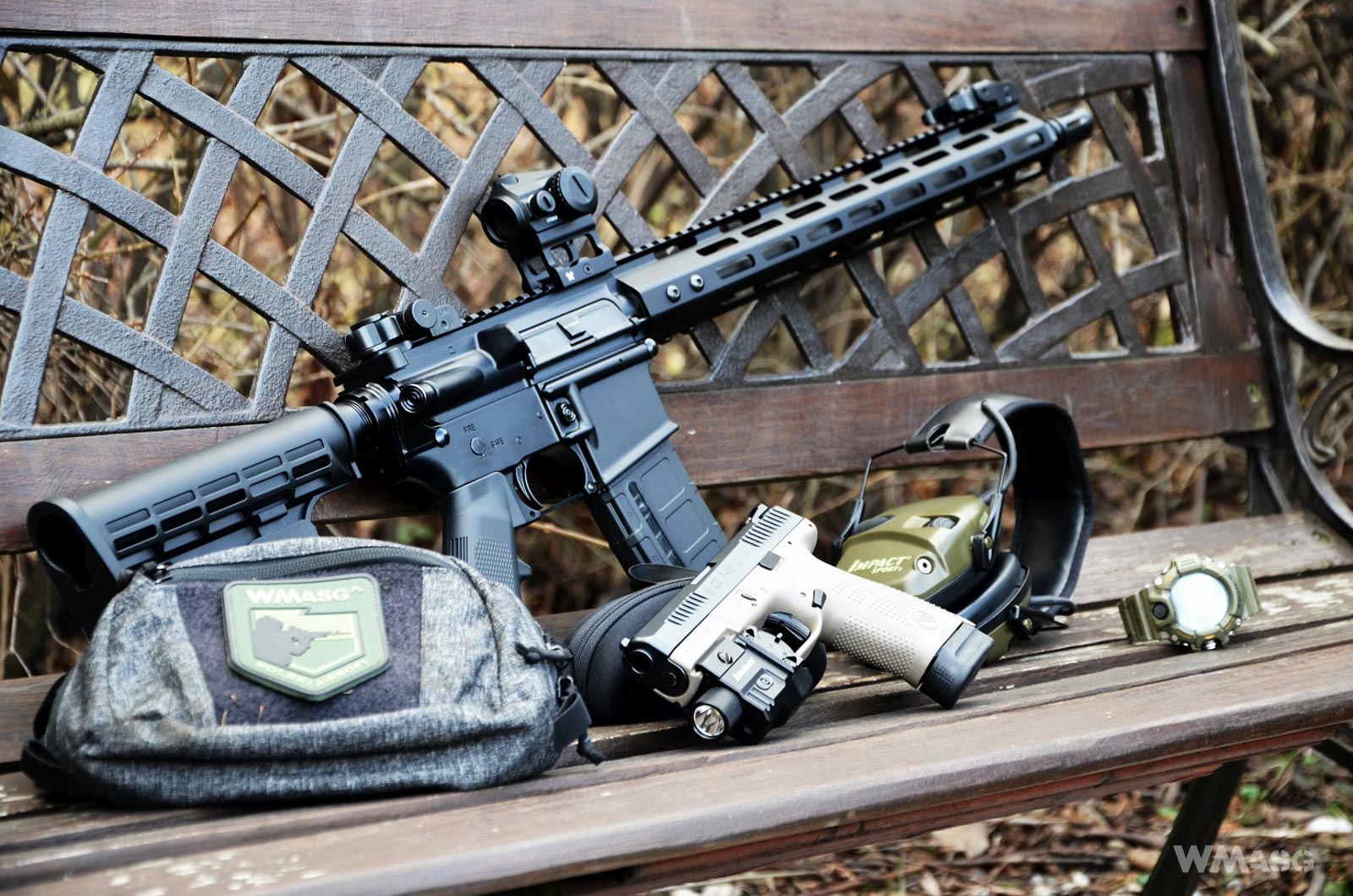
Comparative photos were taken with a Nikon D5100 camera mounted on a tripod, using the settings shown in the photo below.
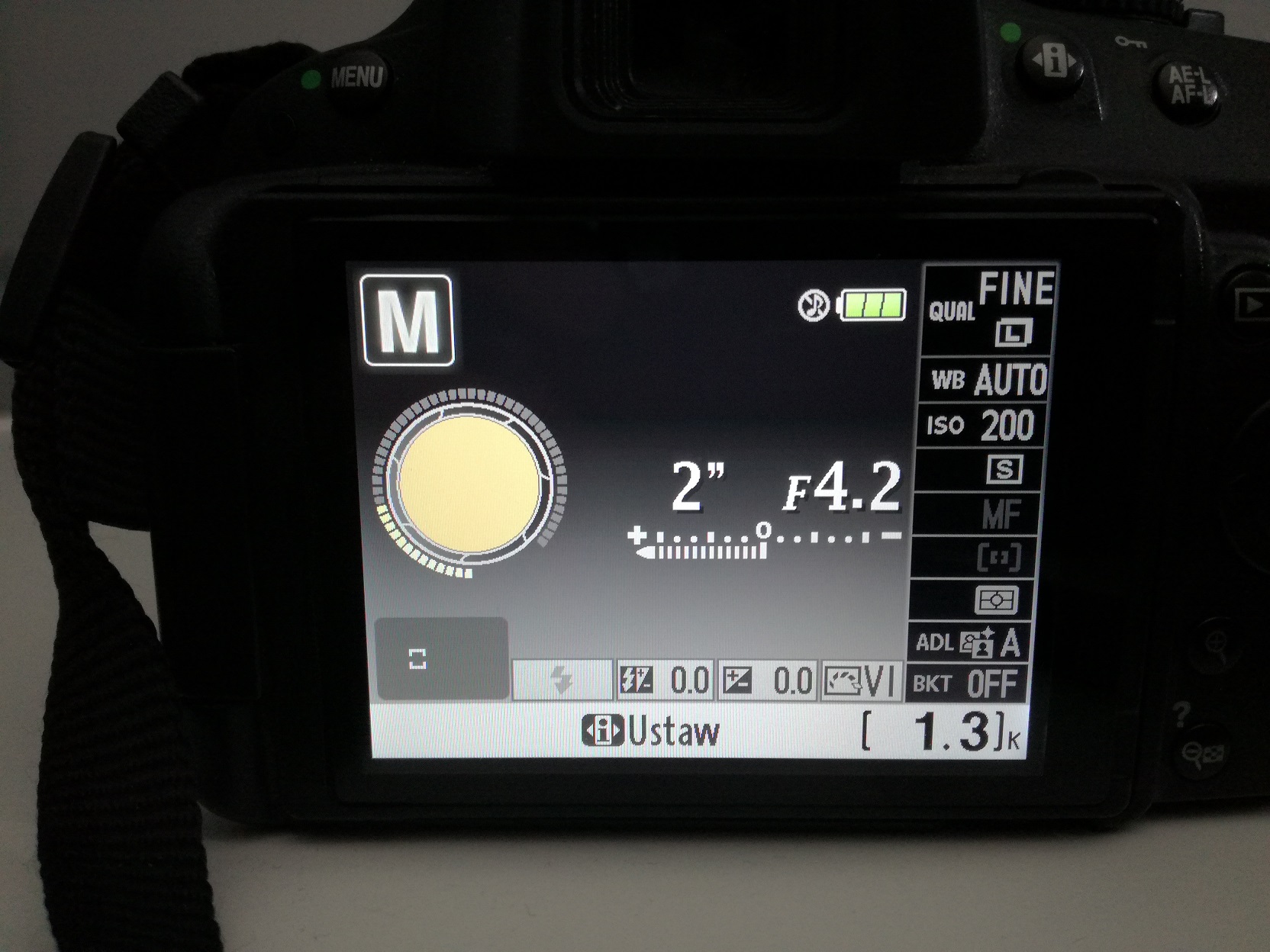
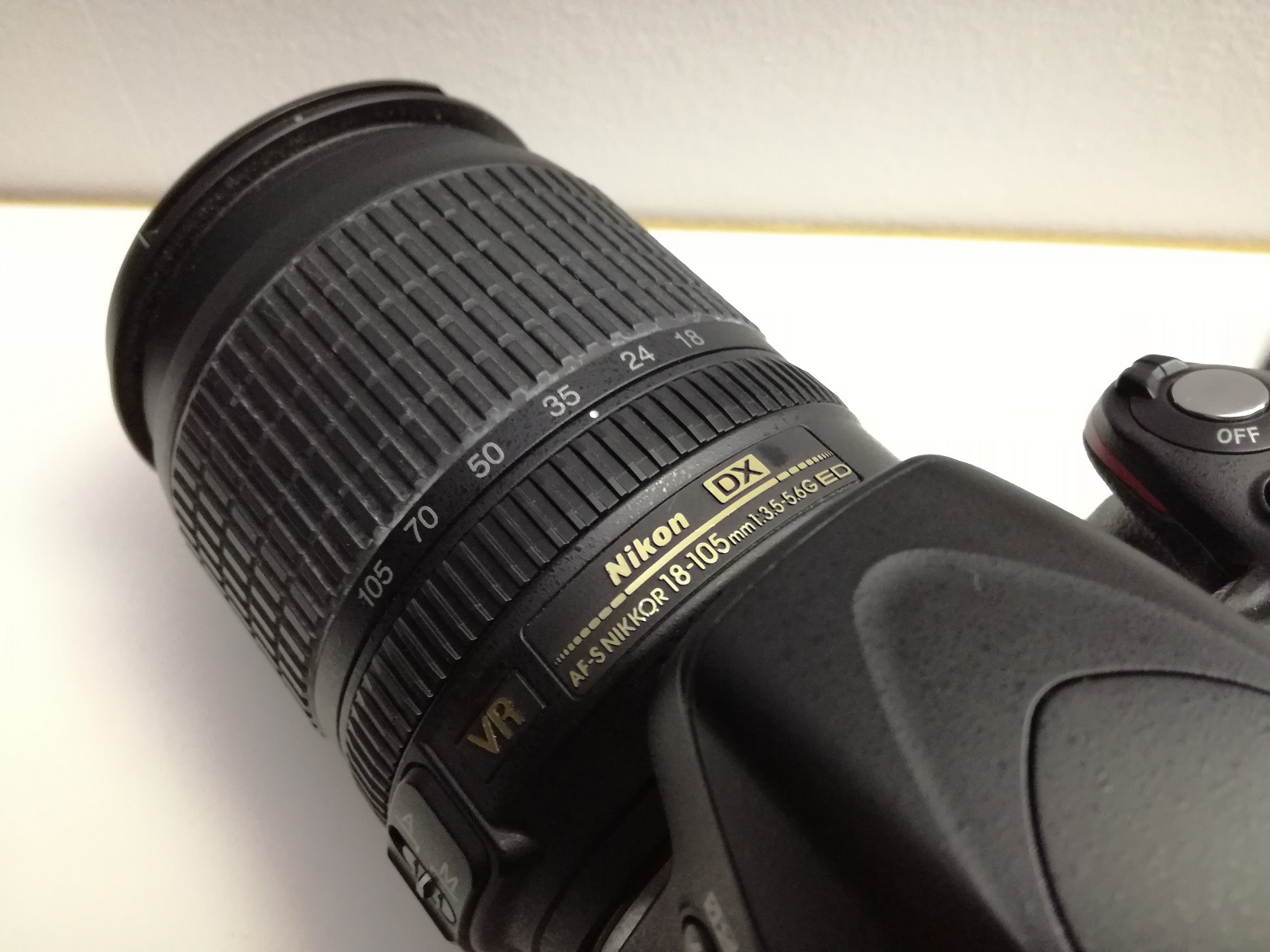
First, a photo of the area taken during the day. The pines visible next to the shed are 20 meters away, the trees visible in the background are between 25-45 meters away, and the riverbed is about 70 meters away:
Night conditions:
Handgun flashlight, 400 lumens:
The Mactronic T-Force LSR (flashlight + laser mode, 550 lumens):
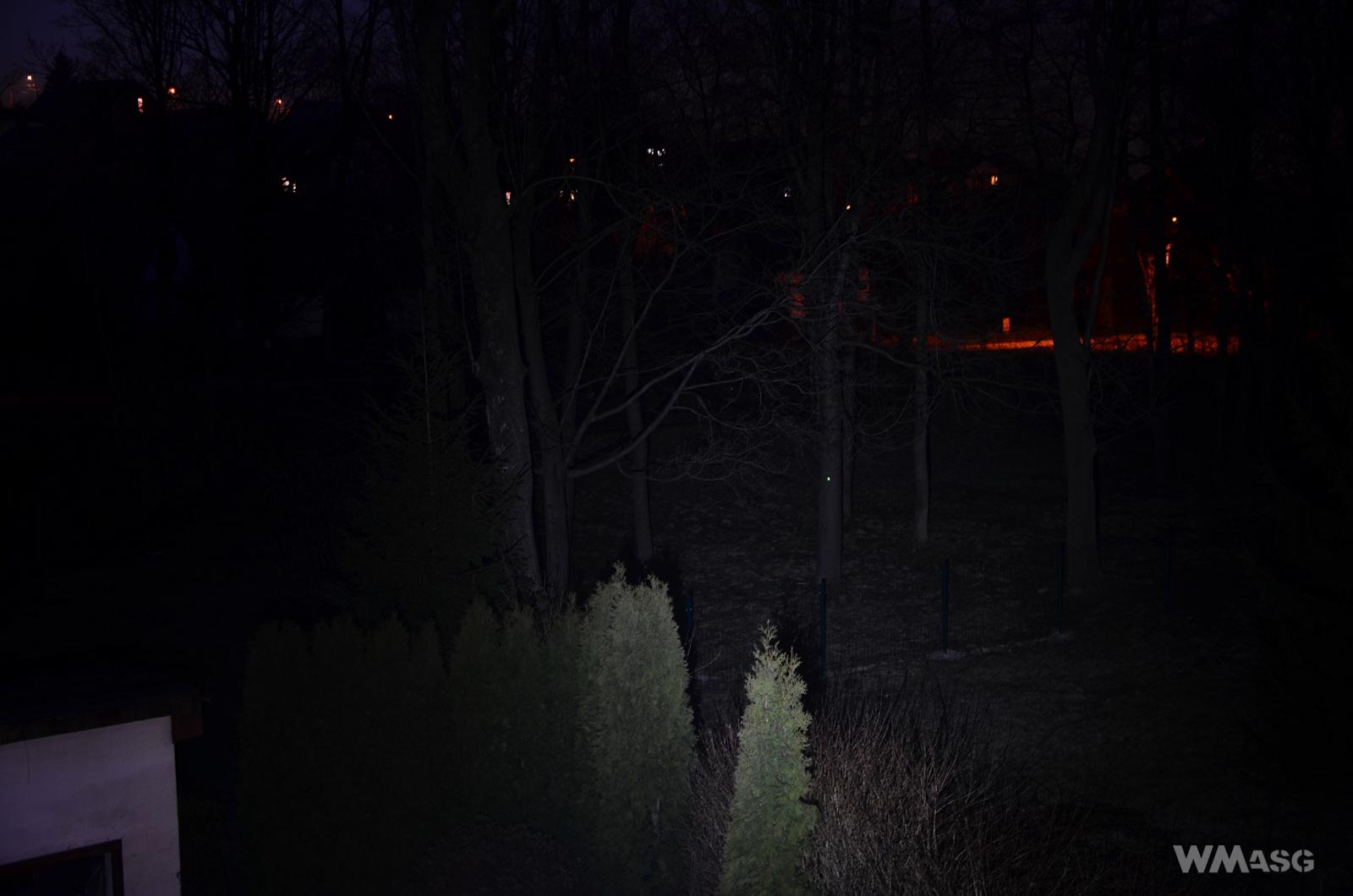
Rifle flashlight, 2000 lumens:
Below are two more photos showing the LSR module in the other two modes: flashlight only and laser only.
After this short test, several conclusions can be made. The Mactronic T-Force LSR flashlight has sufficient luminous flux to prove itself as sensible lighting for a rifle replica or a sidearm. The luminous flux generated by it still clearly illuminates objects at about 60-70 meters away (this is not very well visible in the photo). However, the flashlight definitely loses with the light emitted by the rifle model that uses the newer CREE LED XHP LED emitter which, for some time now, is also available in pistol flashlights made by other manufacturers.
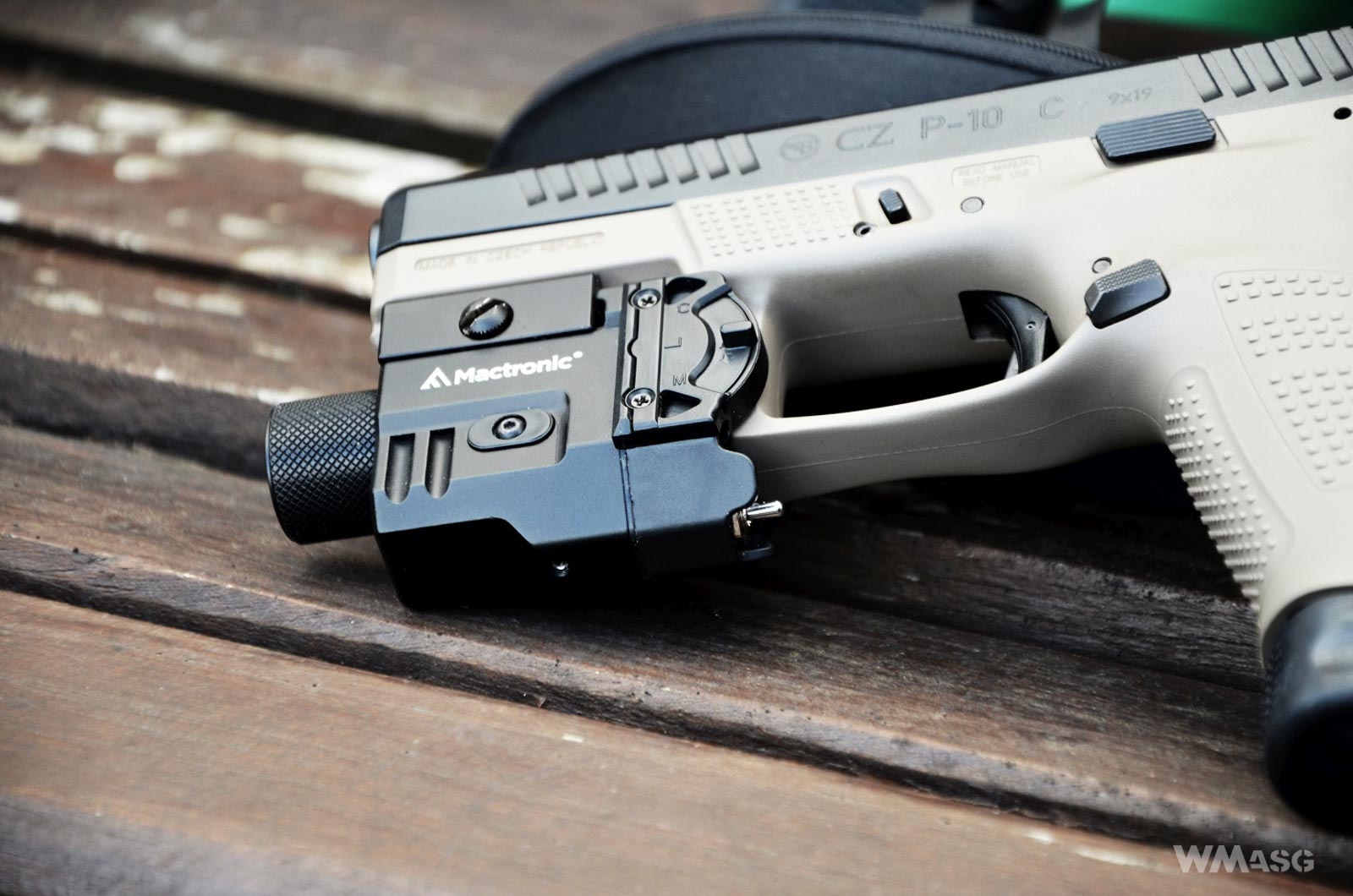
Of course, luminous flux is not enough. When used on a sidearm replica and in the case of CQB airsoft games, 550 lumens is well enough to illuminate every corner and make it difficult for an opponent to aim. A luminous flux of this value is at the same time a good compromise between its capabilities and the battery's operating time.
USABILITY IN THE FIELD
I had the opportunity to test the operation of the Mactronic T-Force LSR module during a night airsoft game, as well as when entering into abandoned buildings. To broaden scope of the test, in both cases, I installed it first on the rifle replica and then on the sidearm replica.
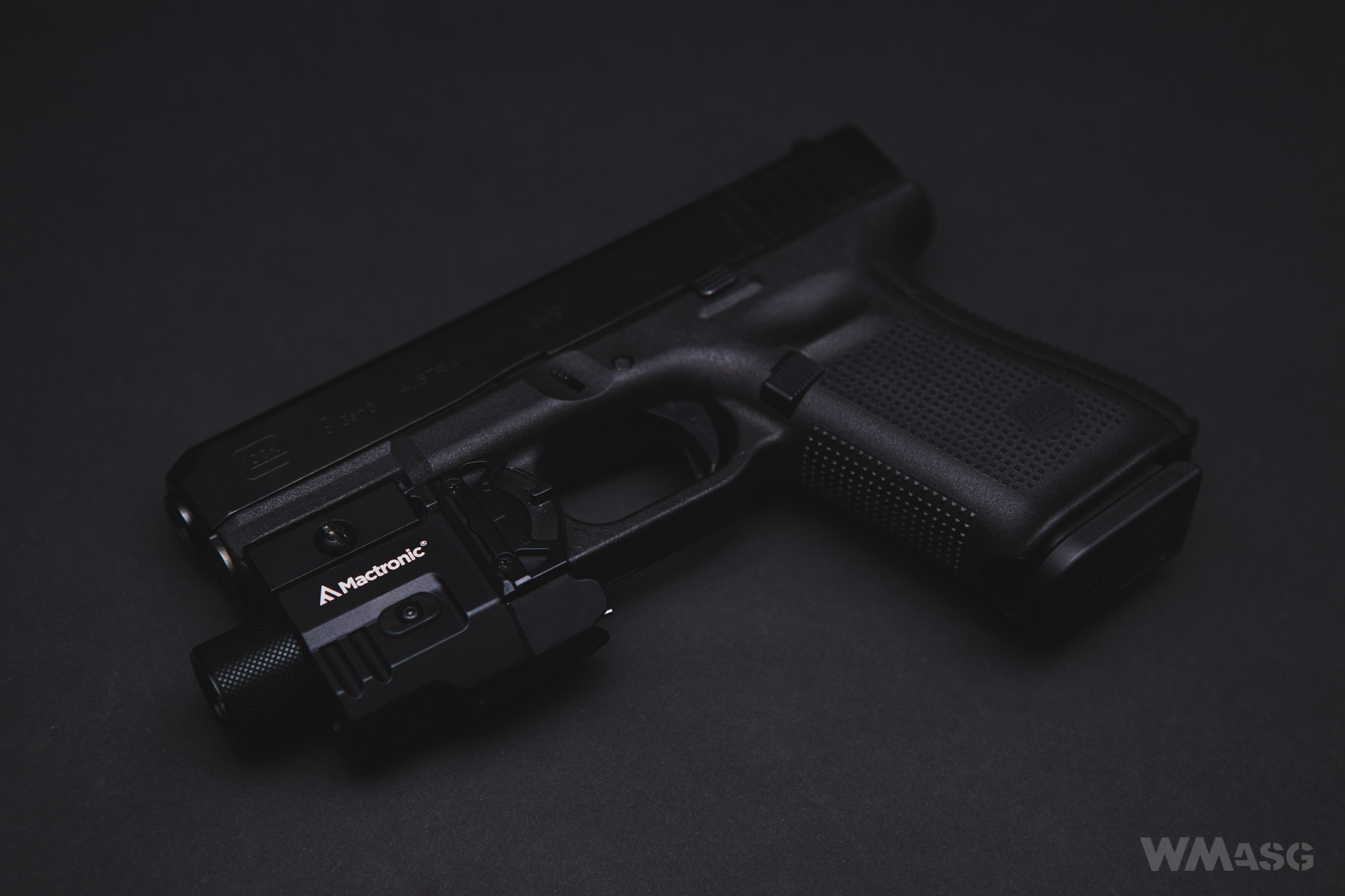
The LSR module mounted on the rifle performed moderately well. In buildings, the luminous flux of the flashlight was intense enough to illuminate the darkness of corridors and the basements at a distance of over 50 meters. Any deficiencies of the light could only be seen in a situation where I pointed it at completely darkened rooms from a distance, standing myself in a well-lit place. When using this equipment on a refile replica (a G36C was used for testing), its operation was difficult. The specific type of switch adapted to a handgun meant that using the temporary mode practically made no sense. I couldn't find any other faults.
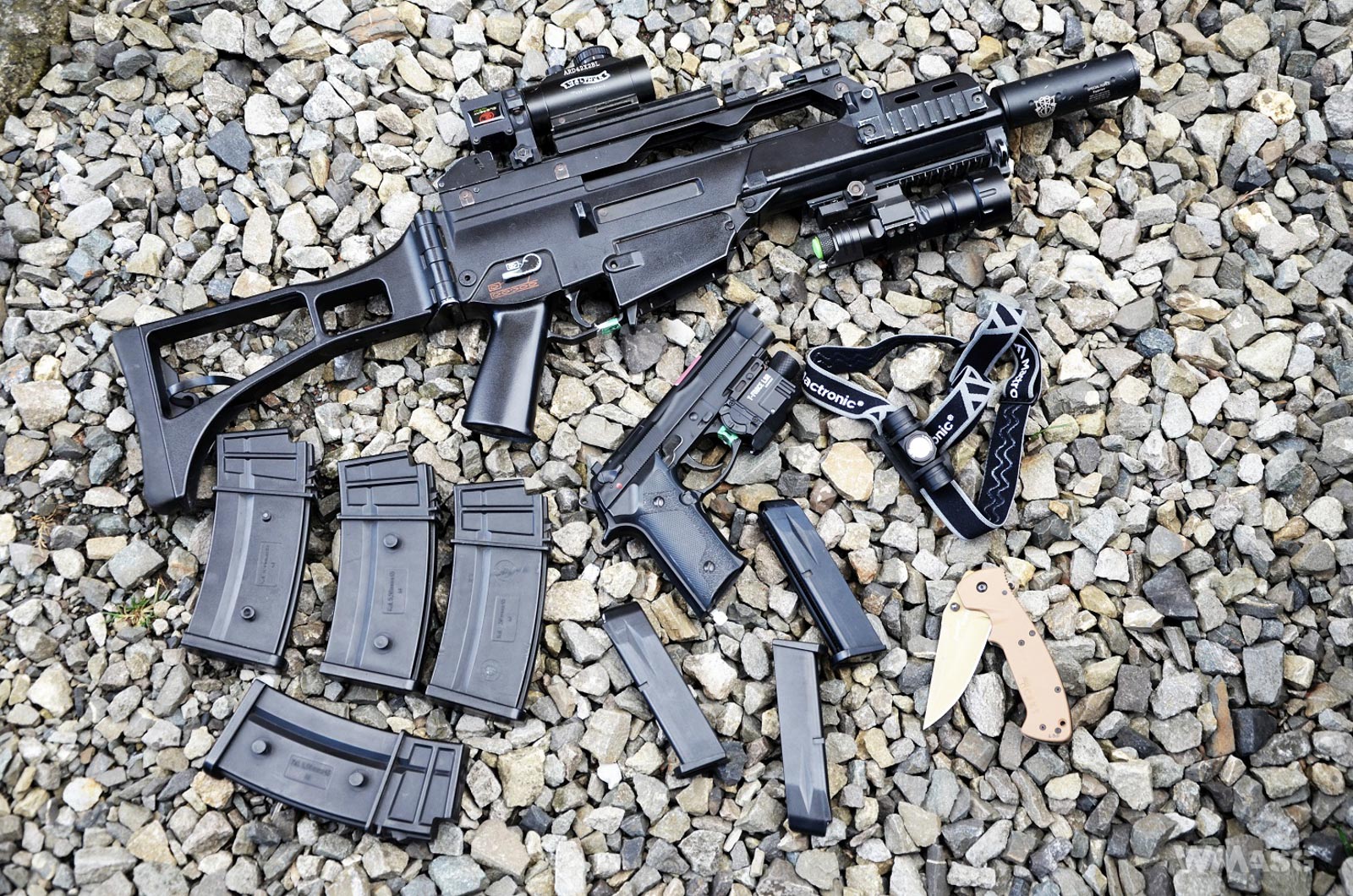
The laser sight worked very well in buildings. The laser dot was sharp and visible at all distances. Small shocks generated by the AEG type replica were unable to change the sights settings. I also went outside to see how the laser pointer would behave there. In full daylight, the spot was visible on objects about 20 meters away. Observing it was also possible at a further distance (up to about 50 meters), but you had to take a good look and the illuminated object had to be in the shade. Trying to asses it objectively, I do not see an effective application for this laser in a forest area in full daylight.
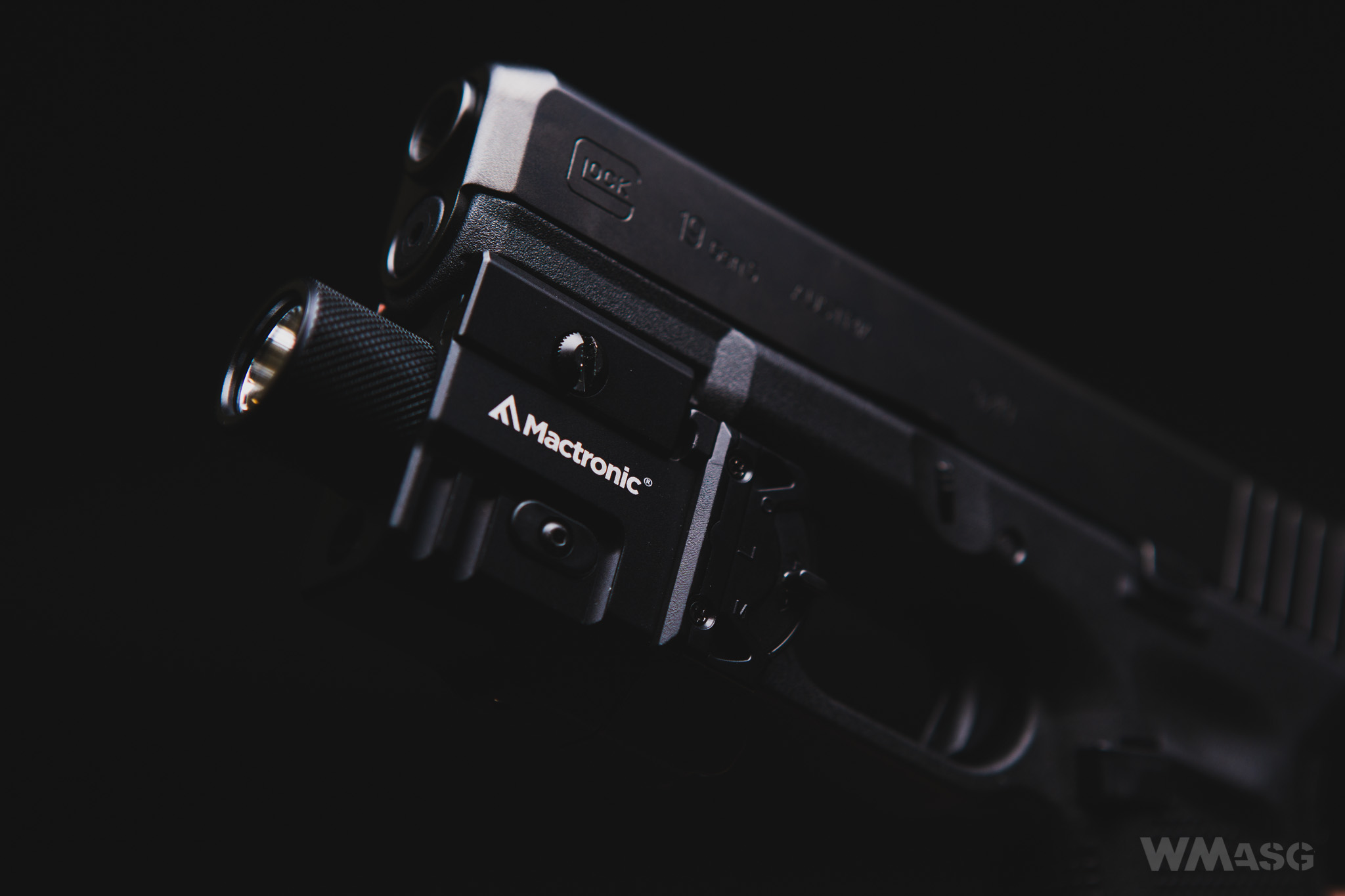
Installing the module onto a replica of a sidearm quickly showed why it was its intended purpose. The small dimensions of the LSR were practically unnoticeable during its use (using a replica of the Beretta M9 pistol). It took some time to get used to using the temporary operating mode (and to position the hand properly on the grip). Of course, if it was necessary to use the replica in one hand, it was only possible to use the permanent mode. It was also slightly difficult to insert and remove the gun from various types of pouches. The best universal solutions here was the use a single AK magazine pouch, but even it did not protect me from one accidental switching of the module on.
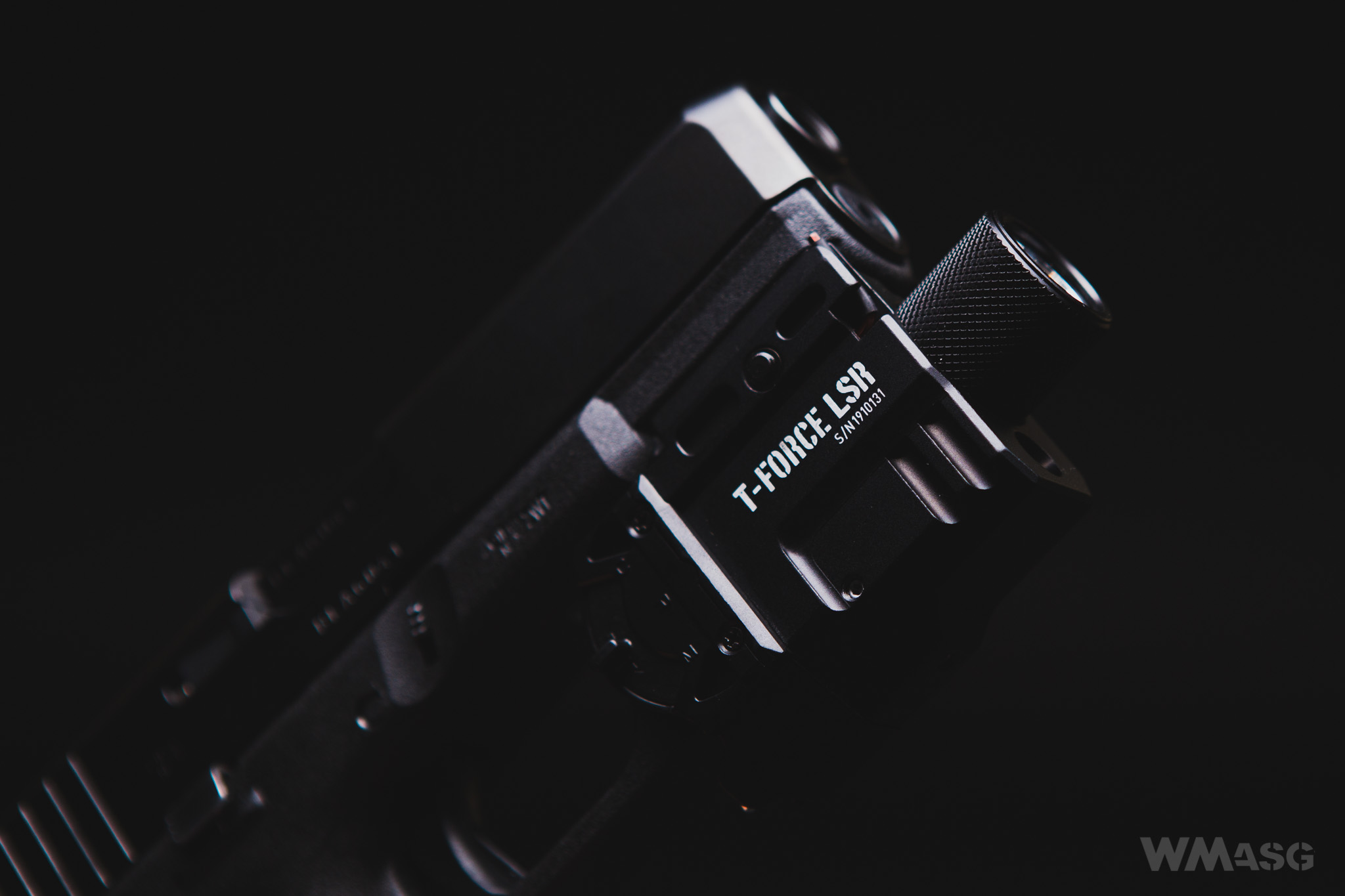
Next, I had the opportunity to test the T-Force LSR during an airsoft game involving a night fight in a forest. I must admit that I'm used to working either without white light or using powerful tactical flashlights. Having the module installed on the main replica, the luminous flux of 550 lumens did not give me full comfort in the context of detecting a potential threat. Theoretically, at a range of about 70 meters, where this flashlight still effectively illuminates the environment, is sufficient to notice an opponent on open ground at the border of the effective range of most popular tuned AEGs. Problems arise with increasing density of bushes and trees in the field. Light reflected from objects in the foreground effectively makes it difficult to see objects in the distance, which are illuminated by a smaller amount of light.
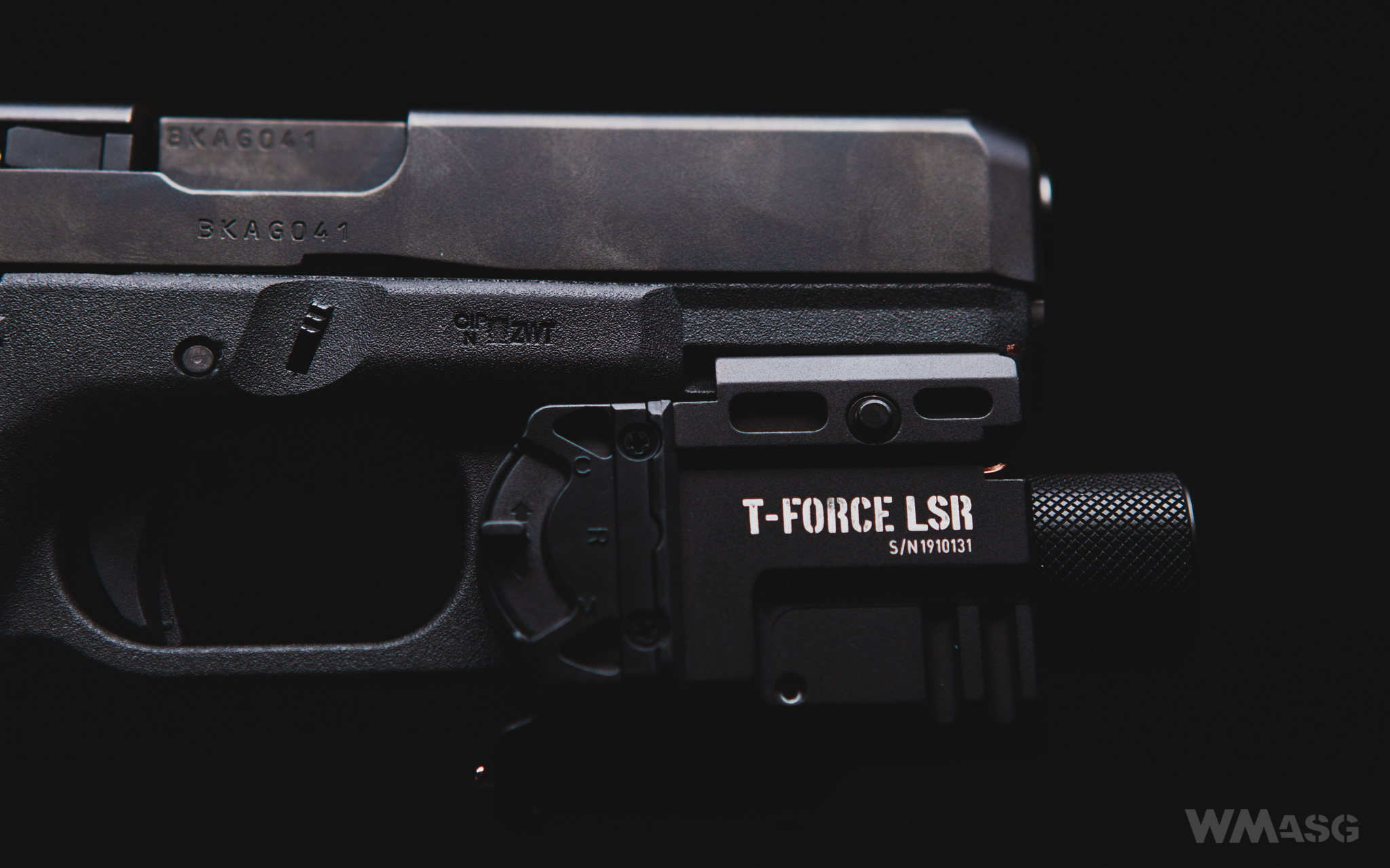
The laser sight itself well at night. The spot is distinct and clearly visible regardless of distance. The laser can be used in many ways, the main two being to aim and to indicate the position of opponents. Also, players with advanced optoelectronic devices, designed for night activities, can sensibly use the module to indicate the location of the opponent to friends deprived of expensive toys.
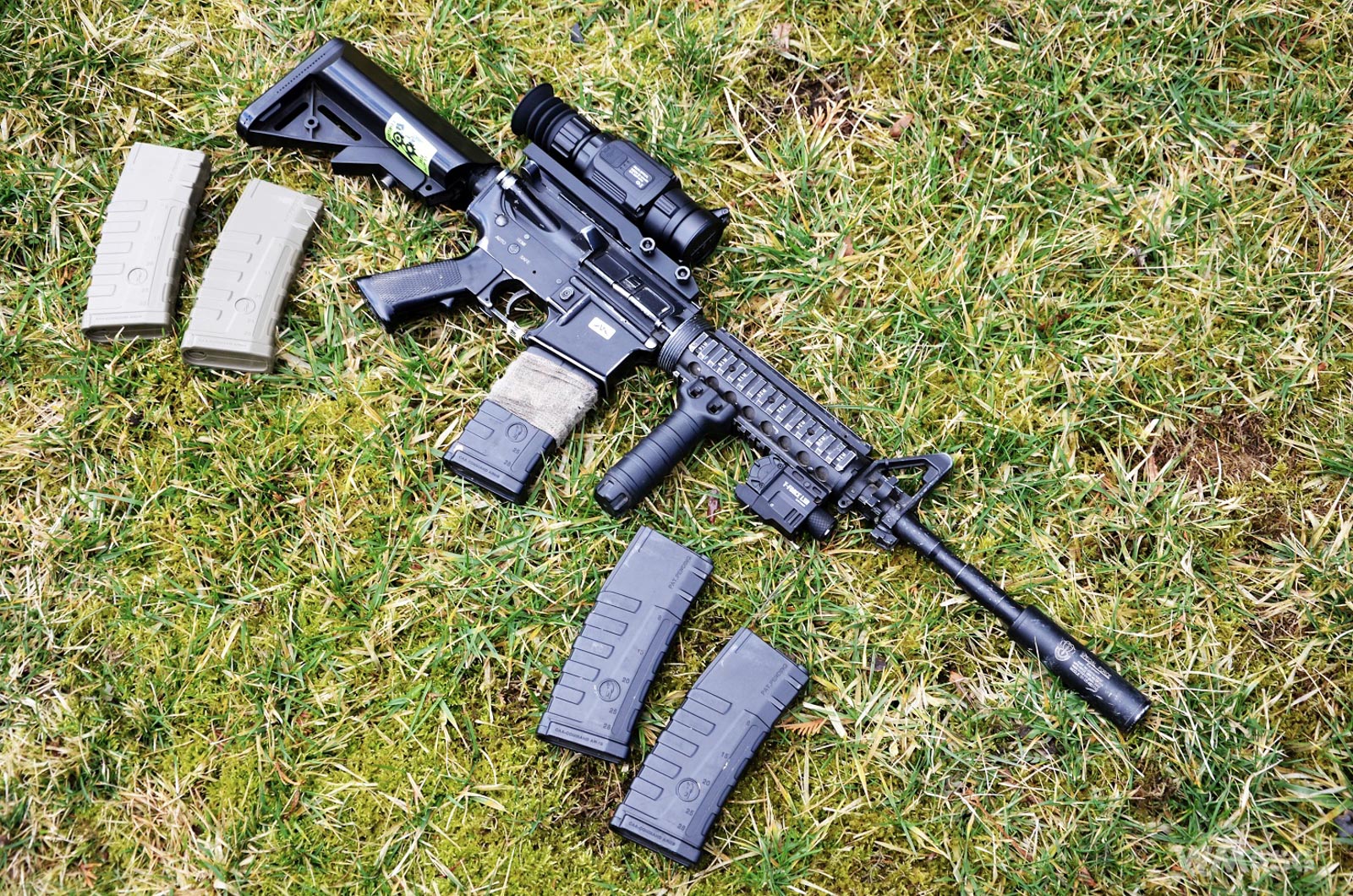
Again, this module made a better impression on me after mounting it on a sidearm replica. If the situation already requires the player to use it at night in a forest area, the Mactronic T-Force LSR will prove to be a very helpful accessory at close range.
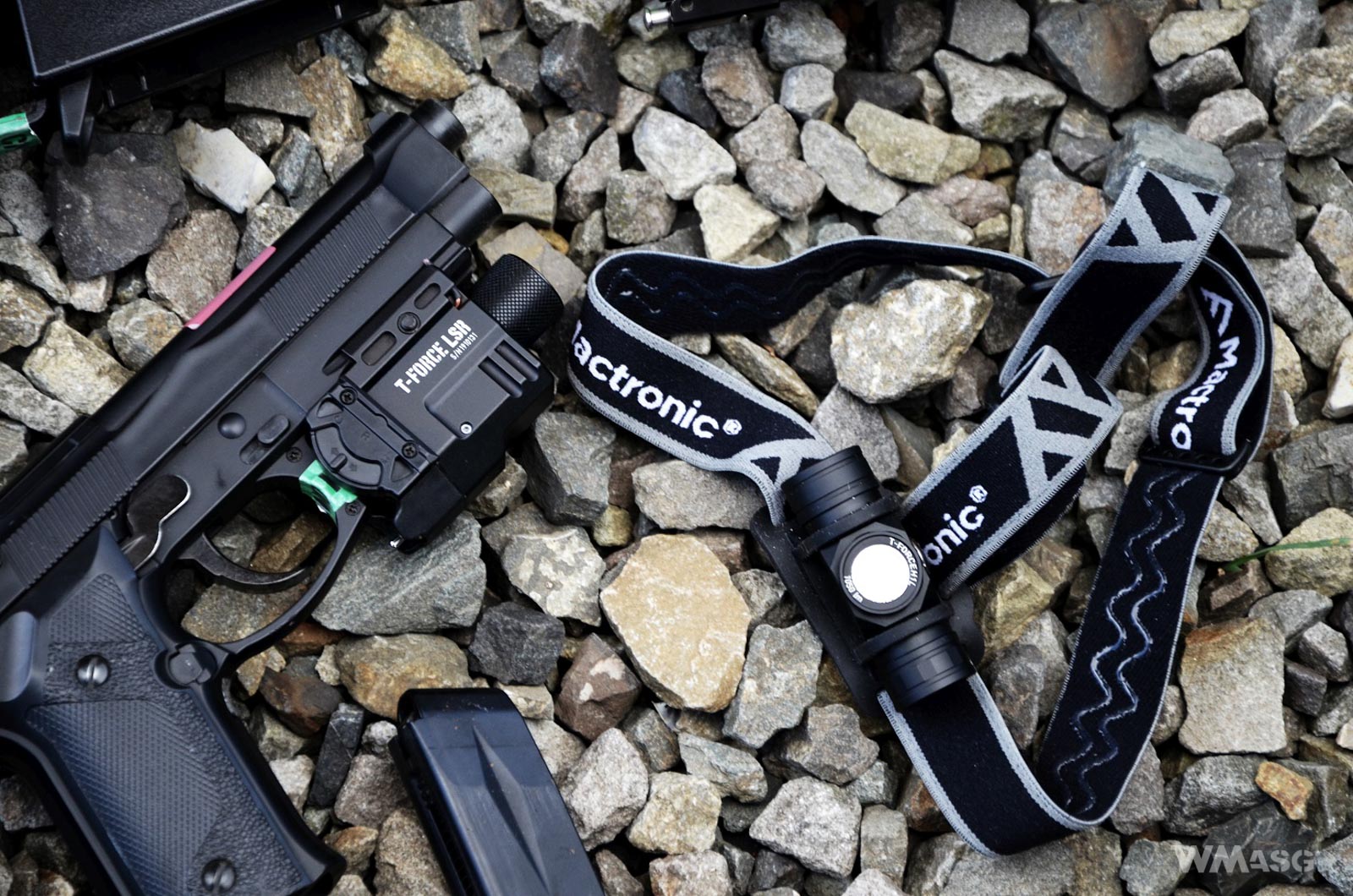
When using a laser sight, it should be remembered, just like an airsoft replica itself, it is also able to cause great, irreversible injury, that is to damage or completely destroy someones eyesight. Use this type of accessory wisely and never point it at someones face. You must also be aware of possible reflections of the beam from surfaces with high reflectivity. Some game organizers prohibit the use of laser sights for the sake of safety of the players. Unlike plastic BBs, it is not that easy to protect yourself against the negative effects of eye exposure to a laser beam.
Fortunately, Mactronic LSR has the ability to turn off the laser sight, which is a key function at game where it is not allowed to use them.
I also had a very brief opportunity to test the LSR flashlight on a 9x19 mm pistol (CZ P-10C). The few shots only showed that the product was working properly. However, the laser sight was set up for an airsoft replica, which, combined with the short duration of the test, did not allow me to clearly determine whether the recoil of the weapon affected its settings. However, after removing the product from the weapon and mounting it on the replica again, with which it was previously used, I noticed only a very slight setting shift, which may result from reattaching the module to the mounting rail. A longer product test which had been planned for another day could not take place due to the epidemiological situation in the country and its consequences.
SUMMARY
The Mactronic T-Force LSR module is another noteworthy product on the list of accessories designed for mounting on a handgun or its replica. In my test I focused mainly on its application in the airsoft world.
Good workmanship, attractive and compact design, basic water resistance, diode emitting a decent amount of light, as well as an integrated laser sight, all these features will certainly arouse interest and increase the efficiency of the equipment used, especially in CQB conditions, irrespective on which sidearm replica the LSR will be mounted. Of course, nothing prevents this relatively fresh Mactronic product from being mounted on a rifle replica. Over time, however, it may turn out that in the era of popularizing tactical flashlights, the LSR will prove not to be as popular.
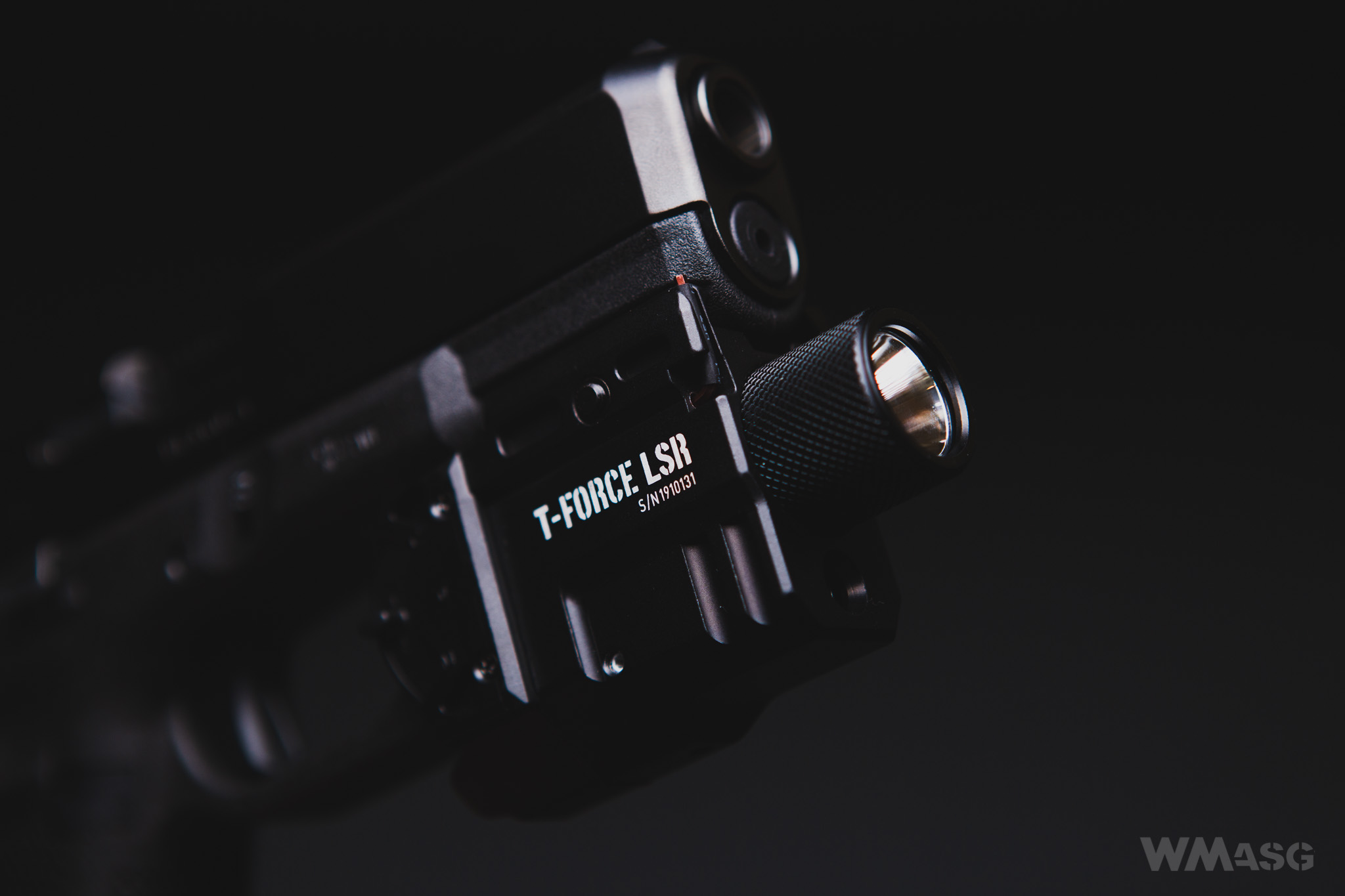
The LSR is also worth considering due to its other advantages: the possibility of using replaceable batteries (which is not a standard in this type of equipment), well designed mounting which allows to use the module on different types of replicas and weapons, or finally, an integrated Allen key compartment for laser sight adjustment - you can always have it with you.
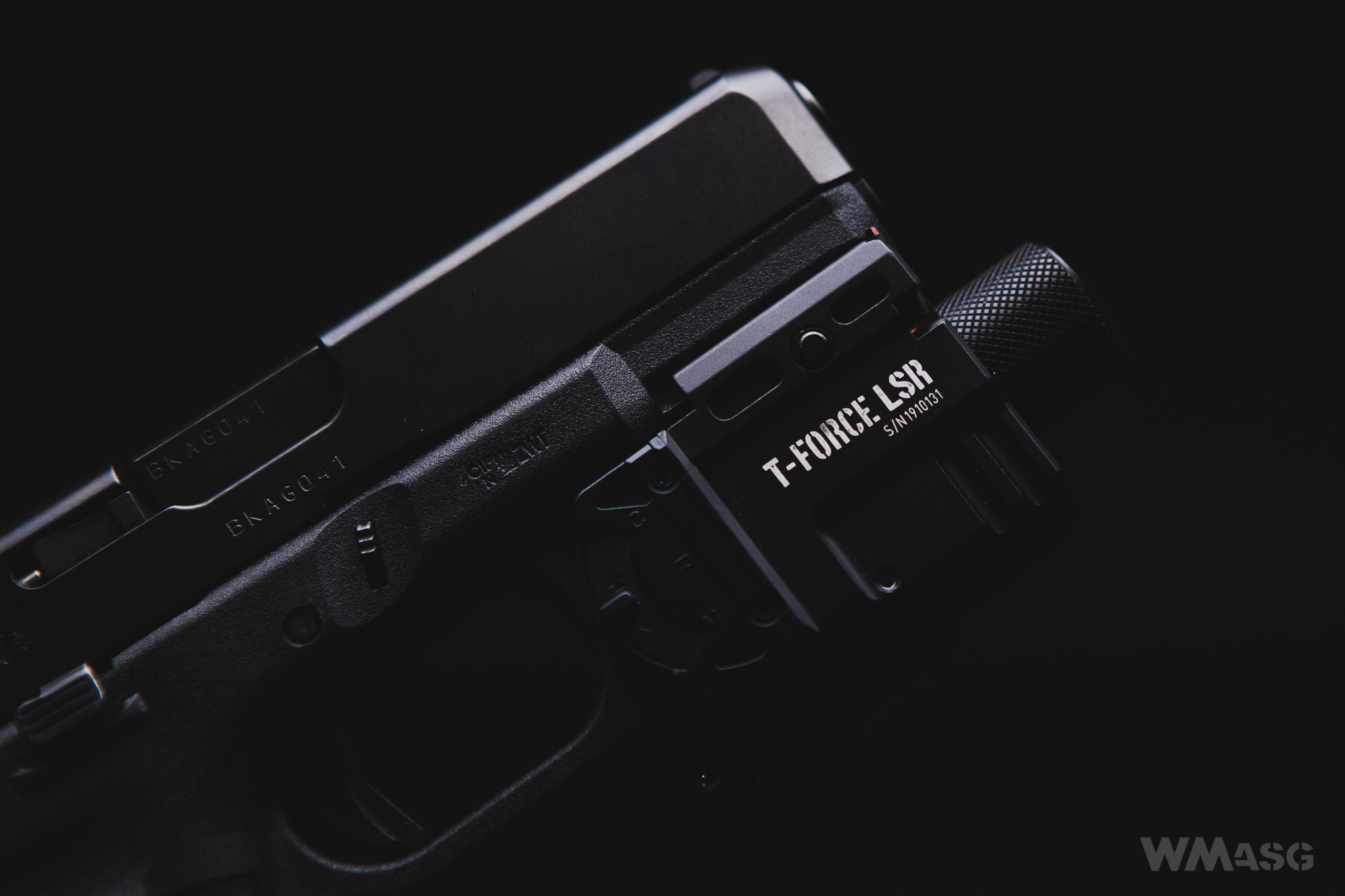
When choosing this type of module for your sidearm replica, you can easily add the Mactronic T-Force LSR to your list of interests, as a simple and intuitive to use product.
We would like to thank the <u>Mactronic.pl</u> company for supplying us with this module for testing.
PROS:
- aesthetic design and compact construction;
- possibility of powering it with a replaceable battery;
- integrated Allen key storage;
- comfortable operation with gloves;
- for right-handed and left-handed users;
- the ability to adapt the mount to different types of replicas and weapons;
- recoil resistance: a product intended for use on firearms;
- the ability to turn off the laser sight or use it exclusively;
- a decent luminous flux;
- a basic level of water resistance, typical for products of this class;
- intuitive operation.
CONS:
-a relatively high price;
- no strobe mode;
- too low luminous flux value to give an advantage during night forest games;
- the flashlight does not achieve full performance when using a battery;
- a proper battery is not included in the set;
- despite the well designed switch, I happened to drain the battery by accidentally turning the equipment on;
- requires a flat screwdriver for assembly;
- IPX4 is actually a standard in this class of products ... but could it not be higher one?

